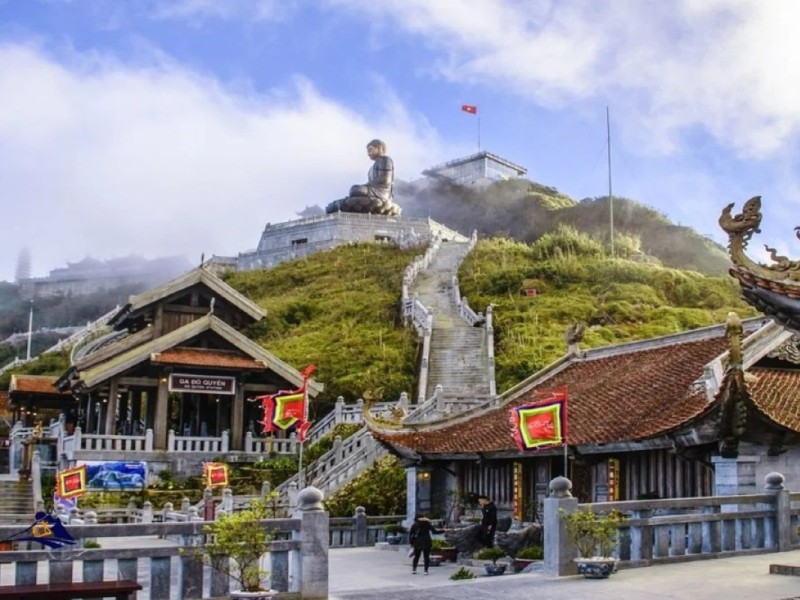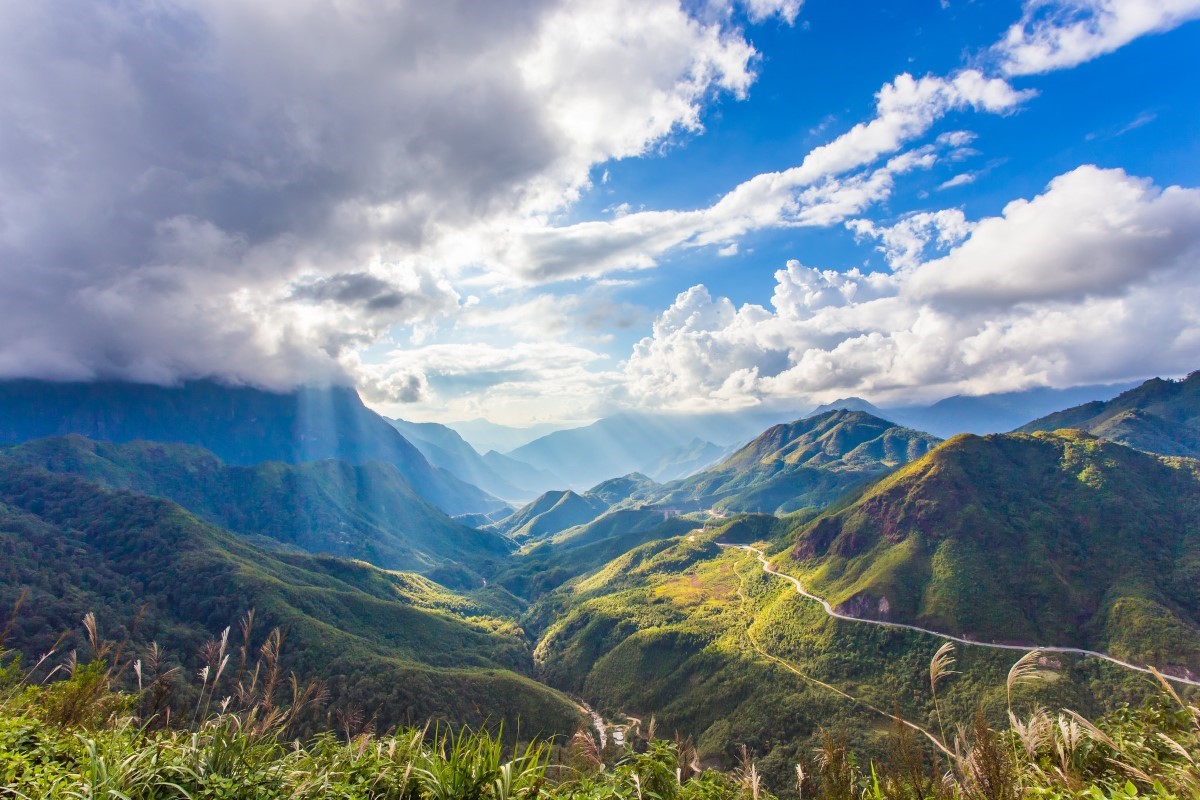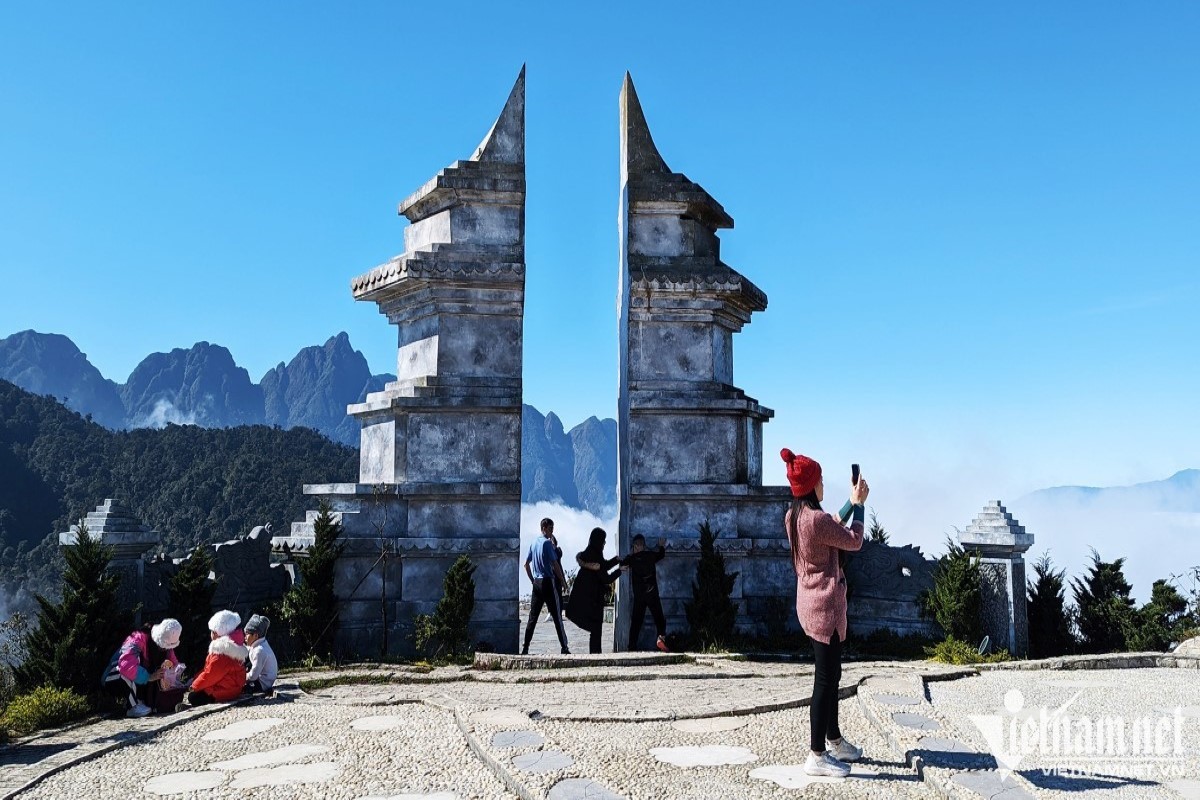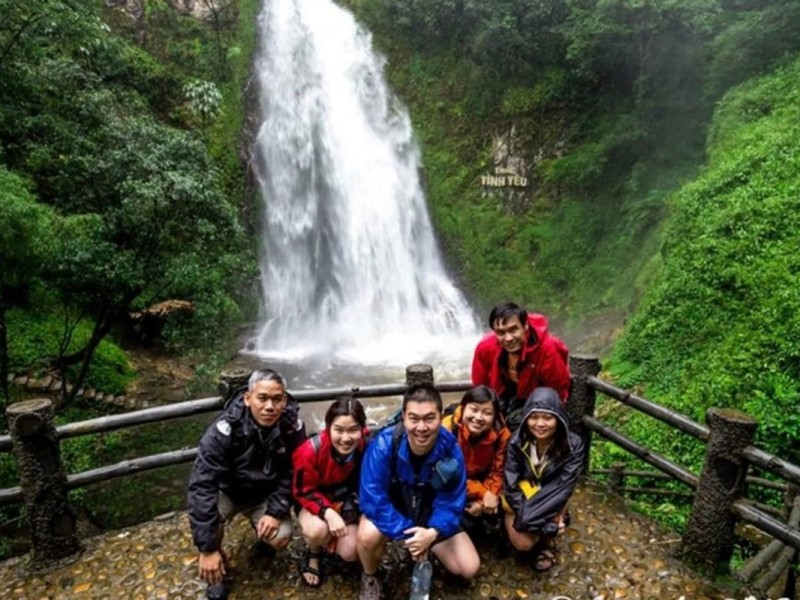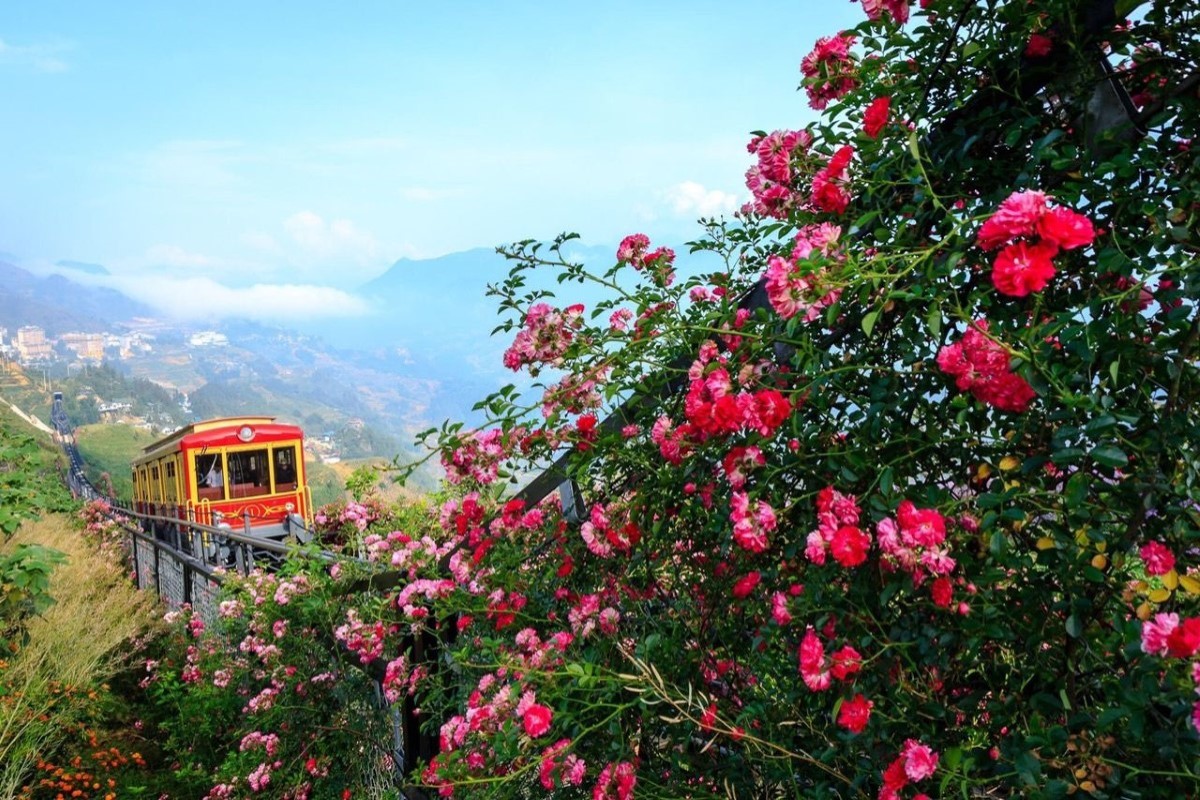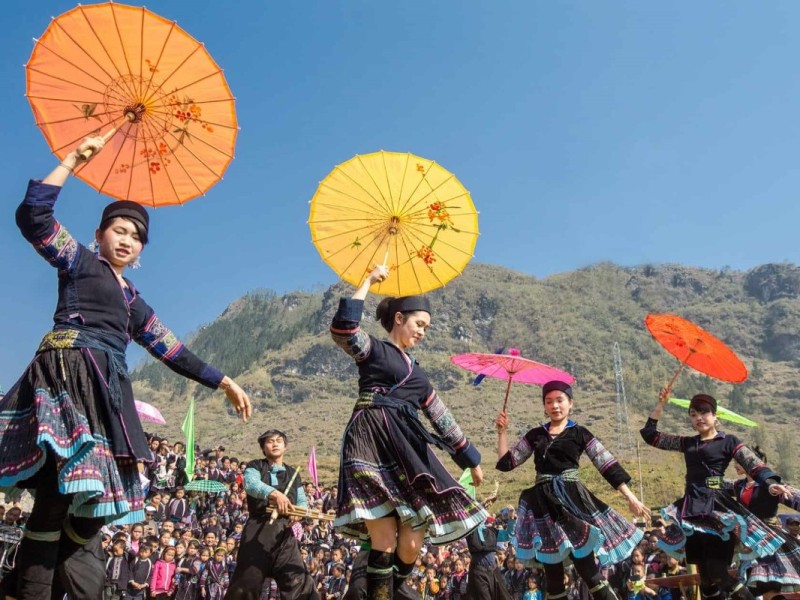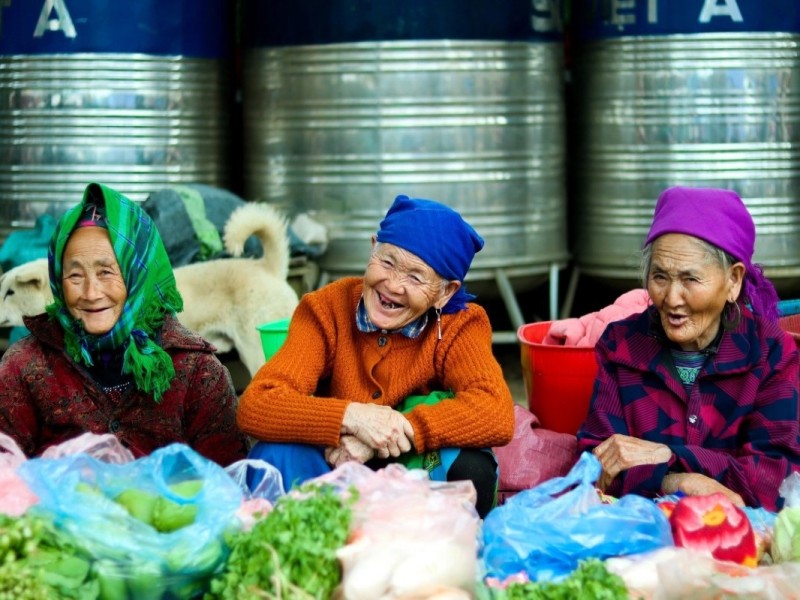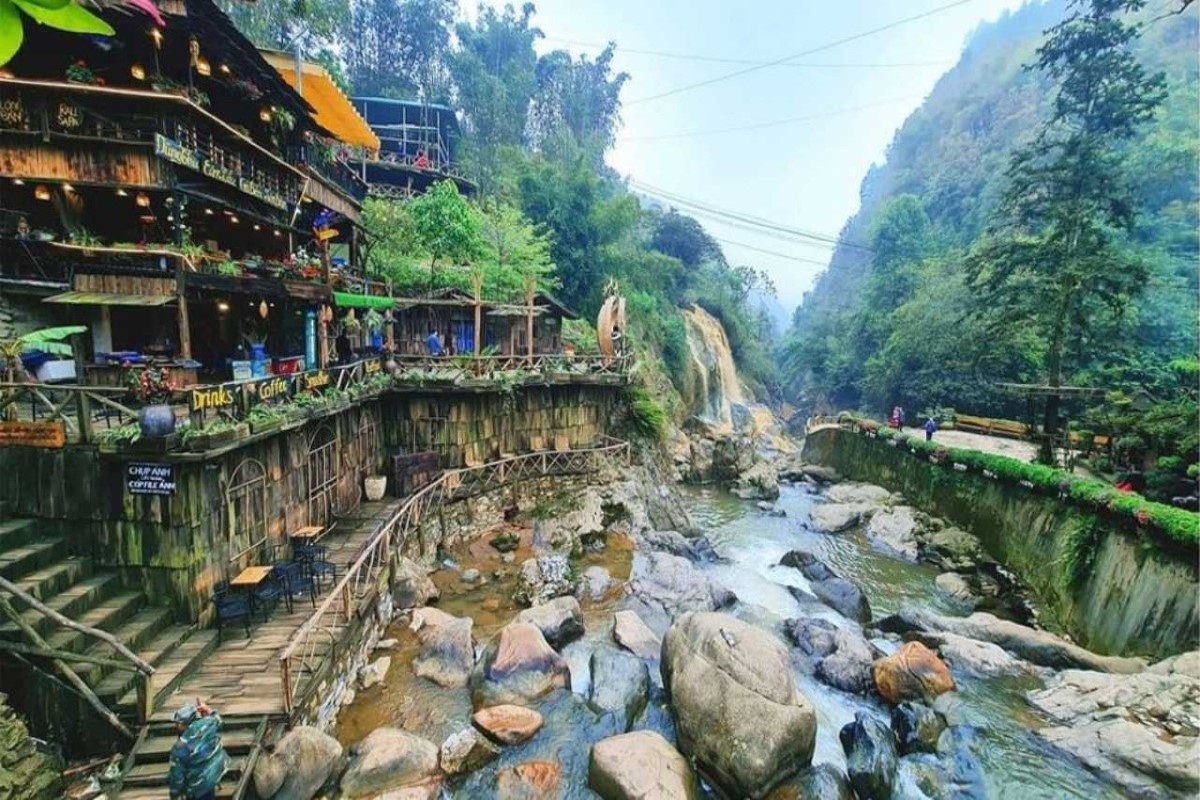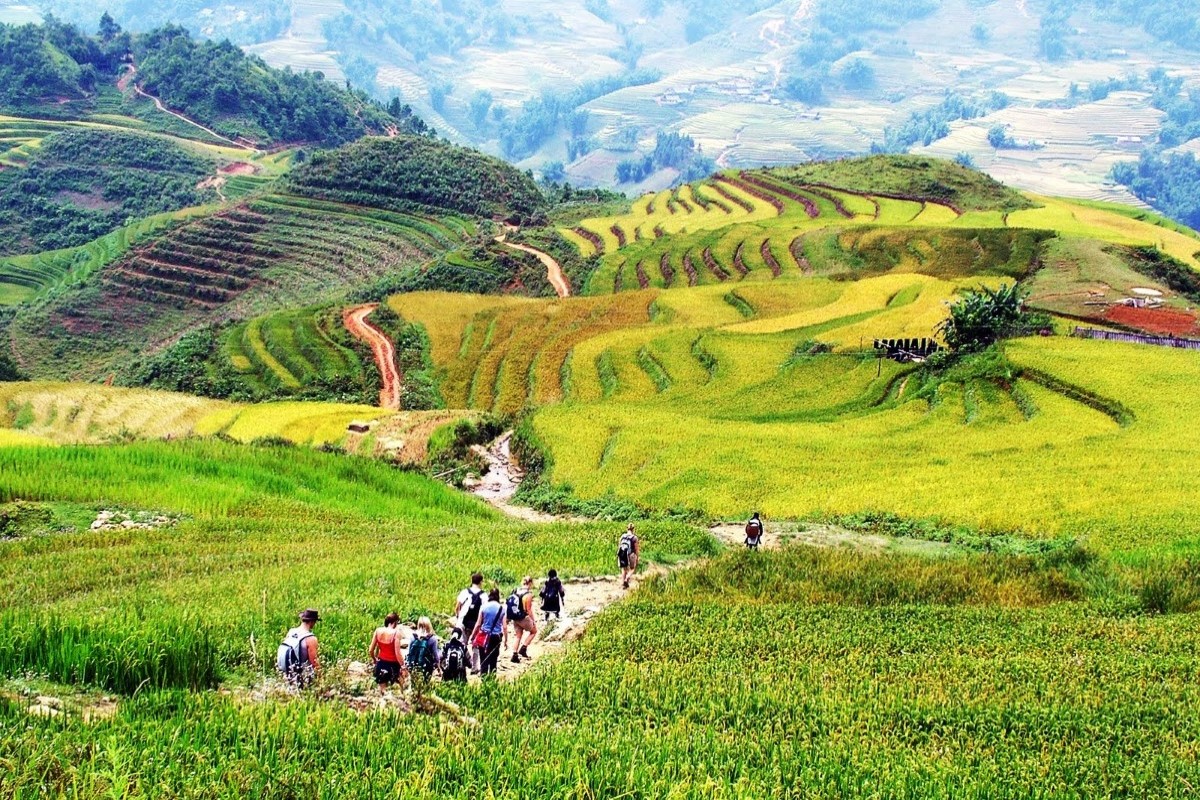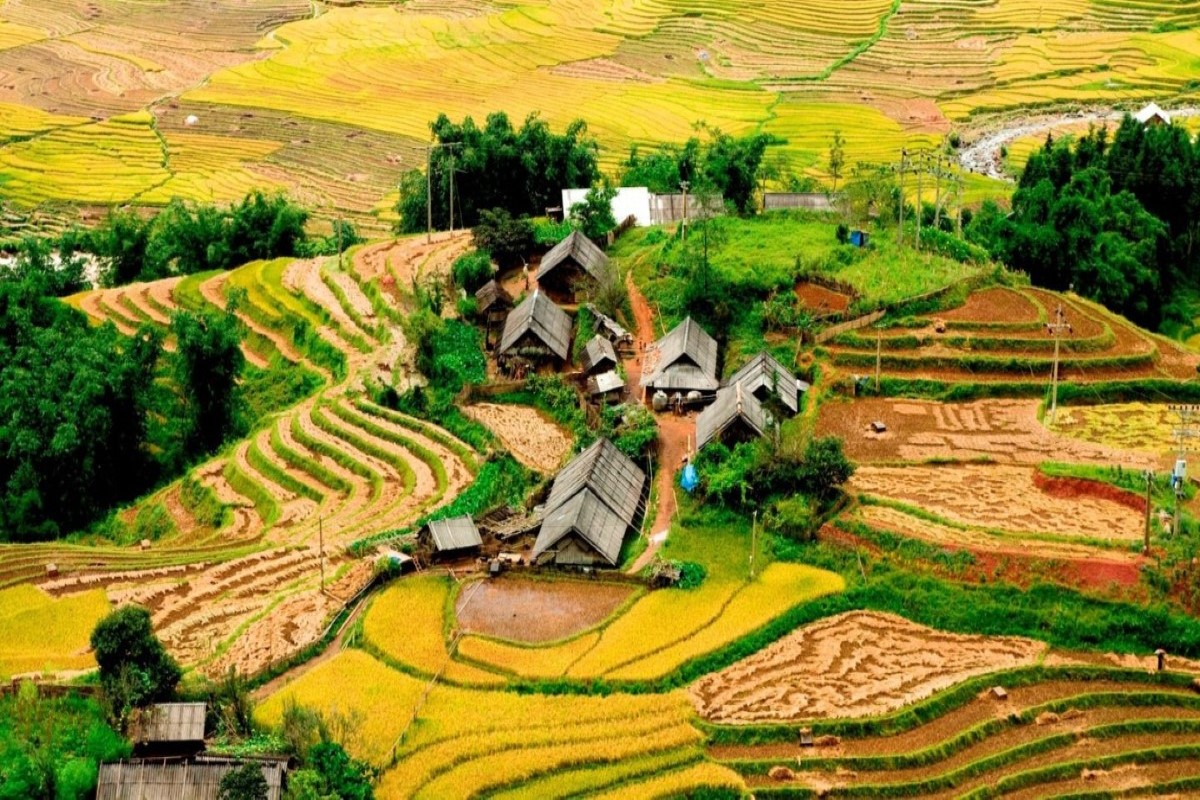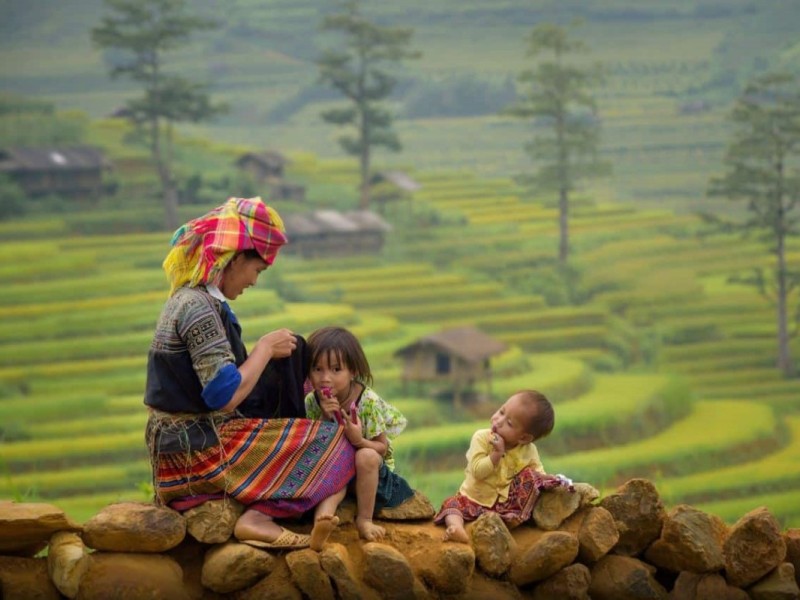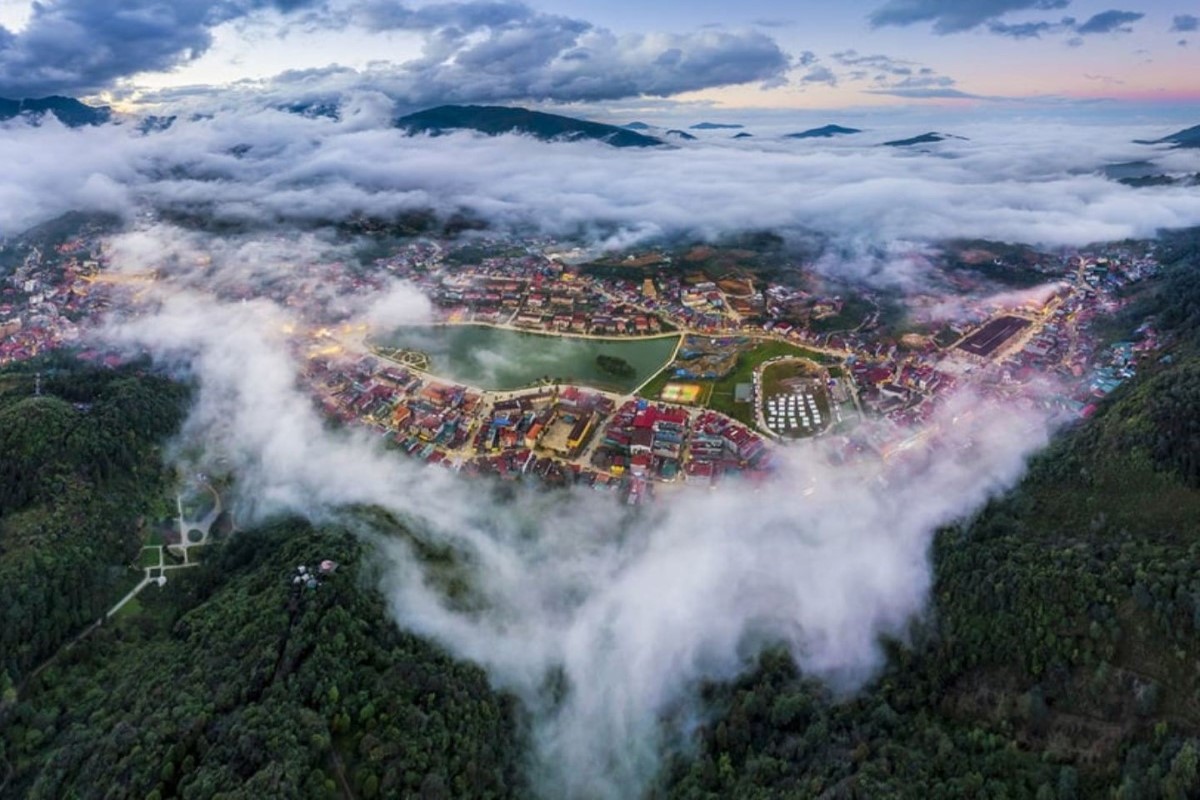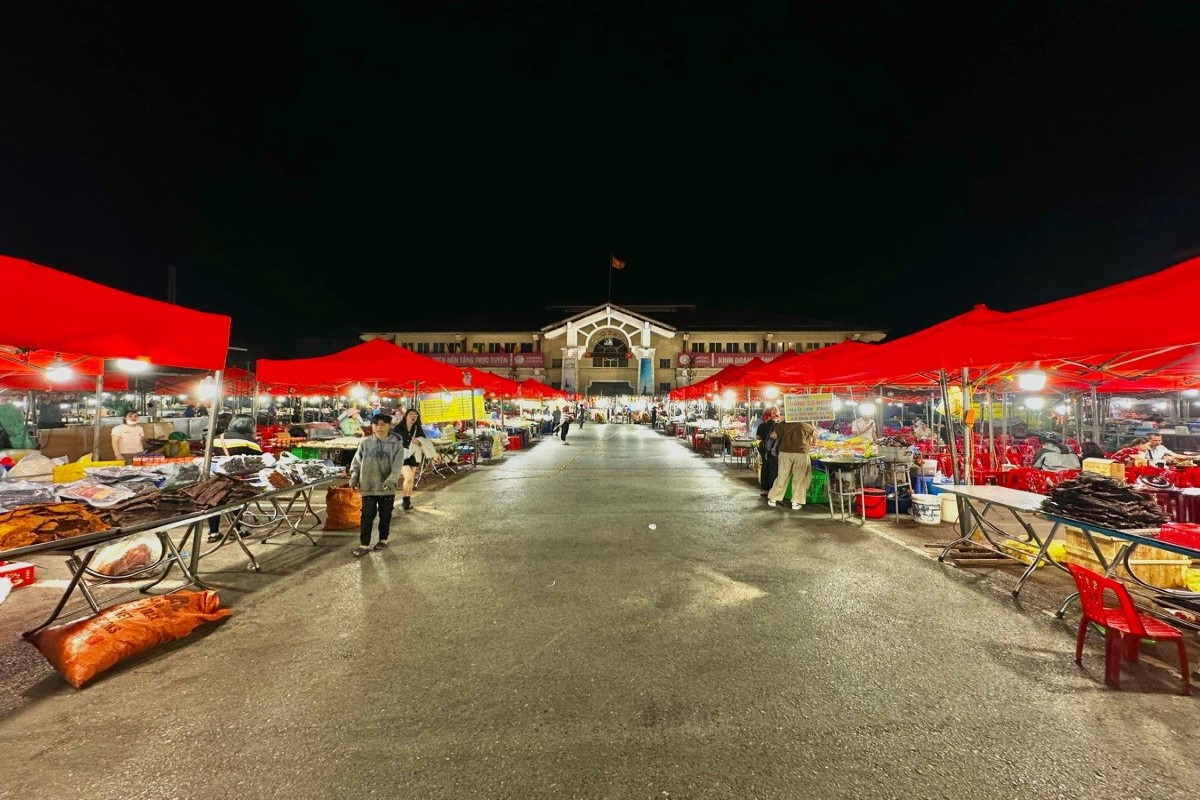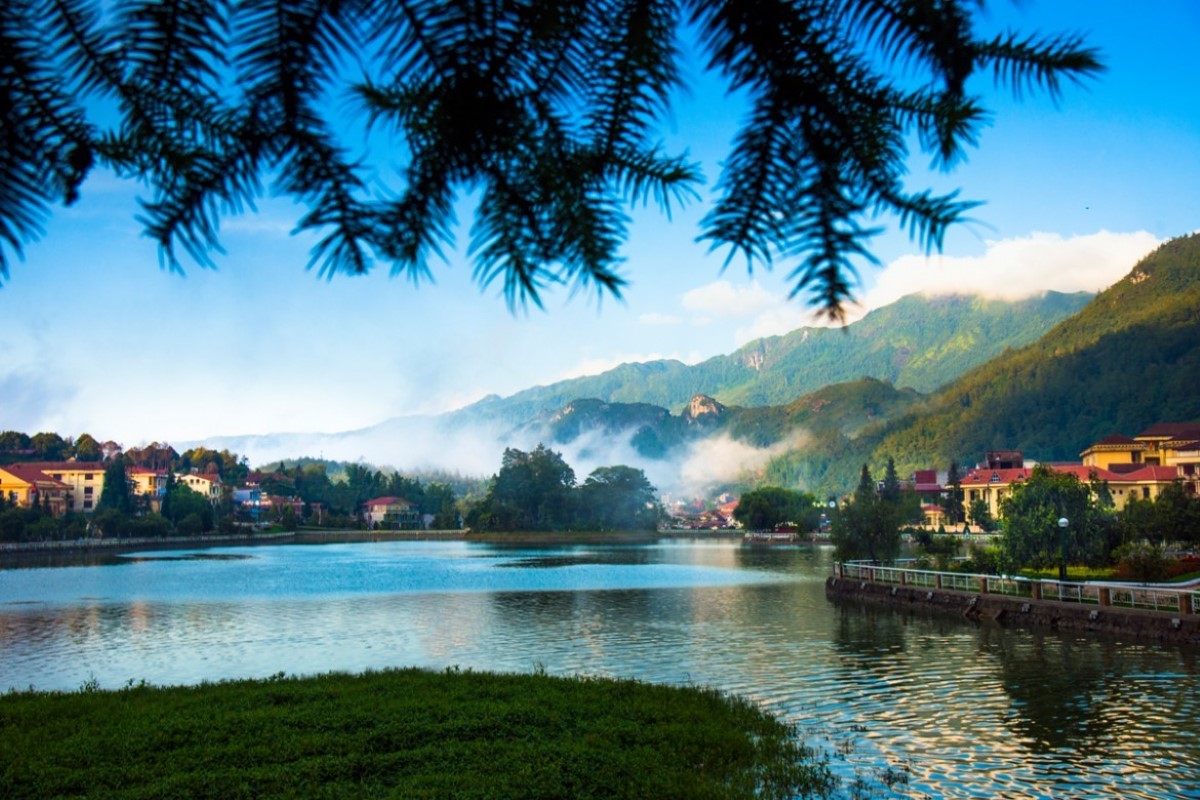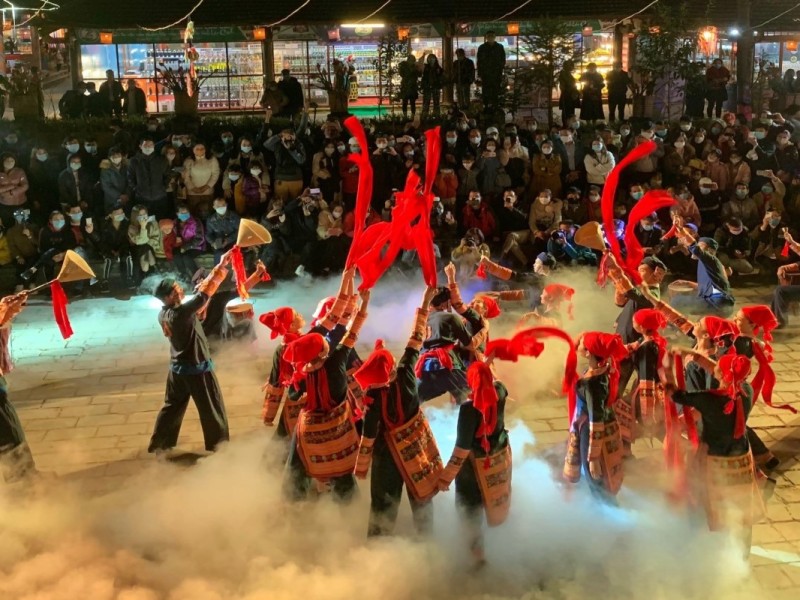Lao Chai Village Sapa: Complete Travel Guide, Top Activities & Visitor Tips
Lao Chai Village Sapa offers visitors an authentic experience in northern Vietnam, with breathtaking rice terraces, vibrant Black Hmong culture, and unique homestays. Travelers can explore stunning landscapes, join community activities, and enjoy traditional cuisine, making Lao Chai Village a memorable destination for cultural immersion and natural beauty.
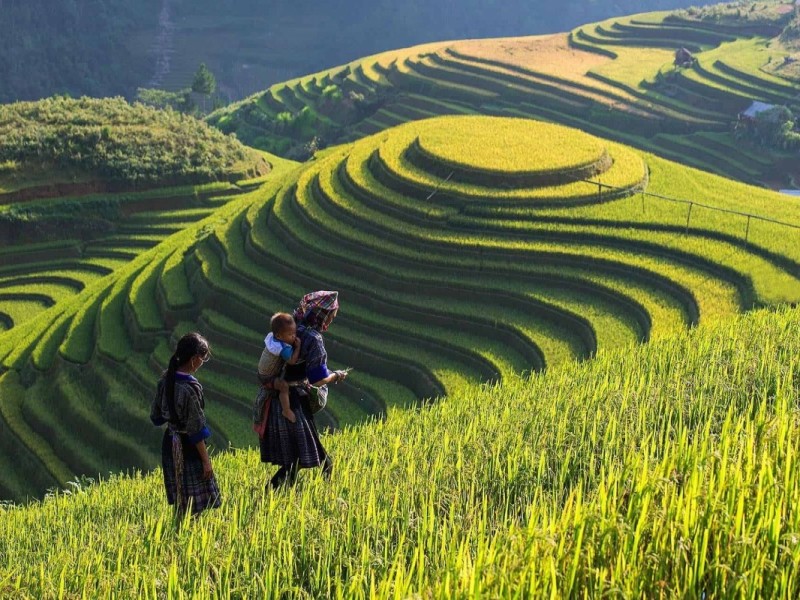
Why Lao Chai Village Should Be On Your Travel List
Tucked deep in the green embrace of northern Vietnam, Lao Chai Village Sapa calls to those craving a genuine, off-the-beaten-path adventure. The moment you arrive, it’s clear this isn’t the polished, commercial side of Sapa. Here, life unfolds at its own ancient rhythm—rice terraces spill down misty hillsides, children race along narrow village paths, and the air carries the earthy scent of wet fields and wood smoke. If you’ve ever dreamed of escaping the crowds and discovering an authentic village where tradition thrives, this is where your story should begin.
It’s the intricate, living tapestry of Lao Chai Village Sapa that sets it apart from other destinations in Vietnam. You won’t just see beautiful scenery—you’ll become part of the daily pulse of rural life. From the patchwork of rice fields that change color with the seasons, to the warm welcome of Black Hmong families inviting you into their homes, every moment here feels intimate and unfiltered. Travelers come seeking beauty and culture, but what stays with you is the deep sense of connection—with the land, the people, and yourself.
Set your sights on Lao Chai Village Sapa if you want more than just stunning photos. This is a place for slow exploration, where curiosity is rewarded with small discoveries and sincere hospitality. If you’re ready to experience the soulful side of Sapa, start planning your journey to Lao Chai. Let the next chapter of your travel story begin here.
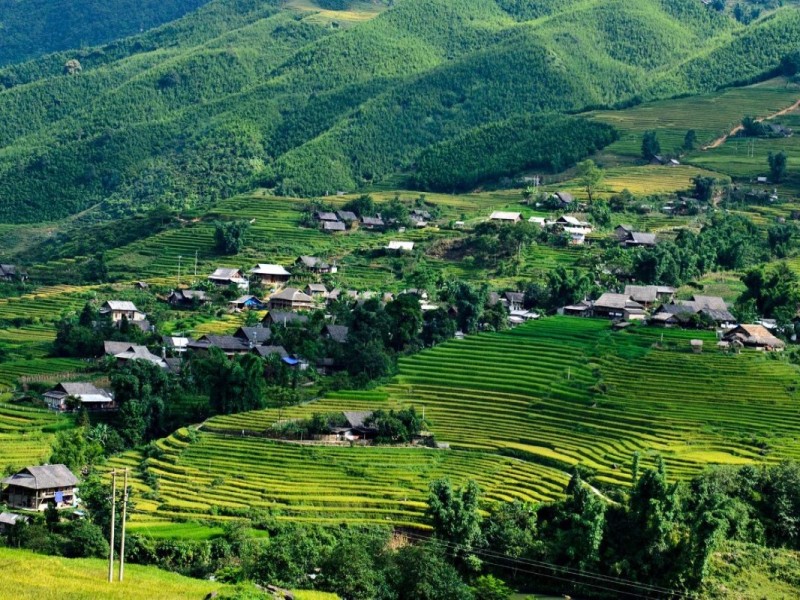
What Makes Lao Chai Village Unique
You can travel across northern Vietnam and not find another place quite like Lao Chai Village Sapa. This is a world apart, where ancient traditions shape everyday life, and the rhythm of the fields marks the passing of time. What makes Lao Chai stand out isn’t just its postcard views but the richness of its authentic Sapa experience.
In Lao Chai Village Sapa, you’ll step into a living story. The houses are built from earth and wood, set along stone paths, and decorated with handmade textiles dyed deep blue in indigo vats. Here, villagers greet you with shy smiles, children practice their English, and you’ll often find a grandmother embroidering a piece of traditional clothing by the fire. It’s the little things—the call of a rooster at dawn, the smell of woodsmoke, the taste of home-cooked Hmong food—that make this village unforgettable.
If you’re searching for what makes Lao Chai Village unique, look to the quiet moments: sharing tea with a host, learning a few words of the local language, or simply sitting beside a field at sunset. These are the hidden gems in Sapa—the moments that make Lao Chai the heart of true rural Vietnam.
There’s a reason travelers leave changed. Lao Chai isn’t just a destination; it’s an invitation to connect with heritage, landscape, and people in a way that few places can offer. Start imagining your own story of discovery in Lao Chai—and let us help you make it real.
Stunning Rice Terraces and Natural Beauty
Lao Chai Village Sapa is famous for some of the most breathtaking rice terraces in Vietnam, and they’re worth every step it takes to reach them.
- Rice Terrace Views: Wide, curving fields flow down the slopes in a mosaic of greens and golds, changing with each season.
- Best Photography Spots Lao Chai: Sunrise and sunset paint the landscape in soft golds and pinks—find a hilltop for panoramic shots you’ll treasure.
- Scenic Viewpoints: Short walks from the main village reveal hidden vistas and quiet places to pause.
- Seasonal Landscapes: In May, terraces fill with water and reflect the sky; in September, the fields glow gold with ripe rice.
- Panoramic Sapa: The surrounding mountains frame every photo, with clouds drifting by and wildflowers brightening the trails.
No matter the season, Lao Chai’s landscapes leave an impression that lingers. Bring your camera and an open mind—you’ll find both beauty and peace here.
Don’t just see the views—become part of the scene. Start planning your trip to Lao Chai Village Sapa for a true feast for the senses.
Vibrant Black Hmong Culture and Traditions
The heart of Lao Chai Village Sapa is its people—especially the Black Hmong community whose traditions give the village its unique character.
- Black Hmong Culture: Distinctive indigo-dyed clothing, elaborate silver jewelry, and daily rituals keep centuries-old customs alive.
- Traditional Hmong Customs: Storytelling, communal meals, and colorful festivals mark the year; every guest is welcomed as family.
- Sapa Ethnic Groups: While Lao Chai is mainly Hmong, you’ll meet other groups too, each with its own language and art.
- Cultural Heritage: Skills like embroidery, weaving, and natural dyeing are passed down through generations.
- Handicrafts Sapa: Handmade textiles and crafts can be found in local homes and markets—supporting families and preserving culture.
Visitors quickly realize that a trip to Lao Chai is more than sightseeing. It’s a chance to learn, share, and celebrate the living heritage of Sapa.
Show respect, ask questions, and let the people of Lao Chai Village Sapa be your guides to a richer, deeper understanding of Vietnam’s cultural mosaic.
Ready to see what makes this village extraordinary? Plan your visit to Lao Chai Village Sapa and discover a world where culture, landscape, and heart are one.

The Spirit of Community-Based Tourism
In Lao Chai Village Sapa, every visitor becomes part of a bigger story—one rooted in empowerment and genuine partnership with the community. Unlike destinations that cater to mass tourism, this village has built its identity on sustainable values and positive impact. When you travel here, your presence supports community tourism benefits that ripple through daily life.
Every homestay booking, local guide hire, and craft purchase helps create jobs and opportunities for the people who call Lao Chai Village home. Instead of profits leaving the region, your spending goes straight to families, school initiatives, and community improvements. This is more than a trend; it’s a movement in responsible travel that ensures the unique character of the village thrives for generations to come.
When you choose sustainable travel Lao Chai, you’re joining a new way of exploring Vietnam. Want practical steps for responsible travel? Start by asking local hosts for their favorite spots, choosing guided walks led by residents, or supporting projects that reinvest in the village. These small choices lead to meaningful change.
If you believe your travel should make a difference, let Lao Chai Village Sapa show you how tourism can empower and uplift. Plan your visit with purpose and become part of this ongoing story.
Authentic Homestays and Local Family Life
Choosing a homestay in Lao Chai Village Sapa is about stepping into real village life—something a standard hotel can’t match. Here’s what sets these stays apart:
- Lao Chai Homestays: Family-run homes where you’re treated as a guest, not a customer. Expect genuine welcomes and lasting friendships.
- Authentic Sapa Accommodation: Rooms are simple, with comforts like warm blankets and mosquito nets, but it’s the shared spaces—kitchens, gardens, communal tables—where connections happen.
- Home-Cooked Meals: Every day brings traditional dishes made with ingredients grown in the valley. Meals are often shared, with stories and laughter around the table.
- Cultural Exchange: Hosts love to share their customs, from embroidery and farming to music and festivals. Ask questions, join in, and you’ll leave with new skills and deeper understanding.
- Family-Run Stays Sapa: By choosing these homestays, you support families directly, ensuring your travel dollars have real, lasting impact.
Staying in a homestay means your experience is shaped by kindness, authenticity, and true immersion. If you want your trip to Lao Chai Village Sapa to be memorable and meaningful, start with a family-run homestay and let village life welcome you in.
Opportunities for Cultural Exchange
In Lao Chai Village Sapa, visitors find countless ways to engage with locals and experience daily life on a deeper level. Here’s how you can create lasting memories through meaningful exchange:
- Cultural Immersion Sapa: Join family meals, learn to cook Hmong dishes, or simply help with daily chores like gardening or animal care.
- Learning Local Crafts: Take part in workshops on traditional embroidery, indigo dyeing, or weaving. These sessions are hands-on and led by skilled artisans.
- Hmong Language Basics: Try picking up a few local words and phrases—hosts will happily teach you, and it’s a sign of respect.
- Ethical Tourism Lao Chai: Be mindful of customs—ask before taking photos, dress modestly, and always greet elders with a smile.
- Responsible Travel Tips: Support small cooperatives, purchase handmade souvenirs directly from artisans, and seek out tours that prioritize cultural sensitivity.
By embracing these experiences, you’ll forge real connections and contribute to the well-being of the community. Your respectful curiosity and willingness to learn make every visit to Lao Chai a two-way journey.
Start your journey with an open mind, and let the people of Lao Chai Village Sapa show you the true meaning of welcome.
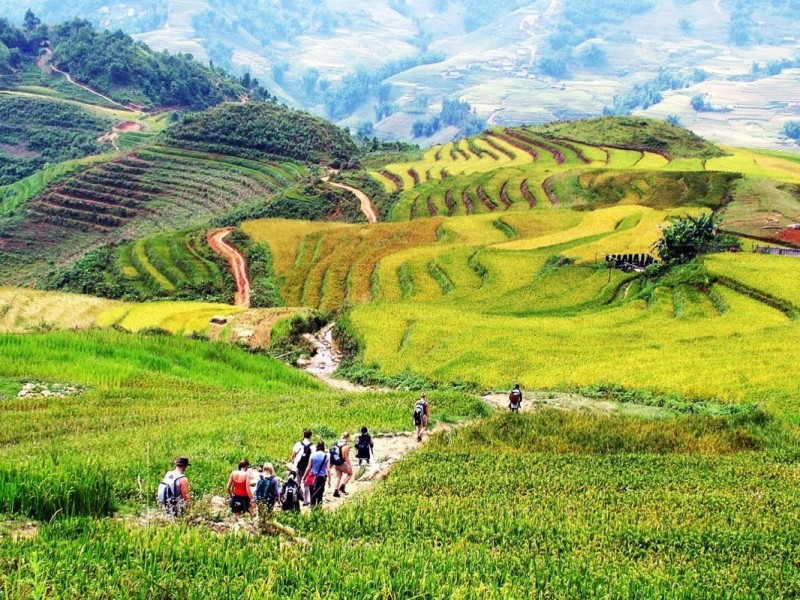
Exclusive Insider Impressions
Every traveler who spends time in Lao Chai Village Sapa comes away with stories that never make it into ordinary guidebooks. What sets this place apart isn’t just the scenery, but the richness of personal connection and wisdom passed quietly from host to guest. If you’re searching for local secrets Lao Chai or those rare moments that only insiders know, this is where you’ll find them—woven through personal stories, shared meals, and quiet walks down forgotten trails in Sapa.
Ask any family here about their favorite village spots and you’ll get a handful of places you’d never find on a map. There’s a hillside above the rice terraces where, just before sunset, you can watch the whole valley glow golden. Or the tiny tea house run by an elderly Hmong woman who remembers when the first travelers arrived, and whose laughter fills the room as she pours another cup. These are the kinds of memories you carry home—unique, unrepeatable, and beyond the guidebook.
If you want your visit to Lao Chai Village Sapa to feel truly special, follow the whispers of local wisdom and be open to unplanned adventures. Those are the stories you’ll share long after you leave.
First-Hand Stories and Hidden Gems from Local Hosts
To truly understand the heart of Lao Chai Village Sapa, listen to the voices of those who know it best. Here are some treasured insights shared directly from local hosts:
- Hidden Gems in Lao Chai: “Wake up before dawn and follow the footpath east. There’s a quiet spot by the stream where the sun rises over the rice fields, and you’ll have it all to yourself.”
- Host Recommendations Sapa: “If you want to try real Hmong food, ask your host about a dish made with wild mountain greens—most families have their own special recipe.”
- Storytelling: “Some evenings, we gather outside and share folk tales. Don’t be shy—ask to join. Laughter and stories are our favorite ways to welcome new friends.”
- Hospitality: “We believe every visitor should leave with a new skill. Try your hand at indigo dyeing or embroidery—it’s how we keep our culture alive.”
- Secret Spots: “There’s a hidden waterfall near the edge of the village, away from the main trails. Let a local guide you there for a peaceful afternoon escape.”
These lived experiences make your time in Lao Chai unlike any other place in Vietnam. Every encounter is an invitation to see the world through local eyes.
Come curious, leave inspired—and remember, the best tips are often whispered over a shared meal or found on a quiet morning walk. Your journey to Lao Chai Village Sapa will be filled with stories to last a lifetime.
Anya's Take on Village Hospitality: More Than Just a Bed
Most travel guides will tell you about the stunning rice terraces of Lao Chai Village Sapa, and they're not wrong—they're absolutely breathtaking. But what truly sets Lao Chai apart, what makes it etched into my memory, isn't just the landscape; it's the profound, unassuming warmth of its people. My homestay wasn't merely a booking; it was an invitation into a family, a feeling I've rarely encountered on my travels, making it an experience far richer than any typical tourist stay.
As our motorbike rumbled down the winding path into Lao Chai, past emerald rice paddies shimmering under the midday sun, a wave of anticipation washed over me. I’d booked a homestay, hoping for an authentic experience, but honestly, I half-expected a basic room and a polite nod. The air was thick with the scent of damp earth and woodsmoke, a comforting aroma that immediately grounded me. When we pulled up to what looked like a simple wooden house, a small woman with a kind smile and traditional Hmong indigo clothing emerged, waving enthusiastically. "Anya? Welcome, welcome!" It was Ms. Mai, my host. Her genuine embrace, despite the language barrier, instantly dissolved any lingering anxieties. I felt less like a paying guest and more like a long-lost relative, a feeling of belonging washing over me instantly.
My initial moments were a whirlwind of quiet observations and unexpected generosity. After dropping my bag in a surprisingly cozy, clean room, Ms. Mai motioned me towards the communal kitchen. The hearth glowed, casting dancing shadows on the walls, and the aroma of simmering broth filled the air. She didn't just tell me what was happening; she involved me. She handed me a knife and a bowl of fresh greens, demonstrating how to prepare them for dinner. My clumsy attempts at chopping were met with gentle laughter and patient guidance. Later, we sat cross-legged on the bamboo mat, sharing a meal of fragrant sticky rice, perfectly stir-fried vegetables, and tender pork—all sourced directly from their garden or the village market. There was no rush, no formality; just shared food, quiet conversation (often with her son translating my questions about Hmong life), and the rhythmic crackle of the fire. One evening, after a long trek, I returned feeling utterly drained. Ms. Mai simply appeared with a steaming cup of herbal tea, made from ingredients picked fresh that morning, silently conveying comfort and care. It was these small, unspoken gestures that spoke volumes about hospitality in Lao Chai.
Every evening was a symphony for the senses: the soft glow of the single lightbulb, the distant sounds of children playing, the earthy smell of the homestay's simple bathroom, and the taste of the freshest, most honest food I've had in ages. Emotionally, I cycled through initial curiosity, quickly turning into warmth and a profound sense of connection. There were moments of quiet reflection, watching Ms. Mai mend clothes by hand, feeling a deep respect for her diligent life. And moments of pure joy, like when her youngest daughter shyly taught me a few Hmong words, her giggles echoing in the rafters. I found myself feeling incredibly grateful, not just for the shelter, but for the open hearts and genuine inclusion that created a deep guest-host bond. This emotional impact reshaped my understanding of "hospitality." These personal homestay stories Sapa are truly what make the trip.
My stay taught me that true Lao Chai hospitality isn't about luxury amenities; it's about shared human connection. It’s about being present, embracing simplicity, and finding joy in the everyday routines of a different culture. I learned that showing genuine interest, even if through simple gestures or a few shared smiles, opens doors far wider than any amount of money. My expertise now lies in knowing that the richest experiences in Lao Chai are found not on a map, but in the connections you forge with the families who welcome you. I discovered that a simple "Chào bạn" (hello friend) and a willingness to try whatever is offered (especially food!) goes an incredibly long way.
Here's what I learned that can help you forge your own unforgettable connection:
- Be Open and Present: Put away your phone as much as possible, especially during meals. Engage, listen, and observe. That's where the magic happens and true lasting memories are made.
- Embrace Simplicity: Homestays are rustic. Don't expect five-star hotel luxuries. Pack light, and be prepared for basic amenities – the trade-off for authenticity is more than worth it.
- Learn a Few Phrases: Even "cảm ơn" (thank you) in Vietnamese or a simple Hmong greeting will be deeply appreciated and break down barriers.
- Offer to Help (Respectfully): If your host is cooking or doing chores, offer to lend a hand. Even if they decline, the gesture shows respect and willingness to participate.
- Bring a Small Gift (Optional but Recommended): A small token from your home country, like candies or a postcard, can be a lovely gesture, especially if you have children at the homestay.
Leaving Lao Chai was genuinely bittersweet. I wasn't just saying goodbye to a place; I was saying goodbye to a family who, in just a few short days, had shown me a generosity of spirit that transcended language and culture. Lao Chai isn't just about seeing beautiful scenery; it's about experiencing genuine human connection, about finding a sense of belonging in a place far from home. It reminds you that the most valuable souvenirs aren't bought, but felt.
Recommendation: If you're seeking a travel experience that will warm your heart, challenge your perceptions, and leave you with a profound sense of connection, then a homestay in Lao Chai Village Sapa is an absolute must. Don't just visit Sapa; live Sapa, even just for a few days, in the welcoming embrace of a local family. It will be an adventure you'll never forget.
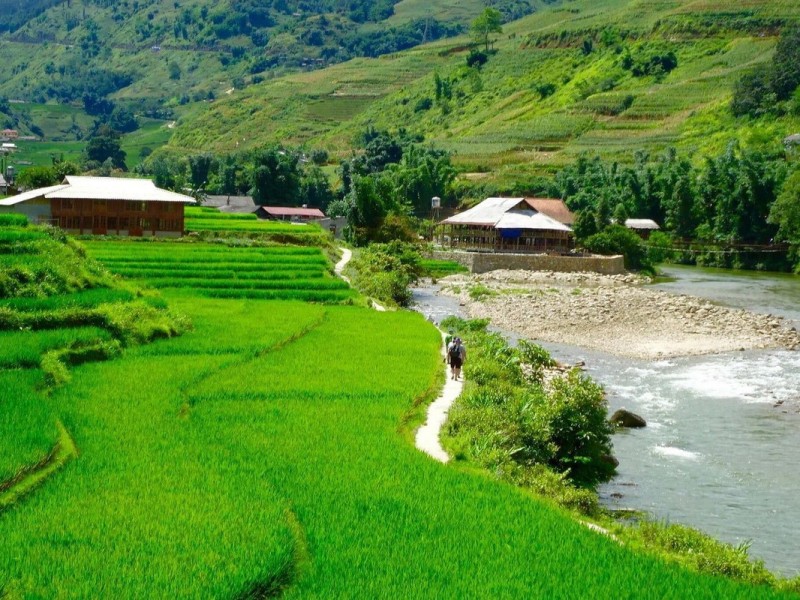
How to Get to Lao Chai Village
Figuring out how to reach Lao Chai Village Sapa might seem daunting at first, but with the right information, planning your journey is easy and enjoyable. This step-by-step guide takes the guesswork out of travel logistics so you can focus on the adventure ahead. Whether you’re starting in Hanoi, elsewhere in Vietnam, or from within Sapa itself, you’ll find options for every budget and travel style. Trust that you’re in the right place for practical planning—let’s make your arrival at Lao Chai Village Sapa smooth and stress-free.
Every journey begins with a decision: train, bus, private car, or a scenic trek. Each route to the village offers a unique perspective of the region’s landscapes and communities. The key is understanding your options, from the popular Hanoi to Sapa train to guided hikes through the beautiful Muong Hoa Valley. If you want support at any stage, Asia Travel Links can help you organize your ideal itinerary or provide updated travel advice.
Start planning now—Lao Chai Village Sapa is closer than you think, and the route you choose becomes part of the story. Ready to travel smarter? Read on for detailed transport comparisons and insider tips.
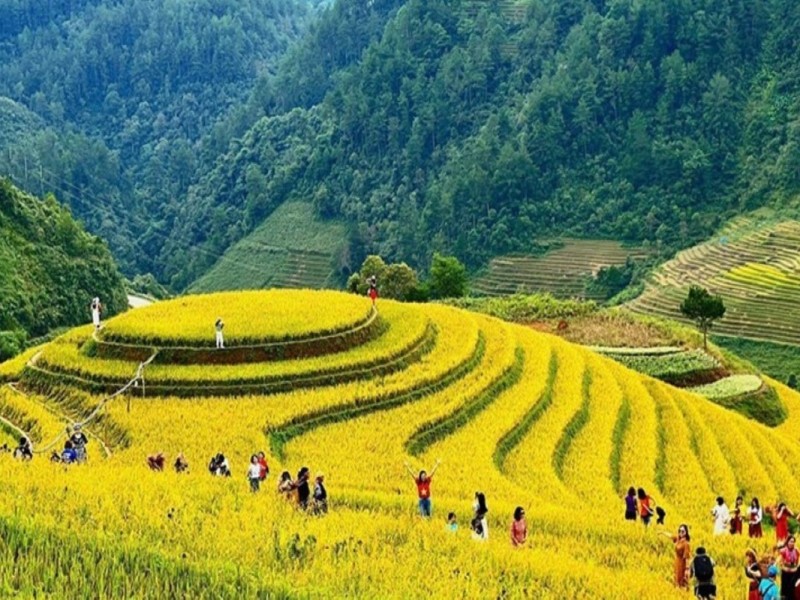
Getting to Sapa: Your Gateway to Lao Chai
Your adventure to Lao Chai Village Sapa starts with reaching the town of Sapa, a hub for travelers exploring the mountains of northern Vietnam. Most visitors arrive in Sapa by either train, bus, or private transfer from Hanoi—each with distinct advantages.
- Hanoi to Sapa train: The sleeper train is a classic, comfortable choice for overnight travel. Trains depart from Hanoi’s main station in the evening and arrive in Lao Cai early morning. From Lao Cai, it’s a one-hour scenic drive or local bus up winding roads to Sapa town.
- Bus to Sapa: Multiple companies run modern sleeper buses from Hanoi to Sapa several times daily. Buses are budget-friendly, with journey times of 6–7 hours direct to Sapa’s central bus station. Choose between daytime and overnight departures.
- Private transfer Sapa: For flexibility and convenience, book a private car with a driver. This door-to-door service offers maximum comfort, ideal for groups or travelers with extra luggage, and allows for photo stops along the way.
When planning your arrival, compare each option’s travel time, comfort, and cost. Booking in advance—especially during weekends or peak season—ensures you get your preferred seats and schedules. Asia Travel Links can assist with up-to-date route information or advance reservations.
Pick the journey that fits your style, and let Lao Chai Village Sapa be your destination.
Train, Bus, and Private Transfer Options from Hanoi
Getting from Hanoi to Sapa gives you several convenient options—here’s a breakdown of the most popular ways:
- Hanoi to Sapa train: Overnight sleeper trains are safe, reliable, and offer a relaxing journey with various classes (from budget to luxury cabins). Most travelers enjoy the comfort and the gentle rocking as you sleep your way north.
- Bus to Sapa: Modern sleeper and limousine buses depart from central Hanoi and drop you right in Sapa town. They’re affordable, comfortable, and run frequently day and night.
- Private transfer Sapa: Arrange a private car or van for personalized service. This is the fastest and most flexible route, perfect if you want to travel at your own pace or make scenic stops along the way.
- Travel time Sapa: Trains take about 8–9 hours, buses around 6–7 hours, and private cars 5–6 hours depending on road and weather conditions.
- Sapa booking tips: Buy train and bus tickets in advance, especially during holidays. For private transfers, confirm details with a trusted provider like Asia Travel Links.
Each route has pros and cons. Your choice depends on budget, comfort, timing, and the kind of travel experience you want.
Choose your preferred transport and let the excitement for Lao Chai Village Sapa build as you draw closer to the mountains.
Tips for Choosing the Best Route
Not sure which way to reach Sapa fits you best? Consider these quick tips for a smooth journey:
- Best way to Sapa: Trains are great for relaxed, overnight travel. Buses suit those wanting to save time and money. Private cars offer flexibility and comfort—ideal for groups or families.
- Sapa transport comparison: Check travel times, ticket prices, and reviews. Bus and train stations are central, while private transfers pick you up and drop you off where you want.
- Advance booking Sapa: Reserve seats ahead during weekends or holiday periods, as demand spikes. Booking early means better prices and more choices.
- Solo travel Sapa: Buses and trains are safe and sociable for solo travelers. Consider sharing a private car with other travelers for value.
- Group travel Sapa: For groups, private vehicles split costs and make logistics easy—plus you can stop for photos and snacks anytime.
Think about your priorities: Is it price, comfort, convenience, or adventure? With the right plan, your trip to Lao Chai Village Sapa starts with ease and confidence.
Choose your best route now, and prepare for the beautiful journey ahead. If you want tailored advice or help booking, reach out to Asia Travel Links for trusted support.
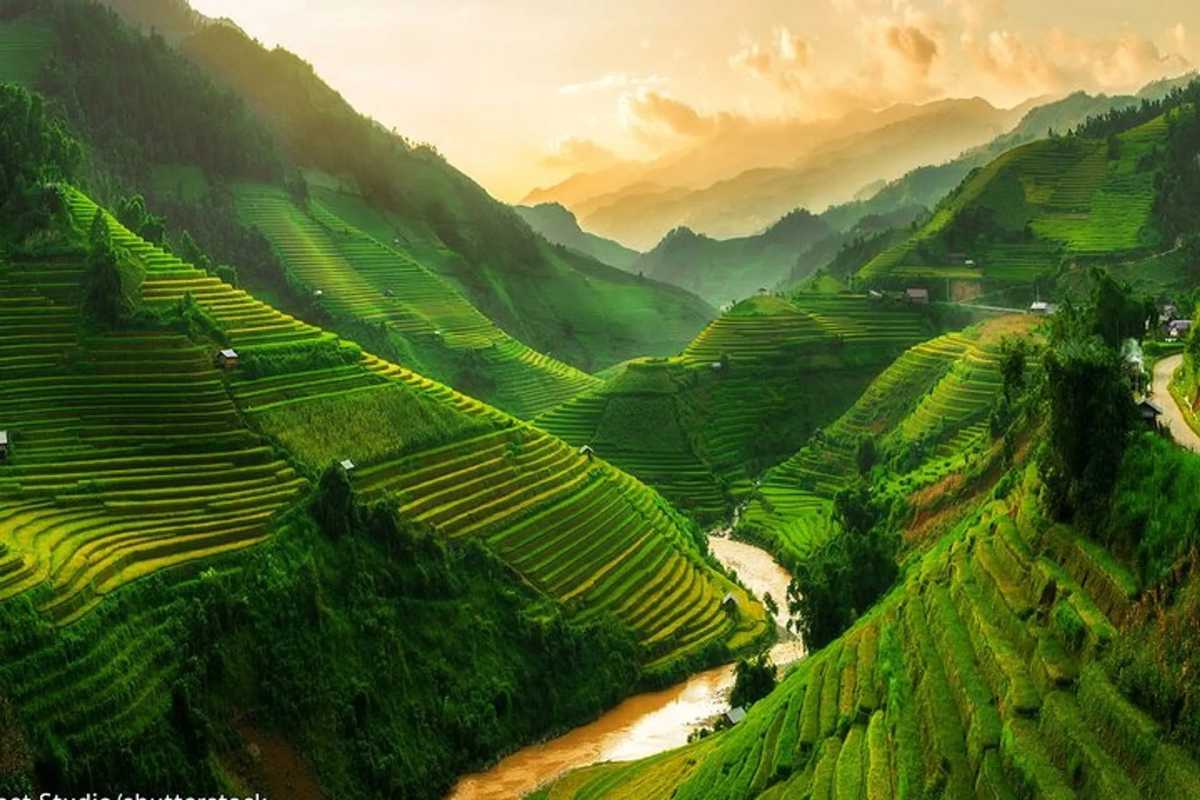
From Sapa Town to Lao Chai Village
Once you arrive in Sapa, the final leg to Lao Chai Village Sapa is both rewarding and simple to navigate. Whether you’re trekking for adventure or seeking an easy ride, the route is flexible and friendly to all travel styles. Here’s how to plan your last-mile journey with confidence—so you can focus on enjoying the spectacular valley scenery, not just getting from point A to B.
Choose the option that matches your comfort, timing, and interest. From scenic walks through the famous rice terraces to quick transfers by taxi or motorbike, every path offers a fresh view of the countryside. With clear advice and insider travel hacks, your arrival at Lao Chai Village Sapa will be stress-free and memorable.
Set out with a plan, and if you need real-time local tips, Asia Travel Links is just a call or email away to guide you further.
Trekking Routes Along Muong Hoa Valley
For many, the highlight of getting to Lao Chai Village Sapa is the chance to trek through the legendary Muong Hoa Valley. Here’s how to make the most of this scenic route:
- Sapa to Lao Chai trek: The main path starts right in Sapa town and leads you on a 6–7 km journey through cascading rice terraces and Hmong hamlets. Expect a 2–3 hour walk with plenty of gentle slopes and photo-worthy spots.
- Muong Hoa Valley hiking: Follow signposted trails or go with a local guide who can share stories, help you navigate, and point out the best panoramic views. Guides are a smart choice, especially during the rainy season.
- Trekking difficulty Lao Chai: The hike is rated easy to moderate; paths can be muddy after rain, so wear sturdy shoes.
- Walking times: Most travelers reach the village in under three hours at a relaxed pace, with time for breaks and photos.
- Route options: For an extended walk, consider continuing from Lao Chai to neighboring villages like Ta Van for a full day adventure.
This trek is about more than just reaching your destination—it’s a journey through some of Sapa’s most breathtaking landscapes. Take your time, enjoy the changing views, and let the spirit of Muong Hoa Valley set the tone for your visit.
Ready to start your adventure? Contact Asia Travel Links for details on hiring a local guide or arranging a seamless trek.
Transport Services: Taxis, Motorbikes, and Electric Cars
Not a trekker, or traveling with family or heavy luggage? Getting from Sapa to Lao Chai Village Sapa is still quick and easy:
- Sapa to Lao Chai taxi: Taxis can be booked from your hotel or called from the main square in Sapa. Expect to pay a fixed rate, with the drive taking 15–20 minutes.
- Motorbike rental Sapa: Rent a motorbike for maximum flexibility and fun—just check local regulations and road conditions. Daily rates are affordable, and you’ll have the freedom to stop for photos whenever you like.
- Electric car Lao Chai: Some providers offer quiet, eco-friendly electric car transfers. These are great for groups or those wanting a smooth, scenic ride.
- Transport options: Each mode offers its own comfort and price point. Ask about fares up front and agree before departure. Local guesthouses or Asia Travel Links can recommend trusted drivers or rentals.
- Fare guide: Taxi fares generally range from 100,000–150,000 VND, with electric cars and private transfers slightly higher.
Traveling safely and comfortably means choosing the best option for your needs. Whether you’re seeking adventure or ease, reaching Lao Chai Village Sapa is always within reach.
Book your transport ahead or check in with Asia Travel Links for up-to-date options, so you arrive ready to enjoy the heart of rural Sapa.
Robert's Scenic Journey: Trekking vs. Motorbike
You're heading to Lao Chai Village Sapa, and you're faced with a classic dilemma: do you embrace the immersive trek or opt for the exhilarating motorbike ride? I’ve done both, and let me tell you, while both offer a Sapa scenic journey, they deliver wildly different experiences. It's not just about getting there; it's about how you arrive, and what you feel along the way.
My first trip to Lao Chai, I was determined to trek to Lao Chai. Setting off from Sapa town, the air was crisp, carrying the scent of damp earth and pine. The path quickly narrowed, turning into a muddy trail weaving through towering bamboo groves. My boots squelched with every step, a rhythmic beat accompanying the rustle of leaves and the distant murmur of the Muong Hoa River. The physical exertion was real – my calves burned on the steeper ascents – but with every bead of sweat came a fresh perspective. I'd pause, completely out of breath, only to be hit with an unexpected vista: a patchwork quilt of rice terraces stretching into the mist, farmers tending their fields like tiny figurines, or a sudden, vibrant splash of color from a local woman's indigo dress. This was slow travel at its finest. I felt incredibly connected to the land, every root and stone underfoot a part of the journey. The biggest surprise? The spontaneous interactions. Children would run out, giggling, to say "hello," or a farmer would offer a shared smile. You become part of the landscape, not just an observer.
On a subsequent visit, I opted for a motorbike. It was a completely different beast. The wind whipped past my face, carrying the sweet scent of wildflowers mixed with exhaust fumes. The initial climb out of Sapa felt like flying, the entire valley unfurling beneath me in a grand panorama. The thrill of leaning into the curves, the engine humming beneath me, was intoxicating. I could cover ground much faster, reaching viewpoints that might have taken hours on foot in mere minutes. This mode offered freedom, the ability to stop on a whim for a photo, or divert down a smaller, paved lane. However, the trade-off was a slight detachment. The senses were overwhelmed, and while the views were sweeping, the intimate details often blurred past. Interactions were limited to quick waves or short exchanges at roadside stalls. It felt more like an adventure through the landscape rather than within it.
The comparison boils down to this: trekking offers deep sensory experience, intimate encounters, and a profound sense of accomplishment. The motorbike delivers adrenaline, expansive views, and efficiency. My travel advice? If you have the time and moderate fitness, dedicate a day to trekking. It's the soul of Lao Chai. But if you're short on time or prefer speed, the motorbike offers an incredible visual feast.
Here are my practical takeaways for choosing your pathfinding to Lao Chai:
- For Trekkers:
- Wear sturdy, waterproof hiking boots: The trails can be very muddy and slippery, especially after rain.
- Hire a local Hmong guide: Essential for navigation, understanding the culture, and supporting the community. Negotiate their fee beforehand.
- Pack light: You'll be carrying everything. A small daypack with water, snacks, sunscreen, and a rain jacket is enough.
- Be prepared for all weather: Sapa's weather changes quickly. Layers are your friend.
- For Motorbikers (and Passenger Comfort):
- Verify your driver: If hiring, ensure they are experienced and have a safe motorbike.
- Wear a helmet: Non-negotiable for safety.
- Dress in layers: The wind chill can be significant, even on warm days.
- Check the road conditions: Some smaller roads can be rough. Ask your homestay host or guide for recent updates.
- Sun protection: Sunscreen and sunglasses are a must, especially with the exposure.
Whether you choose to feel every pebble beneath your feet or the wind in your hair, the journey to Lao Chai is an essential part of the adventure. It shapes your perspective before you even set foot in the village.
Recommendation: Embrace the journey to Lao Chai Village Sapa as part of the destination itself. Consider your travel style and desired level of immersion. Both trekking and motorbiking offer incredible ways to arrive, each promising a unique and memorable introduction to the breathtaking beauty and authentic charm of this special place. Choose the one that speaks to your spirit of adventure, and prepare for an unforgettable experience.
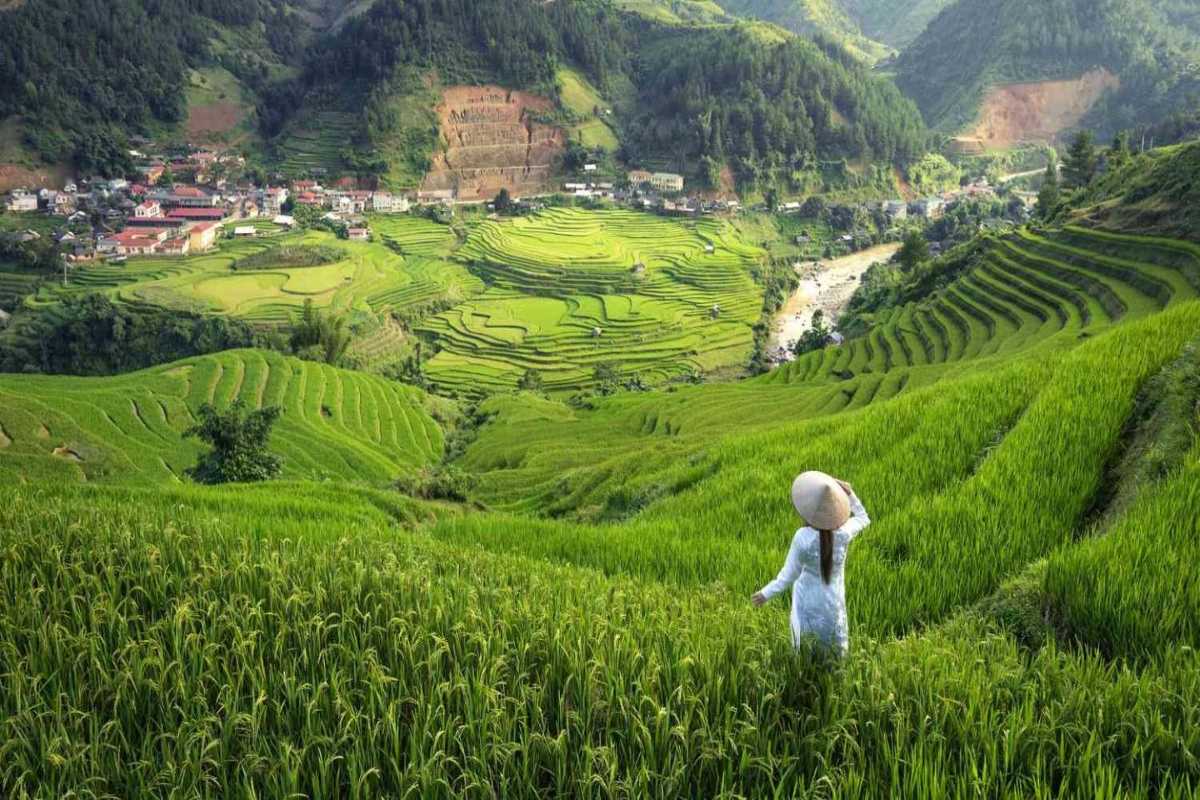
Practical Advice for a Smooth Arrival
Arriving in Lao Chai Village Sapa should feel exciting—not stressful. To help you step into village life with confidence, here’s exactly what you need to know for a seamless, welcoming first experience. Whether you’re trekking in or arriving by taxi, a little preparation goes a long way. With the right steps, you’ll avoid surprises, breeze through the entry process, and settle in quickly to enjoy everything Sapa has to offer.
Bring these tips along, and you’ll start your adventure in Lao Chai Village Sapa on the right foot. For extra support or last-minute advice, Asia Travel Links is always ready to help travelers transition smoothly.
Navigating Entry Fees and Visitor Checkpoints
Before you can fully explore Lao Chai Village Sapa, you’ll need to complete a simple entry process. Here’s what to expect so you can prepare with confidence:
- Lao Chai entry fee: Most travelers must pay a small entry fee when accessing the village or the broader Muong Hoa Valley. The current fee ranges from 70,000 to 100,000 VND per person.
- Sapa village permits: This fee is usually collected at a visitor checkpoint on the road leading into the village. It supports community maintenance and cultural preservation efforts.
- Visitor checkpoint: Have cash ready (Vietnamese Dong), as card payments are rarely accepted. If you’re part of a guided tour or staying at a homestay, confirm if your permit is already included in your booking.
- Payment location: Pay directly at the ticket booth or checkpoint staff; keep your ticket as you may be asked to show it at different points within the valley.
- Budget planning: Factor this fee into your travel budget, especially if you plan to visit other villages or trekking routes that require additional permits.
Planning ahead for these small requirements means your first moments in Lao Chai Village Sapa will be focused on the scenery and culture, not paperwork.
Ready for a hassle-free arrival? Ask Asia Travel Links for the latest entry fee updates or help with advance permits.
What to Expect Upon Arrival
Stepping into Lao Chai Village Sapa brings a shift in pace—a sense of welcome that’s both genuine and immediate. Here’s what you can expect, along with a few tips for settling in smoothly:
- Arriving in Lao Chai: Whether you arrive by foot, taxi, or motorbike, you’ll be greeted by stunning rice terraces and fresh mountain air. The village center is usually a flurry of activity with local children, homestay hosts, and farmers at work.
- First impressions Sapa: Expect friendly smiles and an informal, relaxed atmosphere. Don’t be surprised if your host or a local guide comes out to meet you personally, especially if you’ve booked a stay in advance.
- Meeting hosts: If you haven’t arranged accommodation, look for signs advertising family homestays or ask at a small shop or café—locals are happy to help direct you.
- Finding homestays: Many guesthouses and homestays are clustered near the main road or within a short walk from the entry point. Most are marked with wooden signs in both Vietnamese and English.
- Orientation tips: Take a few minutes to get your bearings—locate the village center, small shops for essentials, and main walking paths. Your host will likely offer a quick orientation and may invite you for tea or a welcome meal.
The best way to start is simply to slow down, greet those you meet, and let the rhythms of Lao Chai Village Sapa guide you into village life.
Need a hand on arrival or want to arrange a friendly local guide? Contact Asia Travel Links for personalized arrival support and insider tips.
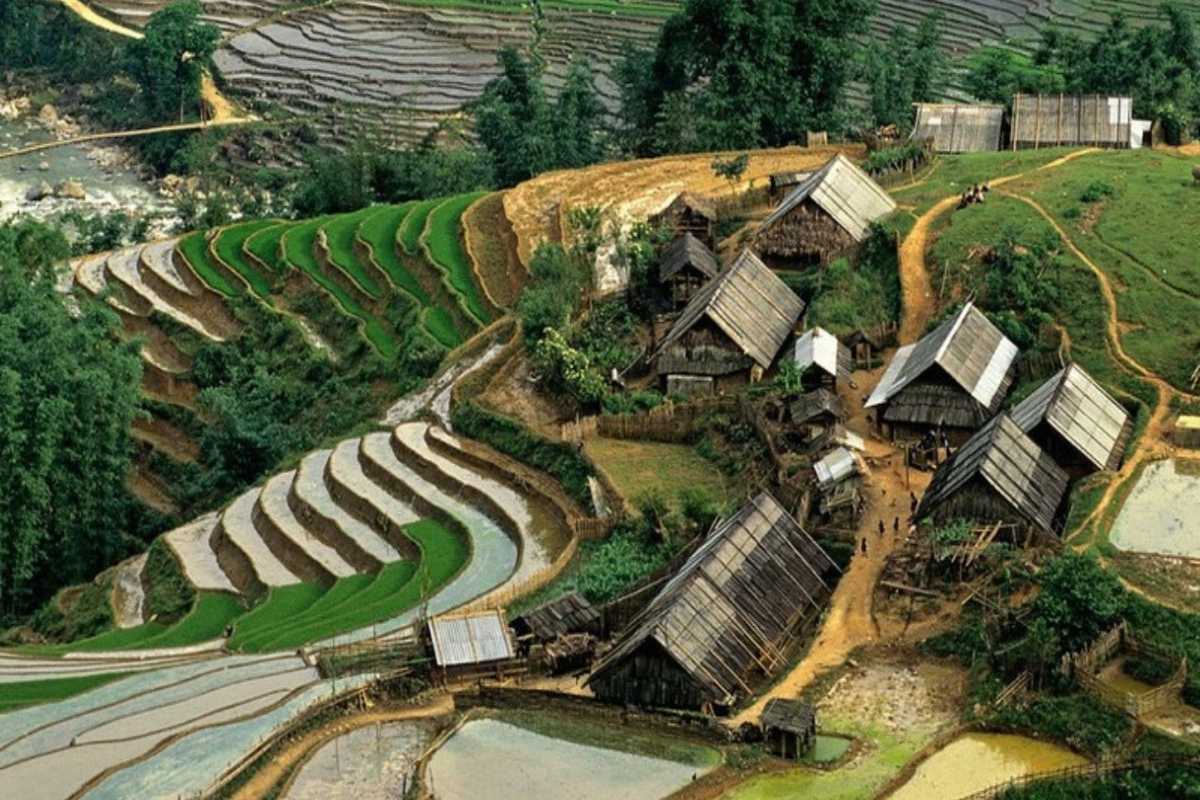
The Best Times to Visit Lao Chai Village
For a truly unforgettable journey, choosing when to visit Lao Chai Village Sapa can make all the difference. The rhythm of the year shapes both the landscape and the village’s cultural calendar, offering fresh reasons to return every season. Whether you dream of golden rice terraces shimmering in the autumn sun, or crave the peaceful atmosphere of quiet winter mornings, planning your trip around these seasonal highlights helps you experience Sapa at its best. From colorful festivals to breathtaking fields, every traveler can find their perfect moment in this unique corner of Vietnam.
Want to maximize the beauty and meaning of your visit to Lao Chai Village Sapa? Let Asia Travel Links help you pick the best season for your journey and craft a trip that matches your dreams.
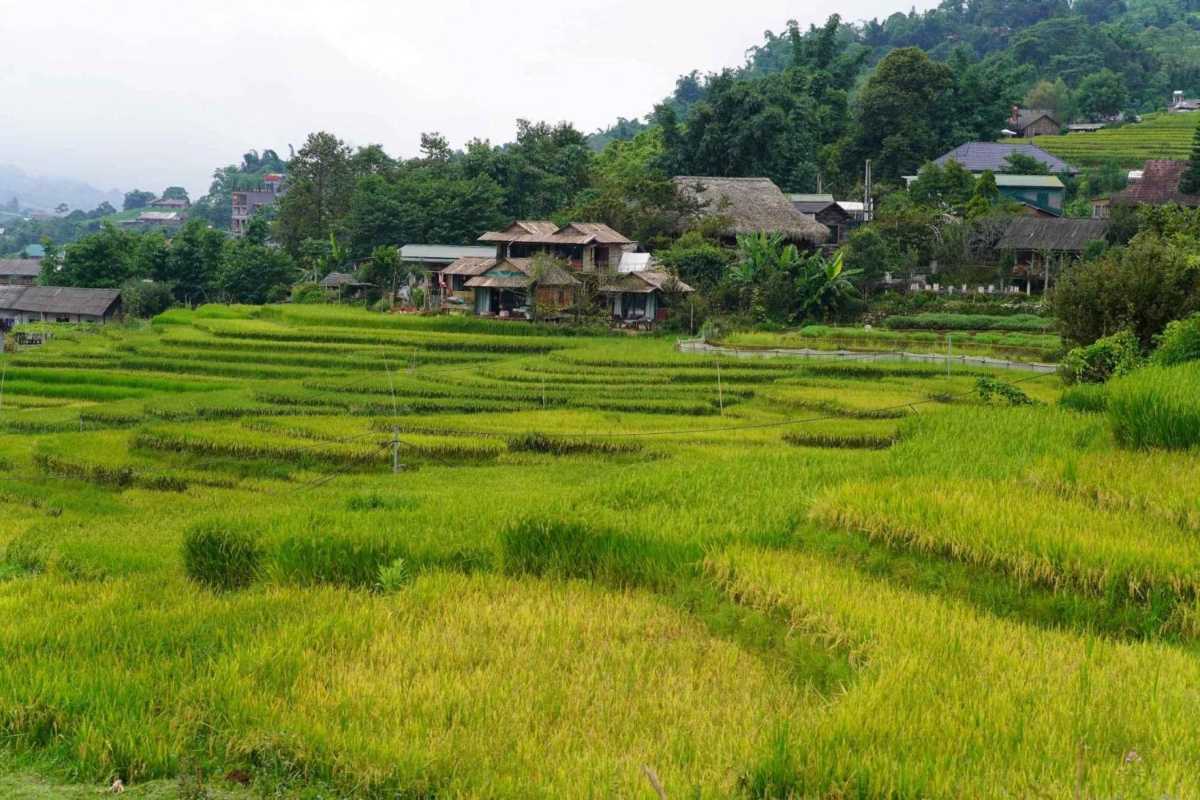
Seasons at a Glance: Weather, Scenery, and Activities
Lao Chai Village Sapa reveals a new face with every change of season. Understanding the local weather and scenery throughout the year can help you decide when to go—and what to expect.
- Spring (March to May): Mild temperatures and light breezes bring fresh green shoots to the rice terraces. Wildflowers dot the landscape, making this a magical time for hiking and photography. Many local families begin prepping fields for rice planting.
- Summer (June to August): Expect lush, emerald-green paddies and bursts of tropical blooms. Rainfall is frequent, so trails can be muddy but the scenery is dramatic. This is a great time for those who enjoy vibrant, living landscapes.
- Autumn (September to November): The most popular season, when the rice fields turn a rich, golden color before harvest. Crisp, cool air and clear skies make trekking comfortable and the scenery truly spectacular. Don’t miss this window if photography is a top priority.
- Winter (December to February): Mornings are misty and cool, with a peaceful, slower pace. While rice terraces are fallow, the atmosphere is tranquil and local life is at its most authentic. Warm layers are a must.
Each season brings its own highlights—from scenic color shifts to the chance to witness daily life and village traditions up close.
Curious about which season suits your style? Reach out to Asia Travel Links for tailored advice based on your interests and travel dates.
Rice Planting and Harvest: When the Terraces Are at Their Most Beautiful
The rice terraces of Lao Chai Village Sapa are world-famous for their striking beauty—but the landscape’s look changes dramatically throughout the year.
- Planting Season (May to early June): Terraces fill with water, reflecting the sky and surrounding mountains. Farmers and families transplant rice seedlings by hand, creating a mirror-like effect perfect for photos.
- Growth Season (June to August): Fields turn a deep, lush green as the rice grows. This is the best time to see the terraces at their most vibrant, with dramatic contrast against the blue summer sky.
- Harvest Season (Late September to early October): Rice fields ripen into golden waves, and the valley comes alive with the hustle of harvest. This is the top choice for landscape photographers and anyone wanting to see traditional farming in action.
- Photography tips: Visit during early morning or late afternoon for the softest light. The best panoramic views are from higher paths above the terraces.
- Field work: Consider timing your trip to witness (or even join) the planting or harvest—ask your homestay host for opportunities.
If you want to experience or photograph Lao Chai Village Sapa at its scenic peak, target late September for the golden harvest or June for emerald fields.
For up-to-date advice on terrace conditions and timing, Asia Travel Links can provide personalized tips and guide recommendations.
What Each Season Offers for Travelers
No matter when you visit Lao Chai Village Sapa, each season has its own rewards:
- Spring: Enjoy cool, clear days, blooming wildflowers, and the buzz of preparation for planting. It’s a peaceful time for trekkers and nature-lovers.
- Summer: Green paddies, dramatic skies, and the chance to see (or join) farming activity. Expect rain but also breathtaking post-storm sunsets.
- Autumn: The landscape glows gold—ideal for those seeking the classic postcard-perfect Sapa. Trekking is at its most comfortable and the air is crisp.
- Winter: A tranquil, misty atmosphere settles over the valley. With fewer crowds, it’s perfect for reflection, quiet walks, and cozy evenings by the fire.
Pack for changing conditions—layers, rain gear, and sturdy shoes are always wise. Each season brings new activities and unique photo opportunities.
Wondering which time of year will make your trip most special? Contact Asia Travel Links for season-by-season travel planning, and turn your Sapa journey into a memory you’ll cherish.
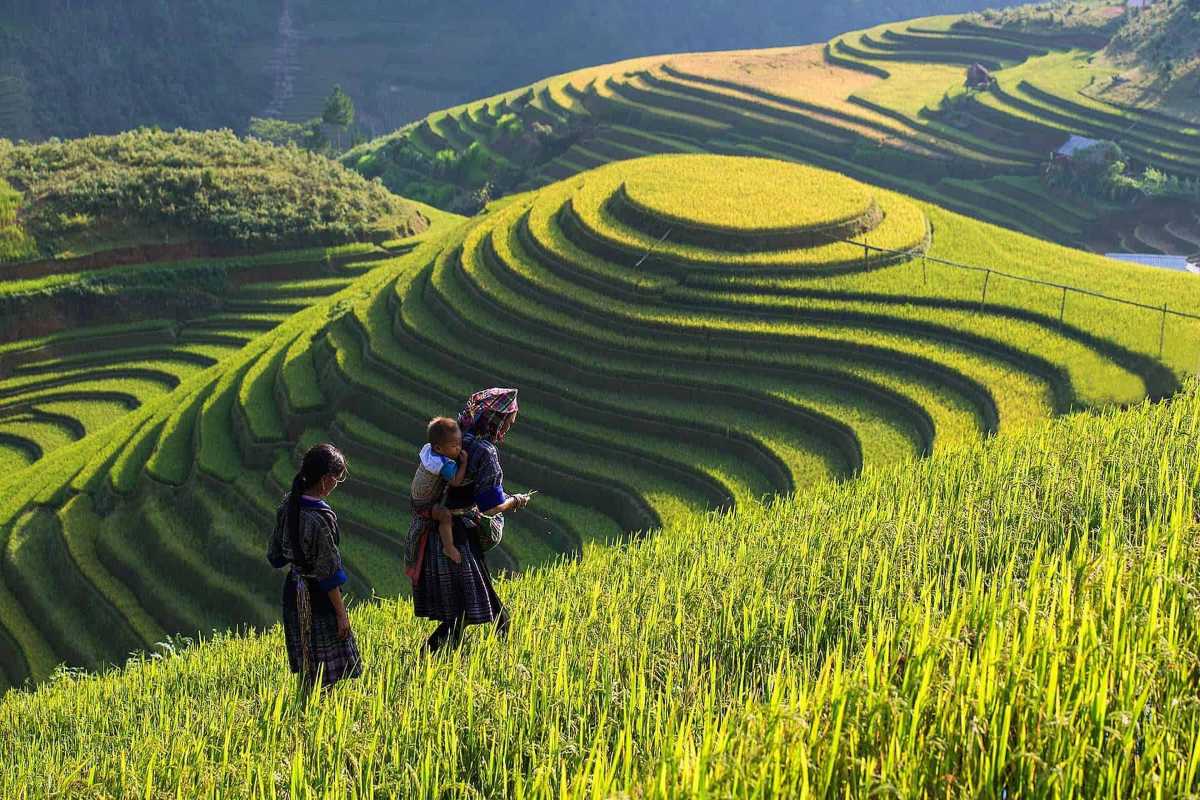
Festivals and Special Events
If you want to truly connect with the spirit of Lao Chai Village Sapa, timing your trip to coincide with the local festival calendar is one of the best ways to experience authentic Sapa culture. Vibrant, deeply-rooted celebrations bring the community together and offer travelers a rare chance to witness traditional attire, festive foods, and cultural rituals firsthand. These special occasions unlock a deeper level of cultural immersion and are an invitation to join in the heart of village life.
Traveling during a festival or community event in Lao Chai Village Sapa is more than just sightseeing—it’s about stepping into the rhythms and rituals that shape this region’s heritage. If you want to be part of the festivities, Asia Travel Links can help you plan the perfect culturally immersive journey.
Hmong New Year and Traditional Celebrations
Nothing expresses the pulse of local life quite like the Hmong New Year, one of the most important festivals in Lao Chai Village Sapa and across Sapa. Usually falling between late November and January (based on the lunar calendar), this annual ritual marks a time of joyful reunions, ancestral honor, and new beginnings for the Hmong people.
- Traditional attire: Locals don their finest handmade costumes, each embroidered with symbols representing family history and village identity.
- Festive foods: Homes fill with the aroma of sticky rice, boiled chicken, and traditional cakes prepared for offerings and communal feasts.
- Ceremonial dance and games: Expect lively circle dances, singing, and playful competitions—like top-spinning and ball-toss games—inviting everyone, including guests, to join.
- Rituals and prayers: Families gather for ancestor veneration, hoping for prosperity and health in the coming year.
- Music and laughter: The air comes alive with the sound of bamboo flutes, cheerful banter, and the contagious joy of celebration.
To fully experience the richness of Hmong New Year Sapa and other traditional festivals, try to visit during this season. Ask your homestay host or Asia Travel Links for updated festival dates, as lunar timing can vary each year.
If you’re eager to participate in or simply observe the colorful celebrations of Lao Chai Village Sapa, connect with local guides for insider access and respectful engagement.
Village Festivities and Community Gatherings
Beyond grand annual festivals, everyday life in Lao Chai Village Sapa is punctuated by a vibrant flow of local gatherings, market days, and impromptu celebrations. These community events are some of the best windows into authentic Sapa living, offering visitors a chance to witness genuine village camaraderie and spontaneous joy.
- Market days: Held weekly or biweekly, local markets become buzzing social hubs where villagers trade handicrafts, fresh produce, and news from surrounding hamlets.
- Traditional games: Don’t be surprised to stumble upon open-air contests—like spinning wooden tops or tug-of-war—where laughter and competitive spirit bring together young and old alike.
- Open-air festivities: Musical performances, village feasts, or small-scale ceremonies can pop up to mark family milestones, agricultural successes, or spiritual occasions.
- Community meals: Visitors may be invited to join a communal lunch or dinner, sharing stories and local specialties with families.
- Music and storytelling: Evenings in the village often end with folk songs, Hmong flute melodies, and tales passed down through generations.
Travelers who approach these informal celebrations with openness and respect are often rewarded with unexpected connections and lasting memories. Want to maximize your chances of experiencing local events? Contact Asia Travel Links to find out what’s happening during your travel dates, and we’ll help you plan your stay around these vibrant moments in Lao Chai Village Sapa.
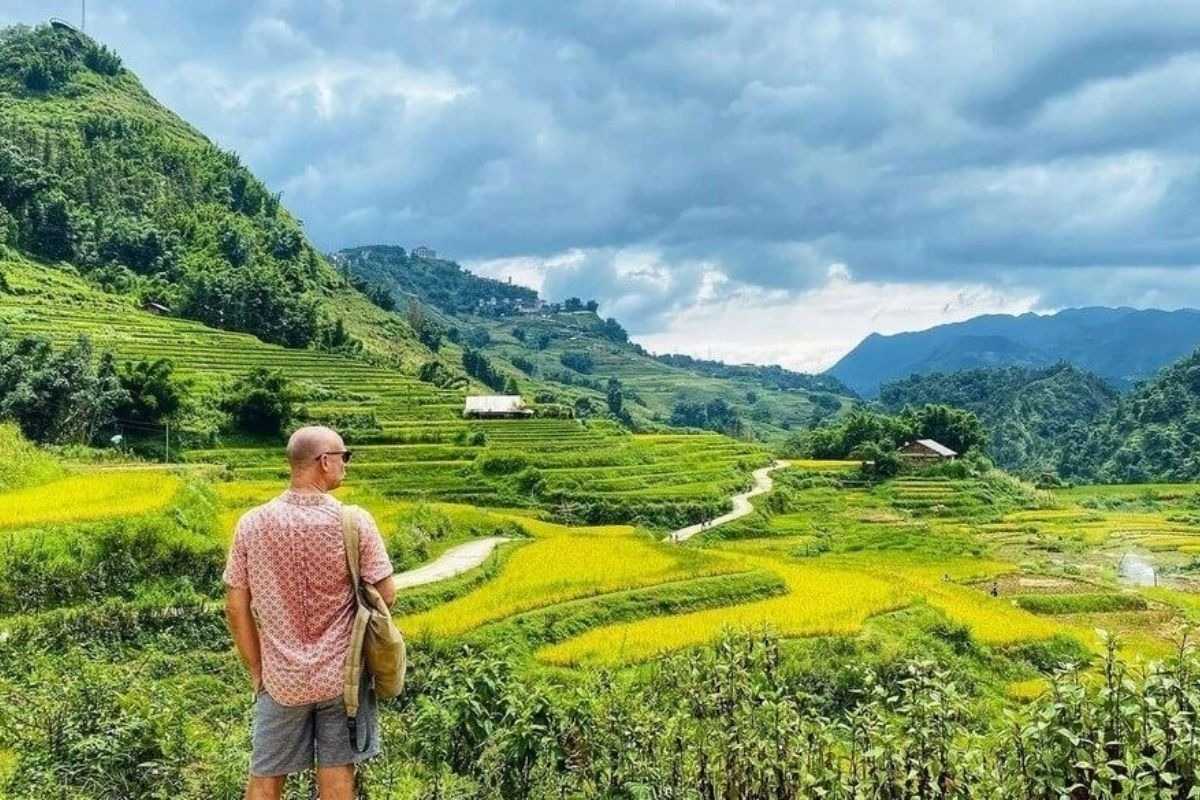
Exclusive Tips for Timing Your Trip
For travelers eager to make the most of Lao Chai Village Sapa, smart timing is everything. Planning your visit with an eye for detail not only guarantees incredible scenery but also helps you avoid the typical crowds that flock to Sapa during peak seasons. These exclusive tips are your roadmap to a peaceful, authentic, and rewarding experience in the heart of the mountains.
If your goal is to have the village and its surroundings nearly to yourself, just a few strategic choices can make all the difference. Read on for actionable, expert-tested advice on timing your trip to Lao Chai Village Sapa for the best memories and photos.
Avoiding Crowds and Making the Most of Your Visit
The secret to enjoying Lao Chai Village Sapa in its most serene and picturesque state is all about timing and flexibility. Avoiding crowds in Sapa is entirely possible with the right approach, letting you capture those magical, unspoiled moments that define authentic travel.
- Visit during the shoulder season: Plan your trip for late March–May or late September–early November. These windows fall between the busiest times, offering optimal weather and far fewer visitors.
- Choose weekdays over weekends: Arriving on a Tuesday or Wednesday dramatically reduces your chances of running into tour groups and crowds from nearby cities.
- Start your day early: Set out at sunrise to explore the terraces, villages, and valley trails before other travelers arrive. Early light also offers the best photography conditions.
- Explore lesser-known paths: Ask your homestay host for alternative routes or local paths. You’ll discover hidden corners of the village, often meeting locals going about their daily routines.
- Embrace quiet moments: Don’t rush from sight to sight. Spend time in a village café or by the riverside, soaking in the peaceful atmosphere that makes Lao Chai Village Sapa so special.
With these crowd-beating strategies, you can experience the tranquil beauty and authenticity that set Lao Chai Village Sapa apart. Ready for a peaceful adventure? Plan your visit during off-peak times and reach out to Asia Travel Links for custom advice on the best dates for your personal travel style.
Sophia's Seasonal Snapshot: Capturing the Golden Harvest
When you envision Lao Chai Village Sapa, chances are you picture those incredible terraced rice fields. But to truly feel the magic, you need to be there during the Lao Chai harvest season. Most photos don't do it justice; it's a multi-sensory experience that goes far beyond a pretty picture, and capturing it requires more than just pointing and shooting.
I arrived in late September, right as the fields were turning from vibrant green to a shimmering, impossible gold. From the moment I stepped off the motorbike, the air was thick with the rich, earthy scent of ripe rice and distant woodsmoke, a fragrance that instantly evokes autumn. My first morning, I woke before dawn, pulling on layers against the crisp, cool air. Stepping outside my homestay, the valley was shrouded in a soft mist, the terraced fields barely visible. But as the sun began to peek over the distant peaks, it was like a slow-motion reveal. The mist burned off, and the golden rice terraces ignited, each curve and contour catching the light. The silence, broken only by the chirping of crickets and the gentle rustle of rice stalks swaying in the breeze, was profound.
What surprised me most was the hive of activity. Village life during harvest is a beautiful, synchronized ballet. Families spread out across the fields, their conical hats bobbing as they meticulously cut the stalks by hand. The rhythmic swish of their sickles and the soft thud of bundles being dropped created a natural soundtrack. I spent hours just watching, mesmerized by their dedication and the quiet efficiency of it all. This wasn't just a picturesque scene; it was life, hard work, and the bounty of the land unfolding before my eyes. Every interaction, even a shared smile with a woman pausing to wipe her brow, felt incredibly genuine. It’s this raw, unfiltered experience that truly makes the golden harvest unique.
To capture this vibrant reality, you need to think beyond just composition. It's about light and emotion. The best light for photography is undoubtedly early morning or late afternoon when the sun is low, casting long, dramatic shadows and intensifying that golden hue. Don't be afraid to get a little dirty; a low angle can really emphasize the scale of the terraces. And for the love of all that's beautiful, engage with the people! Ask permission before taking close-up shots of villagers. A simple "Chào bạn" (hello) and a respectful nod often lead to the most authentic and heartwarming portraits. I found my most treasured shots were of the details: the intricate patterns of dried rice on a pathway, a child's hand helping with the harvest, or the smoke curling from a cooking fire at dusk.
Here are a few photography tips Sapa for making your harvest season shots truly shine:
- Go Golden Hour or Blue Hour: The hour after sunrise and before sunset offers the most magical light. For misty, ethereal shots, be out before sunrise.
- Look for Leading Lines: The curves of the terraces naturally create stunning leading lines that draw the viewer's eye into the landscape photography.
- Include People (Respectfully): Human elements add scale and emotion. Ask permission or capture them candidly from a distance, focusing on their activity.
- Pack a Wide-Angle Lens: Essential for capturing the vastness of the terraced landscapes.
- Bring a Zoom Lens: Great for isolating details of seasonal activity or capturing candid portraits from afar without being intrusive.
- Protect Your Gear: The dust and occasional dampness can be tough on cameras. A rain cover is a good idea.
- Battery Power: Cold mornings can drain batteries faster. Carry spares!
Leaving Lao Chai, my camera roll was full, but more importantly, my heart was full. The Lao Chai harvest season isn't just a visual spectacle; it’s an immersive, moving experience that connects you deeply to the rhythm of nature and the resilient spirit of its people. It's a reminder that true beauty often lies in simplicity and hard work.
Recommendation: If you're planning a trip to Lao Chai Village Sapa and want to witness something truly extraordinary, time your visit for the golden harvest season (typically late September to early October). It's an unparalleled opportunity to capture stunning visuals and immerse yourself in the authentic village life and the profound beauty of Vietnam's northern mountains. Pack your camera, an open heart, and prepare to be amazed!
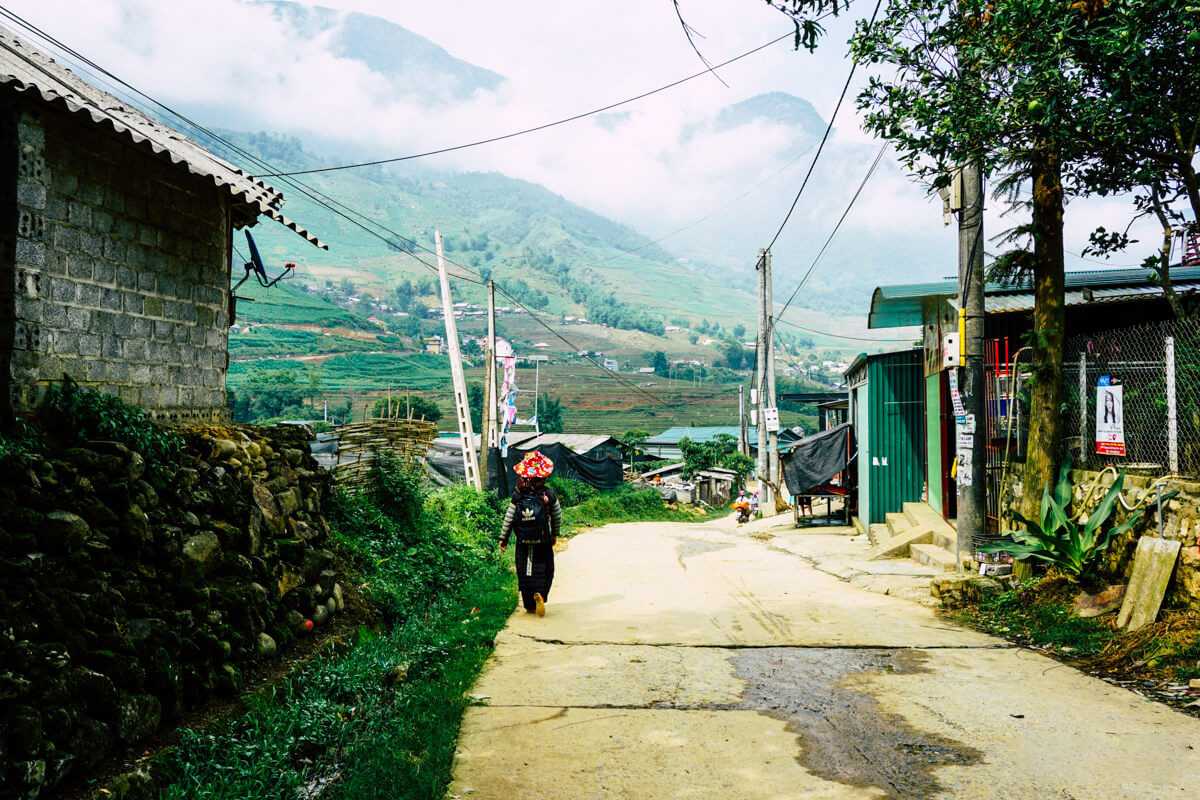
Where to Stay: Homestays and Accommodation in Lao Chai Village Sapa
Finding the right place to stay can make or break your experience in Lao Chai Village Sapa. Here, homestays are not just a place to sleep—they’re an invitation into the heart of the community. Choosing a homestay means waking up to the sound of roosters, joining family meals, and learning the rhythms of local life. For travelers looking for comfort and authenticity, Lao Chai Village Sapa delivers a spectrum of options, from simple family-run homes to slightly more modern accommodations, all grounded in genuine hospitality. If you’re after a deeper connection with the people and culture of Sapa, a homestay is your best gateway. Ready to discover where you’ll lay your head? Explore the unique world of village hospitality and let your stay become a story you’ll never forget. If you need tailored recommendations or want help booking, reach out to Asia Travel Links for up-to-date options and real traveler feedback.
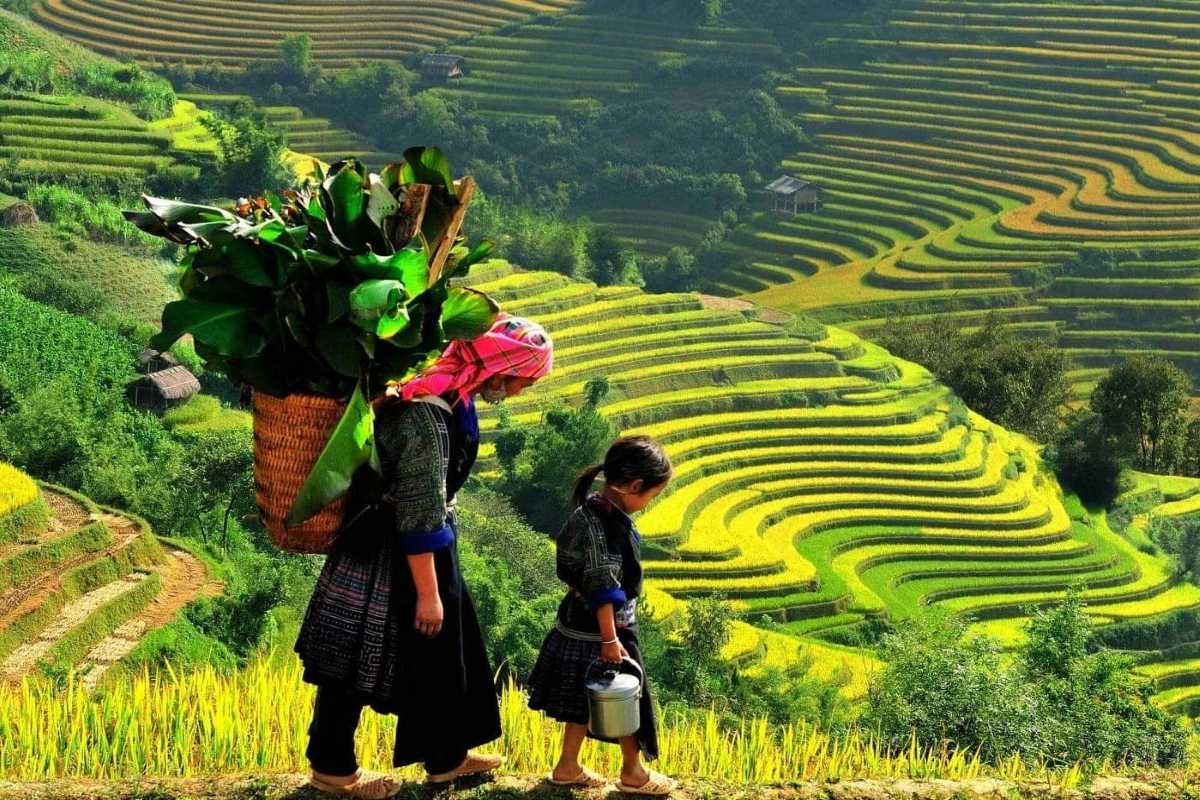
Choosing the Right Homestay for Your Adventure
Picking the perfect homestay in Lao Chai Village Sapa isn’t about finding the fanciest room—it’s about matching your travel style, comfort needs, and curiosity with the right family and setting. Homestays range from rustic, traditional houses to more recently built homes with added amenities. When you book with trusted local hosts, you’re not only choosing a place to sleep—you’re choosing your guides to Sapa’s hidden stories and daily life. Consider your must-haves, ask about amenities, and read recent traveler reviews to set the right expectations. Are you hoping for a basic adventure or a touch of comfort with your cultural immersion? Let your priorities shape your choice, and be open to the unique surprises that only family-run stays in Lao Chai Village Sapa can offer. Book early, especially during peak seasons, and don’t hesitate to ask Asia Travel Links for firsthand insights from our recent guests.
Family-Run Homestays and What They Offer
Family-run homestays in Lao Chai Village Sapa bring you as close as possible to authentic village life. Here’s what you can expect when you book with a local family:
- Simple, welcoming homes: Expect wooden stilt houses or solid brick homes, with warm hosts ready to share their way of life.
- Shared bathrooms and basic comforts: Facilities are generally clean but simple, sometimes with hot water, always with plenty of smiles.
- Communal meal times: Join the family around a low table to sample home-cooked dishes made from ingredients grown nearby.
- Sleep under a mosquito net: Traditional sleeping arrangements might include mats or mattresses on the floor, with plenty of blankets for chilly nights.
- Family involvement: You’ll see children helping with chores, elders sharing stories, and everyone pitching in—making you feel less like a guest and more like a family friend.
Choosing a family homestay means embracing a bit of adventure and a lot of heart. For a truly memorable stay, keep an open mind and a friendly spirit. Curious which homestay best fits your travel dreams? Email us at Asia Travel Links for personal recommendations and up-to-date availability.
Amenities, Comfort, and Authentic Experiences
Staying in Lao Chai Village Sapa is all about finding the balance between comfort and authenticity. Here’s what you should know before booking:
- Essential comforts: Basic electricity, sometimes hot water, and patchy (but present) internet access in some homes.
- Genuine local connection: The biggest amenity is your connection to your hosts—expect meaningful conversations and shared moments.
- Simple living: Don’t expect luxury, but appreciate the clean, tidy spaces, and thoughtful touches unique to village homes.
- Cultural immersion: You’re invited to join in family routines, from meal prep to garden walks and after-dinner storytelling.
- Safe and secure: While the level of security is informal, the close-knit nature of the village means you’re always looked after.
If your main concern is feeling “at home” in a foreign place, these homestays deliver through honest, heartfelt hospitality. By valuing the experience over luxury, you’ll walk away with stories and connections that last far longer than your trip. Want help sorting through your options or getting the latest on Lao Chai homestay amenities? Contact Asia Travel Links for tailored advice on where to stay for your perfect blend of comfort and cultural experience.
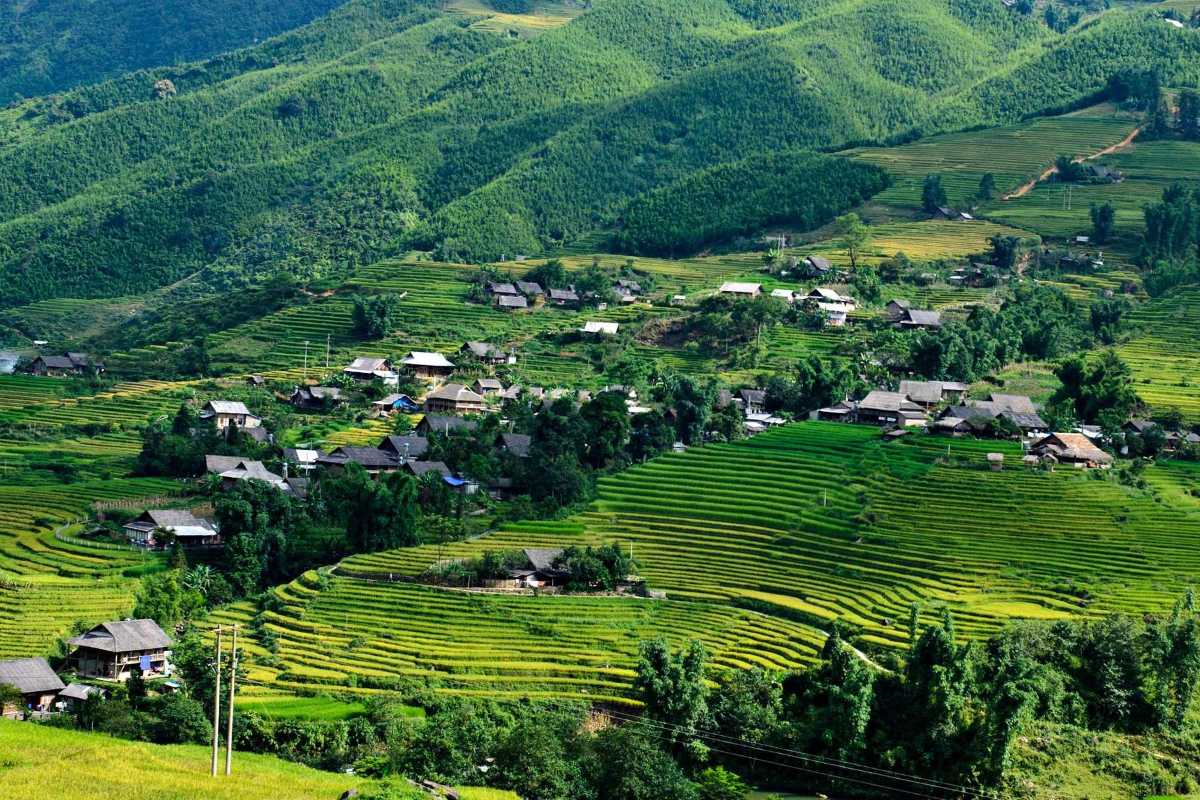
What It’s Like to Stay with a Local Family in Lao Chai Village Sapa
Staying with a local family in Lao Chai Village Sapa is a step into the warm heart of village life. The experience goes beyond simply renting a room—it’s a genuine invitation into the daily rhythms, traditions, and stories of a Sapa family. You wake up to the distant call of roosters, the laughter of children preparing for school, and the aroma of wood smoke drifting from the kitchen. From the first welcome, there’s a sense of belonging that shapes every moment you spend in the village.
If you’ve ever wondered what it’s truly like to connect across cultures and live at the pace of rural Vietnam, this is where those memories are made. Ready to picture yourself there? Let’s dive into the most vivid moments of a homestay in Lao Chai Village Sapa—and how they’ll leave a mark long after your journey ends.
Shared Meals, Storytelling, and Cultural Activities
Life in a homestay in Lao Chai Village Sapa revolves around food, stories, and hands-on cultural experiences. Here’s what you can expect when you join in:
- Communal meals: Everyone—guests and family alike—gathers around a low table to enjoy steaming bowls of rice, savory pork, and freshly picked mountain greens. Each meal feels like a celebration of Hmong culinary tradition and local bounty.
- Storytelling by the fire: Evenings bring a glow to the house as elders recount village legends, tales of old Sapa, and stories from their own childhoods. Listening is as much a part of the experience as sharing your own journey.
- Joining in daily life: Help with morning chores, tend the garden, or learn how to weave baskets. Every task is an opportunity for cultural exchange and laughter.
- Cultural activities homestay Lao Chai: Try your hand at embroidery, assist in preparing a classic Hmong food Sapa dish, or participate in local celebrations if your visit coincides with a festival.
- Language and laughter: Whether you know a few Vietnamese or Hmong words or rely on gestures, there’s always a way to connect—and plenty of humor in the learning process.
At the end of the day, it’s these shared moments—meals, stories, and laughter—that turn strangers into friends and make your stay in Lao Chai Village Sapa unforgettable. Want to be part of this vibrant, communal world? Reach out to Asia Travel Links for advice on the best homestays to match your interests and discover firsthand the joys of authentic village life.
Liam's Homestay Immersion: Cooking & Connection
When I booked my homestay in Lao Chai Village Sapa, I anticipated stunning rice terraces and quiet village life. What I didn't fully grasp was the incredible depth of Hmong food Sapa culture, especially in the kitchen. My experience wasn't just about eating delicious meals; it became a genuine hands-on cooking experience Sapa that solidified my connection with my host family in a way I never expected.
The moment Ms. Hoa, my host, gestured towards the crackling open fire in her kitchen, my excitement bubbled. I'd watched her effortlessly prepare meals, but today, it was my turn to learn. The air was thick with the scent of garlic, ginger, and something wonderfully earthy – the unmistakable aroma of village life. Our first task was preparing green papaya salad. She demonstrated, with nimble fingers, how to julienne the papaya using a traditional wooden grater, then invited me to try. My attempts were clumsy, yielding chunky, uneven strips, but her laughter was kind and encouraging. It wasn’t a formal class; it was more like cooking alongside a cherished aunt, a seamless flow of shared knowledge. We chatted, giggled, and chopped. The simple act of preparing ingredients side-by-side dissolved any remaining awkwardness of being a stranger in their home.
Later, she introduced me to her homemade rice wine. The taste was surprisingly smooth, with a subtle sweetness, a result of generations of perfected fermentation. She showed me the large clay jars where it brewed, explaining the traditional recipe that had been passed down through her family. It was a moment of true culinary immersion, understanding not just the taste, but the history and dedication behind the flavors. The meal that followed was a triumph – a hearty chicken stew cooked over the open fire, fresh stir-fried greens gathered from their garden that morning, and the now-familiar fragrant sticky rice. Each dish was simple, yet bursting with the fresh, honest flavors of the village ingredients.
The most profound aspect wasn't just learning to chop or stir; it was the laughter and the shared silence, the non-verbal cues that built a bridge between us. It was watching Ms. Hoa's meticulous process, her respect for every ingredient, and realizing that cooking wasn't just sustenance, but an act of love and community. This wasn't a staged demonstration for tourists; this was me being welcomed into their daily rhythm, learning through participation. The warmth of the fire mirrored the warmth in my heart, fostering a deep friendship through the universal language of food.
Through this experience, I gained a unique insight: the soul of Hmong hospitality often resides around the cooking fire. It's where stories are shared, where generations teach one another, and where guests become family. It’s not about perfecting a traditional recipe, but about the shared act of creating and enjoying a meal together. This hands-on involvement offered a far deeper understanding of their culture than any tour ever could.
If you’re lucky enough to have this opportunity, here are some actionable tips:
- Ask to Help: Don't wait to be invited. Politely ask if you can assist in the kitchen. Most hosts will be delighted by your interest.
- Embrace the Simplicity of an Open Fire: Cooking over an open-fire cooking setup might be new. Be patient, observe your host, and enjoy the rustic charm.
- Be Curious About Ingredients: Point to ingredients, ask where they come from (even with gestures). You'll learn so much about local produce and foraging.
- Try Everything (within reason): Even if a dish looks unfamiliar, a small taste shows respect. You might discover a new favorite!
- Toast with Rice Wine: If offered homemade rice wine, accept it! It's a gesture of welcome and a chance to share a moment.
- Share a Story of Your Own: While language can be a barrier, try to share simple stories about your home or family. It fosters reciprocity and shared knowledge.
My homestay immersion wasn't just about a place to sleep or even just a meal. It was about the aromas, the crackle of the fire, the shared laughter, and the quiet moments of learning. It was about Ms. Hoa's hands guiding mine, and the profound connection forged over a chopping board and a steaming pot. This is what truly makes Lao Chai unforgettable.
Recommendation: For anyone visiting Lao Chai Village Sapa, I wholeheartedly urge you to seek out a homestay that offers even a glimpse into their culinary world. It's more than just a meal; it's a window into the heart of Hmong culture, a chance for genuine culinary immersion, and an opportunity to create memories far beyond the usual tourist path. Don't just eat; connect through cooking. You won't regret it.
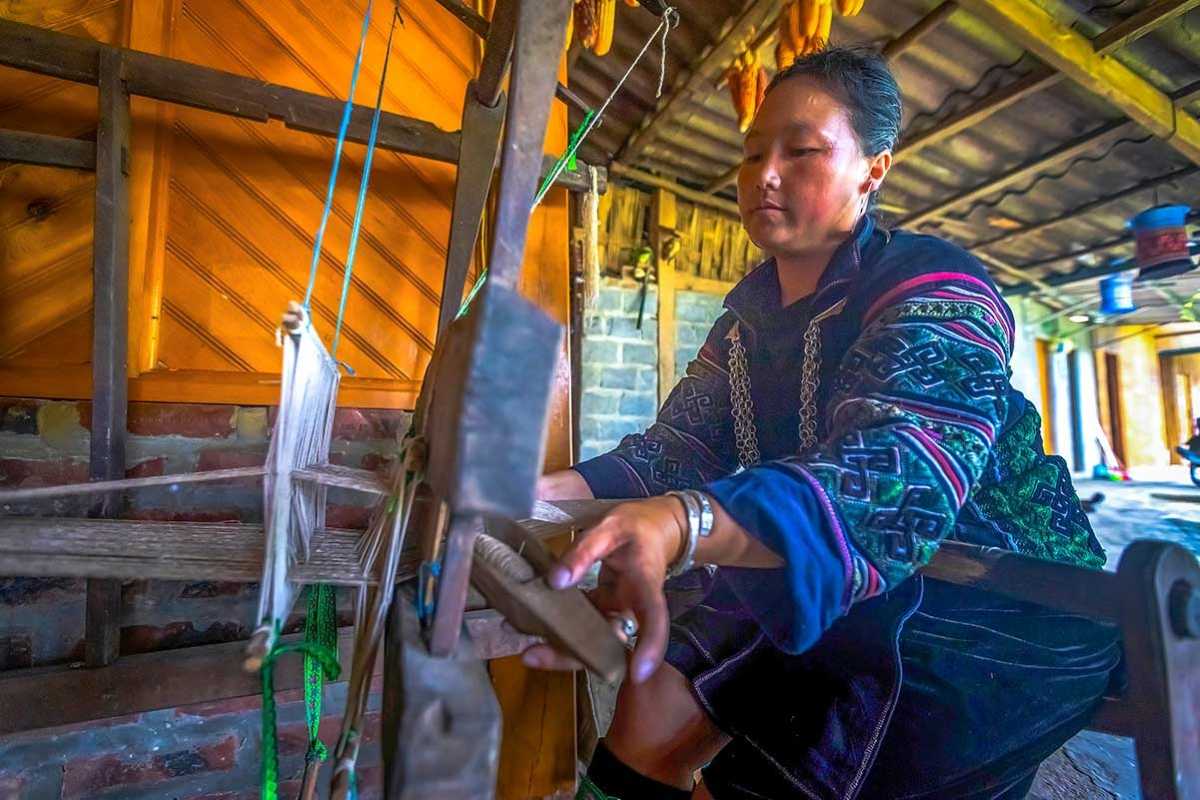
Booking Your Stay: Tips and Recommendations in Lao Chai Village Sapa
Planning your stay in Lao Chai Village Sapa is straightforward when you know where to look and what to expect. Booking a homestay isn’t just about securing a place to sleep—it’s your entry point to a deeper, more meaningful experience in the village. To ensure your journey is smooth and your stay is truly memorable, follow these expert tips for finding and reserving the right accommodation in Sapa.
How to Find Trusted Hosts
Booking a homestay in Lao Chai Village Sapa should feel safe, transparent, and supportive of responsible tourism. Here’s how you can ensure you’re choosing a reputable host and making an ethical choice:
- Book Lao Chai homestay through reputable platforms: Use well-known booking sites like Booking.com or Agoda, filtering for “homestay” and reading recent traveler reviews.
- Trusted Sapa hosts from community networks: Ask Asia Travel Links for direct referrals or visit platforms highlighting community-based tourism (CBT) initiatives—these often partner with local families and support village development.
- Review host profiles and traveler feedback: Look for consistently positive feedback, prompt communication, and clear descriptions of the home, meals, and activities.
- Confirm responsible tourism credentials: Seek out hosts affiliated with responsible travel programs or local organizations promoting cultural preservation.
- Contact hosts directly for special needs: If you have dietary restrictions or unique requests, message the host before booking to check responsiveness and flexibility.
Booking through ethical networks and well-reviewed platforms increases the likelihood of a rewarding stay while directly benefiting the village. If you need guidance, reach out to Asia Travel Links for help matching with the best host for your interests and travel dates.
What to Know About Pricing and Reservations
Understanding the costs and logistics of booking a homestay in Lao Chai Village Sapa sets the right expectations. Here’s what you should know:
- Lao Chai homestay cost ranges: Expect to pay between $10–$25 USD per person per night, including dinner and breakfast. More basic homes sit at the lower end; some with hot showers or extras are slightly more.
- Sapa accommodation prices fluctuate by season: Prices can rise during weekends, local festivals, or harvest season, so early reservations are wise.
- Booking season and lead time: Homestays can fill up quickly during peak travel times (spring rice planting, autumn harvest, Tet). Book at least 2–4 weeks ahead for popular dates.
- Payment method: Most homestays in Lao Chai Village Sapa prefer cash payment in Vietnamese Dong upon arrival. Online prepayment may be possible on some platforms, but cash remains most common.
- Reservation confirmation: Always request written confirmation and details about check-in/out, included meals, and any extras before arrival.
By preparing for pricing, booking early for busy periods, and planning for payment on arrival, you’ll enjoy peace of mind and a seamless start to your village adventure. Need personalized advice or support with booking? Asia Travel Links is here to help you find the perfect homestay, answer questions, and ensure your stay in Lao Chai Village Sapa is as enriching as possible.
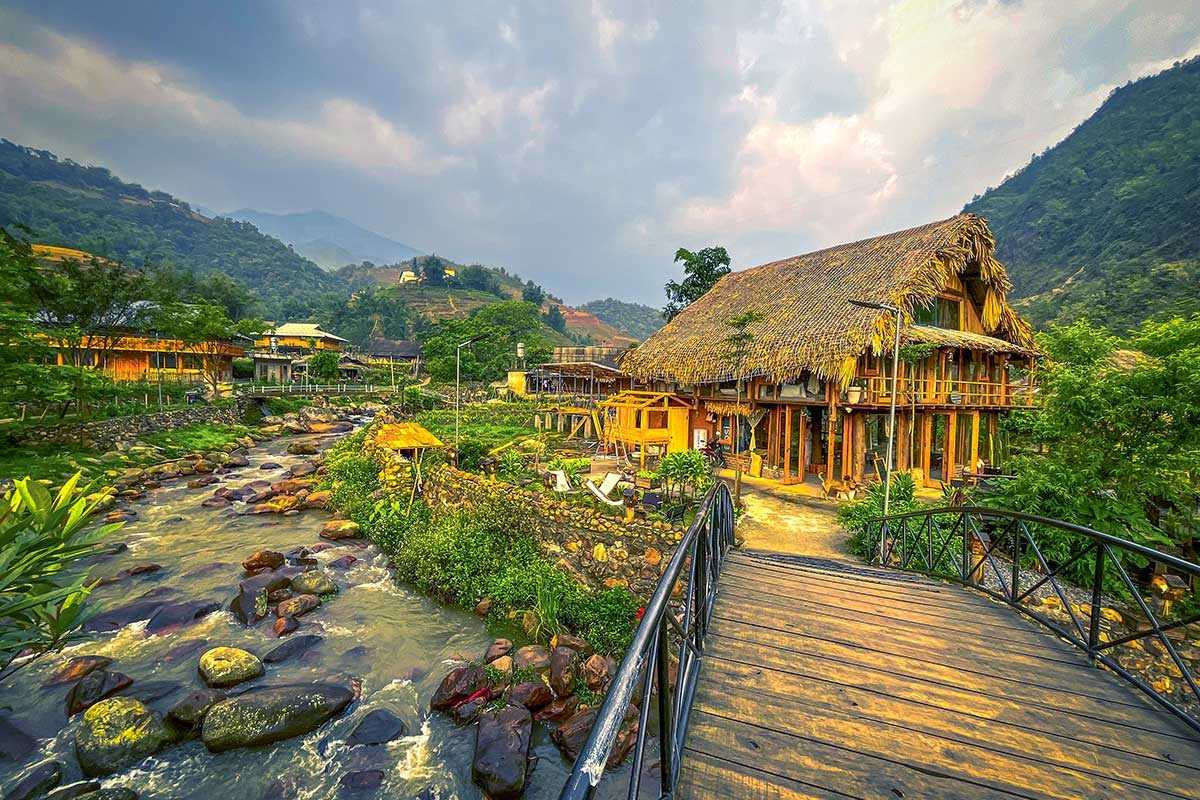
Top Things to Do in Lao Chai Village Sapa
Lao Chai Village Sapa offers a world of authentic experiences for travelers who crave both adventure and cultural immersion. From iconic treks to hands-on craft workshops and tranquil moments in village cafes, you’ll find plenty of reasons to fall in love with this special place. Here’s your guide to the most rewarding activities that make a visit unforgettable—and keep visitors coming back.

Trekking Adventures and Guided Walks in Lao Chai Village Sapa
Few things capture the spirit of Lao Chai Village Sapa like a walk through its breathtaking valleys and mountain scenery. Trekking is the heartbeat of the village experience, drawing visitors for the promise of stunning landscapes and genuine connection with the land and people. Whether you’re a beginner or a seasoned hiker, the right route is waiting for you, and hiring a local guide adds depth and safety to your journey.
The Classic Sapa Trek: Lao Chai to Ta Van
The Lao Chai Ta Van trek is the quintessential Sapa journey, offering a perfect blend of dramatic views and local culture.
- Scenic panoramic trail: Hike alongside terraced rice fields, with the emerald slopes of Sapa opening beneath your feet.
- Waterfalls and suspension bridges: Cross charming wooden bridges and pause to admire gentle waterfalls along the way.
- Cultural encounters: Pass through small villages, meeting Hmong families tending fields or welcoming you for a break.
- Flexible route options: The trek ranges from 6–10 kilometers, suited to most fitness levels with plenty of chances to rest and soak in the views.
- Guided walks enrich the experience: Hiring a local guide unlocks stories about traditions, landscape, and the best hidden photo spots.
Walking the trail from Lao Chai Village Sapa to Ta Van is a journey into the heart of rural Vietnam, where every step reveals new scenery and local life. Book a guided walk through Asia Travel Links to support the community and get the most out of your adventure.
Off-the-Beaten-Path Routes for Experienced Hikers
If you crave solitude, challenge, or the thrill of new discoveries, Lao Chai Village Sapa offers hidden paths just for you.
- Challenging Sapa treks: Tackle steeper, less-traveled trails leading to panoramic ridge viewpoints or remote corners of the valley.
- Hidden hiking trails Lao Chai: Find routes known mostly to locals—these can include dense bamboo forests, slippery descents, or surprise waterfalls.
- Secluded viewpoints: Discover vantage points for sunrise or sunset photography, where crowds are rare and the view is yours alone.
- Guide required for safety: Advanced treks demand local knowledge for navigation and weather awareness—always go with an experienced guide.
- Unforgettable rewards: Each effort brings unique wildlife sightings, rare plants, and a sense of accomplishment.
For experienced trekkers, venturing beyond the main paths reveals a wilder side of Sapa—just remember that local guidance is essential for safety and for finding those true hidden gems. Ready to hike your own path? Ask Asia Travel Links for recommendations and guide bookings tailored to your experience level.
Continue planning your immersive village journey—explore the crafts, markets, and food that bring the culture of Lao Chai Village Sapa to life.
Chloe's Epic Trek: Unexpected Views and Local Encounters
When people talk about trekking in Lao Chai Village Sapa, they often focus on the famous rice terraces. And yes, they're magnificent. But my "epic trek" wasn't just about the scenery; it was about the unexpected twists of the trail, the raw beauty of stumbling upon a truly panoramic view, and the unforgettable local encounters Lao Chai offers. It's these moments, often unscripted, that transform a hike into a profound journey.
The morning started with a light mist clinging to the mountaintops, making the air feel cool and fresh against my skin. Our local Hmong guide, a woman named May, with nimble feet and a perpetual calm smile, led us off the main path almost immediately. The trail narrowed, becoming a winding ribbon of reddish earth, slick with morning dew. The sounds of Sapa town quickly faded, replaced by the gentle rush of a hidden stream and the rustle of leaves in the dense bamboo forest. It felt like stepping into another world, a quieter, wilder Vietnam. We navigated slippery rocks and ducked under low-hanging branches, the exertion a welcome burn in my legs.
Just when I thought the views couldn't get more breathtaking, May led us to a clearing I swear isn't on any map. It opened up dramatically, revealing an endless tapestry of rice terraces cascading down steep slopes, bathed in the soft, diffused light of the morning sun. Below, tiny houses dotted the valley floor, wisps of smoke curling from their chimneys. The sheer scale was overwhelming, silencing me with its beauty. This wasn't just a viewpoint; it was a revelation. It felt like May was sharing a personal secret, a hidden gem of her homeland. My camera couldn't truly capture the expansive feeling, the cool breeze on my face, or the distant, faint sound of water buffalo bells.
But the real magic happened in between the grand vistas. As we descended into a smaller hamlet, we saw an elderly woman meticulously working in her garden, pulling greens. May exchanged a few rapid Hmong words with her, and then, to my surprise, the woman motioned us over. Before I knew it, I was sitting on a small wooden bench, being offered an invitation for tea. It was a simple, steaming cup of local herbal brew, served in chipped ceramic. There was no expectation, just a shared moment of rest and quiet hospitality. Another time, we passed a group of children playing with a homemade shuttlecock, their laughter echoing through the valley. May encouraged us to join for a few minutes, bridging the gap with simple gestures and smiles. These weren't staged interactions; they were authentic slices of village life, moments where the barrier between "traveler" and "local" dissolved into shared humanity.
My trek taught me that the true beauty of Lao Chai Village Sapa lies not just in its famous landscapes, but in the unscripted moments and the profound community connection you find off the beaten path. Our guide wisdom was invaluable – May knew not just the trails, but the people and the rhythm of the valley, transforming a hike into a storytelling journey. I learned that slowing down, being open to spontaneous encounters, and trusting your local guide will lead you to the most rewarding experiences.
To make your own trek epic, here are a few practical tips I learned:
- Embrace the Mud: Seriously. Your shoes will get dirty. Pack sturdy, waterproof trekking boots with good ankle support.
- Hire a Local Guide: This is non-negotiable. They navigate trails, translate, and facilitate those invaluable local encounters Lao Chai. They also directly support the community.
- Layers are Your Best Friend: Sapa weather changes rapidly. Start with light layers you can shed or add.
- Carry Cash: For snacks, drinks, or small handicrafts you might encounter along the way.
- Respectful Interaction: Always ask permission before taking photos of people, especially children. A smile and a "Chào bạn" (hello friend) go a long way.
- Pack Light: Only bring essentials: water, snacks, sunscreen, insect repellent, and a small first-aid kit.
This trek was more than just physical activity; it was an immersion into a vibrant culture and breathtaking nature. It challenged my body but nourished my soul, leaving me with memories that shimmer with the golden light of the rice paddies and the warmth of genuine human connection.
Recommendation: If you're heading to Lao Chai Village Sapa and considering a trek, don't just follow the crowds. Seek out a local guide and ask them to show you their Lao Chai. Be open to detours, spontaneous stops, and the simple generosity of the Hmong people. It’s an experience that offers not just incredible panoramic views, but unforgettable Sapa trek stories and a deep connection to a truly special place.
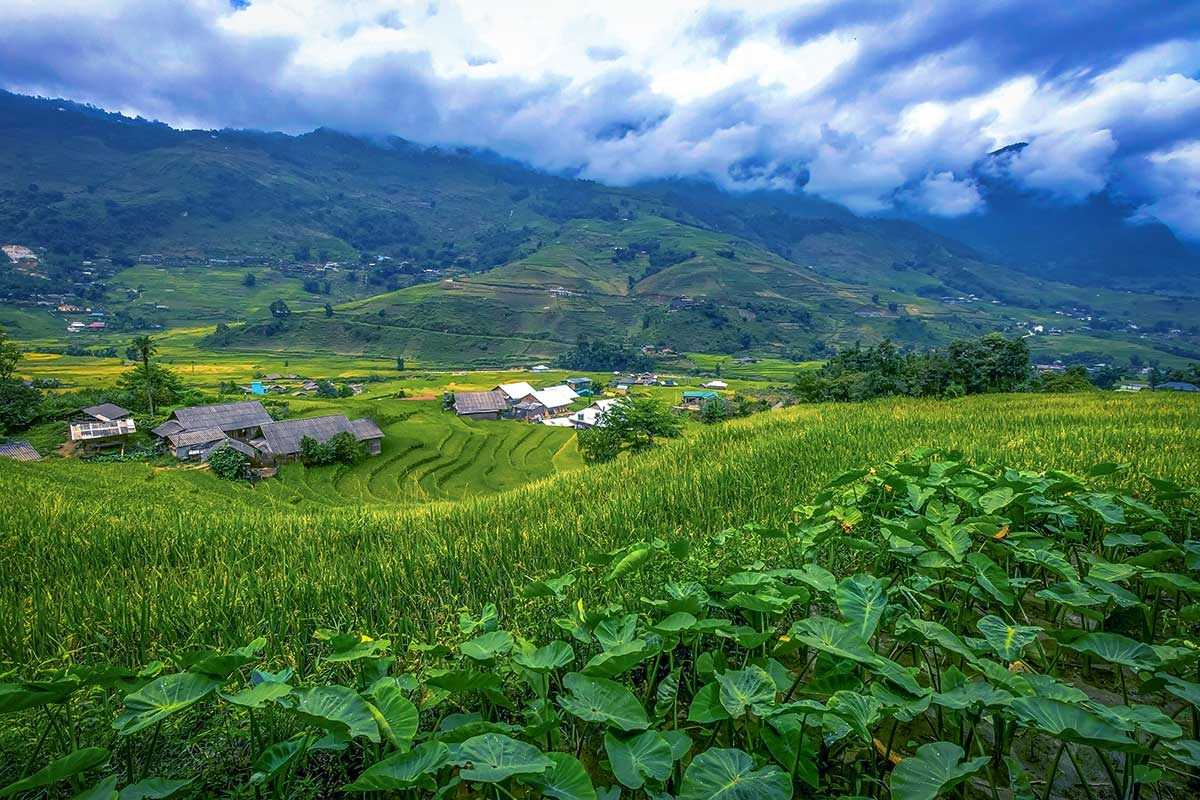
Dive Into Hmong Culture and Crafts in Lao Chai Village Sapa
Exploring Lao Chai Village Sapa isn’t just about seeing new places—it's about hands-on discovery and supporting the creative spirit of the Hmong community. Here, cultural engagement goes far beyond observation. You’re invited to roll up your sleeves, try your hand at ancient textile arts, and take home authentic keepsakes that tell a story. Every interaction in a workshop or market is a chance to learn, connect, and make your travel truly matter.
Traditional Embroidery and Indigo Dyeing Workshops
Taking part in a Hmong embroidery workshop or an indigo dyeing session is a highlight of any visit to Lao Chai Village Sapa.
- Step-by-step instruction: Skilled Hmong artisans guide you through every phase, from threading the needle to the finishing details on a fabric pouch.
- Indigo dyeing Sapa process: Watch as white cloth transforms to deep blue in bubbling vats, and try dipping your own piece.
- Cultural meaning: Each pattern has a story, representing family history, beliefs, and identity.
- Take home your own creation: Walk away with a handmade item, a tangible memory of your learning and the village’s creativity.
- Hands-on learning: The process is slow, soothing, and deeply connecting, offering a window into generations of tradition.
Immersing yourself in textile arts at Lao Chai Village Sapa means leaving with more than a souvenir—you gain new skills, respect for the artisans, and a deeper sense of place. Ready to get creative? Ask your homestay host or visit Asia Travel Links for details on local workshops.
Visit to Local Markets and Artisan Collectives
Markets in Lao Chai Village Sapa are more than places to shop—they’re lively hubs of tradition and personal exchange.
- Lao Chai local market: Wander between stalls where Hmong women sell intricate brocades, handwoven scarves, and silver jewelry.
- Sapa artisan crafts: Find unique items that support local makers—each purchase is a direct investment in the community.
- Ethical shopping advice: Bargain respectfully, but never haggle too hard. Understand the time and effort behind each craft.
- Meet the makers: Don’t be shy—ask questions and listen to stories. Many artisans love to share the meaning behind their creations.
- Craft collectives: Some groups pool their resources to empower women, preserve skills, and offer fair prices for quality work.
Every visit to a market or craft collective in Lao Chai Village Sapa is a chance to connect, support tradition, and bring home something truly meaningful. If you’re looking for guidance on where to shop ethically, your host or Asia Travel Links can point you to reputable vendors and collectives.
Let your curiosity lead you into the workshops and markets of Lao Chai Village Sapa—and come away with both skills and stories that last a lifetime.
David's Dyeing Discovery: The Art of Indigo
You hear a lot about the vibrant textiles of the Hmong people when you plan a trip to Lao Chai Village Sapa. I’d seen the beautiful indigo-dyed fabrics on countless women in the village, but I wanted to understand the magic behind the deep, rich blue. That curiosity led me to an artisan workshop Lao Chai offers – an indigo dyeing experience that was far more than just a craft session; it was a deep dive into centuries of tradition and a testament to incredible patience.
Stepping into Ms. Ly's workshop, I was immediately struck by the faint, earthy scent of fermentation – a sweet, almost mossy aroma that I soon learned was the very essence of the indigo dye vat. The room was simple: earthen floor, a wooden table covered in fabric scraps, and at its heart, a large, dark vat bubbling gently. My initial feeling was one of anticipation, mixed with a little apprehension – could I, with my notoriously clumsy hands, truly create something beautiful? Ms. Ly, a woman whose hands bore the permanent blue stain of her craft, greeted me with a warm smile and a gesture towards the raw, off-white hemp fabric.
She began by showing me the raw indigo leaves, describing how they are fermented in vats, a process that can take weeks, even months. It was fascinating to learn that the dye isn't actually blue in the vat; it only transforms to that iconic hue when exposed to air. Then came the hands-on part. She demonstrated a simple resist-dyeing technique, meticulously folding and tying sections of fabric with string to create patterns. The feel of the fabric, coarse and natural, was a stark contrast to the smooth, almost liquid quality of the dye. I plunged my own piece into the dark, murky liquid. The dye felt cool and slightly viscous, coating the fabric instantly. We left it submerged for a few minutes, the anticipation building.
When I pulled it out, it was still a greenish-yellow. My heart sank a little, but Ms. Ly just smiled. "Wait," she said, nodding towards the air. Within seconds, as oxygen hit the fibers, the most incredible color transformation began. The fabric slowly, magically, turned from pale green to a deep, mesmerizing blue right before my eyes. It was a moment of pure wonder, a visible demonstration of chemistry and traditional creative process. We repeated the dipping process multiple times, each dip deepening the blue, requiring incredible patience. My sensory experience was complete: the earthy smell of the dye, the feel of the wet fabric, the visual delight of the changing color, and the satisfying weight of the finished product.
This wasn't just about learning a technique; it was about appreciating the artistry, the time, and the generational skills passed down through families like Ms. Ly's. My expertise now includes understanding that the beautiful textiles of the Hmong people are not merely clothes or souvenirs, but living testaments to their culture, their connection to nature, and their profound patience. It truly deepened my appreciation for the word "craft."
If you’re interested in this incredible art, here’s what I learned:
- Ask for a "Hands-On" Opportunity: Many artisans are happy to share. Inquire about workshops or opportunities to participate, even briefly, in their daily work.
- Don't Fear the Stains (Much): Wear old clothes or an apron. Indigo will stain, but it's part of the authentic experience!
- Appreciate the Process: Understand that true indigo dyeing is a long, multi-step process. Don't expect instant results, and marvel at the artisan's dedication.
- Support Ethically: If you buy a piece, purchase directly from the artisan you learn from, or from a reputable community collective. This ensures fair compensation.
- Ask About the Patterns: Hmong embroidery and dyeing often carry symbolic meanings. Ask your artisan about the stories behind their designs.
- Embrace the Unexpected: Your piece might not be perfect, but its imperfections tell the story of your indigo dyeing experience.
My indigo dyeing discovery in Lao Chai Village Sapa was a profound reminder that some of the most beautiful and meaningful travel experiences are found when you step out of your comfort zone and try your hand at something new, something deeply rooted in local tradition. It transformed my understanding of a simple color into an appreciation for a vibrant cultural art form.
Recommendation: For a truly enriching and unforgettable cultural experience in Lao Chai Village Sapa, seek out an artisan workshop Lao Chai offers, particularly one focused on indigo dyeing. It's an incredible opportunity to engage with Hmong traditions, witness a magical color transformation, and develop a deep appreciation for the generational skills that define this captivating craft. Dive in; your hands (and your heart) will thank you!
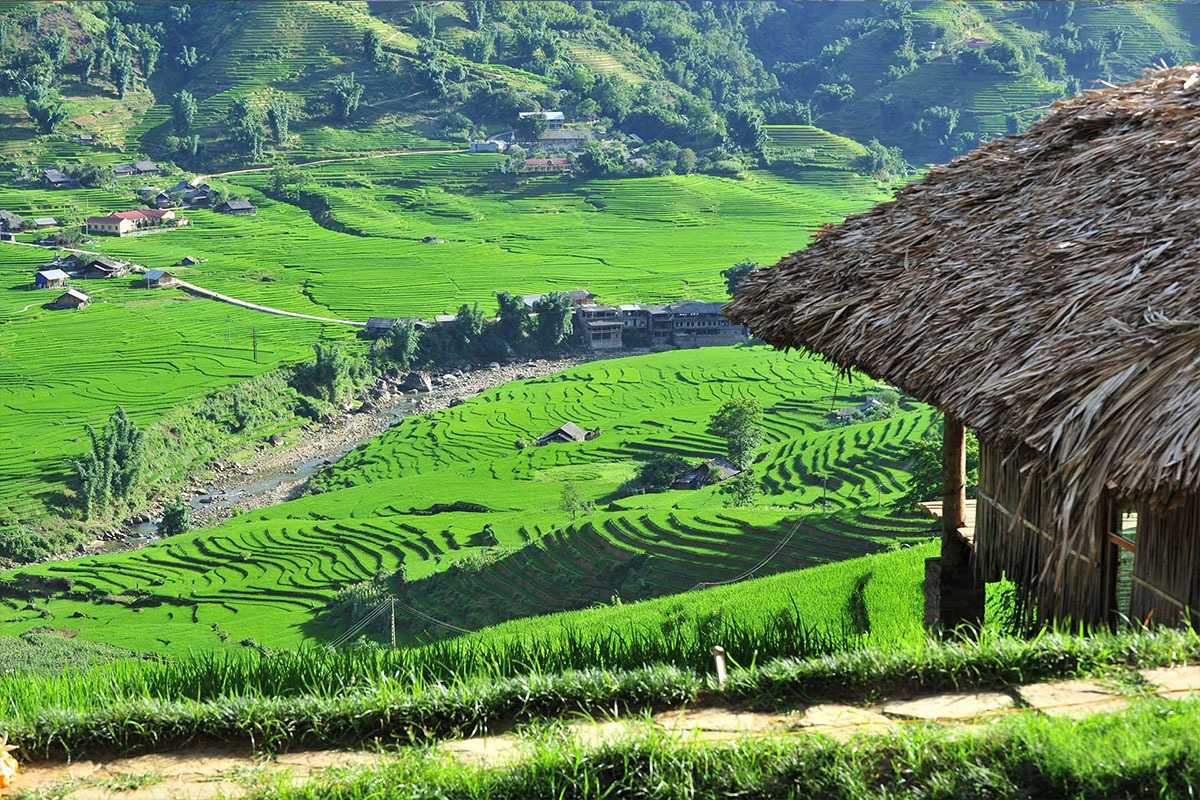
Farm Life and Village Experiences in Lao Chai Village Sapa
Spending time in Lao Chai Village Sapa isn’t just about sightseeing—it’s an invitation to step directly into the daily pulse of rural life. Here, you’ll find more than postcard landscapes. You’ll experience the steady rhythms of farming, share everyday moments with local families, and discover the deep connection between the people and the land. Whether you’re drawn to hands-on work or simply observing the cycle of village routines, every day brings new lessons and connections.
Try Your Hand at Rice Planting or Harvesting
Rolling up your sleeves for farm work is a highlight for many who visit Lao Chai Village Sapa.
- Seasonal timing: Join rice planting in late spring or early summer, or return for the golden harvest in September and October.
- Rice planting Sapa: Stand barefoot in cool, muddy fields, side by side with local farmers, as you tuck young rice shoots into the earth.
- Rice harvest experience Lao Chai: Swing a sickle, gather heavy sheaves, and feel the satisfaction of working as part of a team.
- Food production insight: Learn how the rice you see on every table is grown, harvested, and turned into daily meals.
- Shared accomplishment: The sense of community and teamwork is real—expect laughter, encouragement, and a meal at the end of a hard morning.
Participating in seasonal farm work lets you see Lao Chai Village Sapa through the eyes of those who shape its landscape. If you’re eager to help, just ask your homestay host when you arrive for the best timing.
Daily Routines: Cooking, Animal Care, and More
There’s beauty in the quiet routines of Lao Chai daily life, and visitors are always welcome to lend a hand or simply observe.
- Cooking: Step into a smoky kitchen, help prepare fresh vegetables from the garden, or learn to make simple Hmong dishes over an open fire.
- Animal care: Feed pigs, ducks, or chickens, and see how every animal supports the village’s food supply.
- Village medicine: Watch elders gather wild herbs for traditional remedies, or ask to join a foraging walk.
- Preparing for the day: Wake to the sound of roosters, join in sweeping the courtyard, or help collect kindling for the morning fire.
- Quiet rhythms: Savor the unhurried pace of village life, where conversation, laughter, and simple chores are woven into every day.
By joining in daily activities, you gain real insight into Lao Chai Village Sapa and the heart of its rural routines. It’s a chance to slow down, learn new skills, and appreciate the genuine hospitality that makes this place unforgettable. If you want to get involved, let your hosts know—they’ll be happy to show you the ropes.
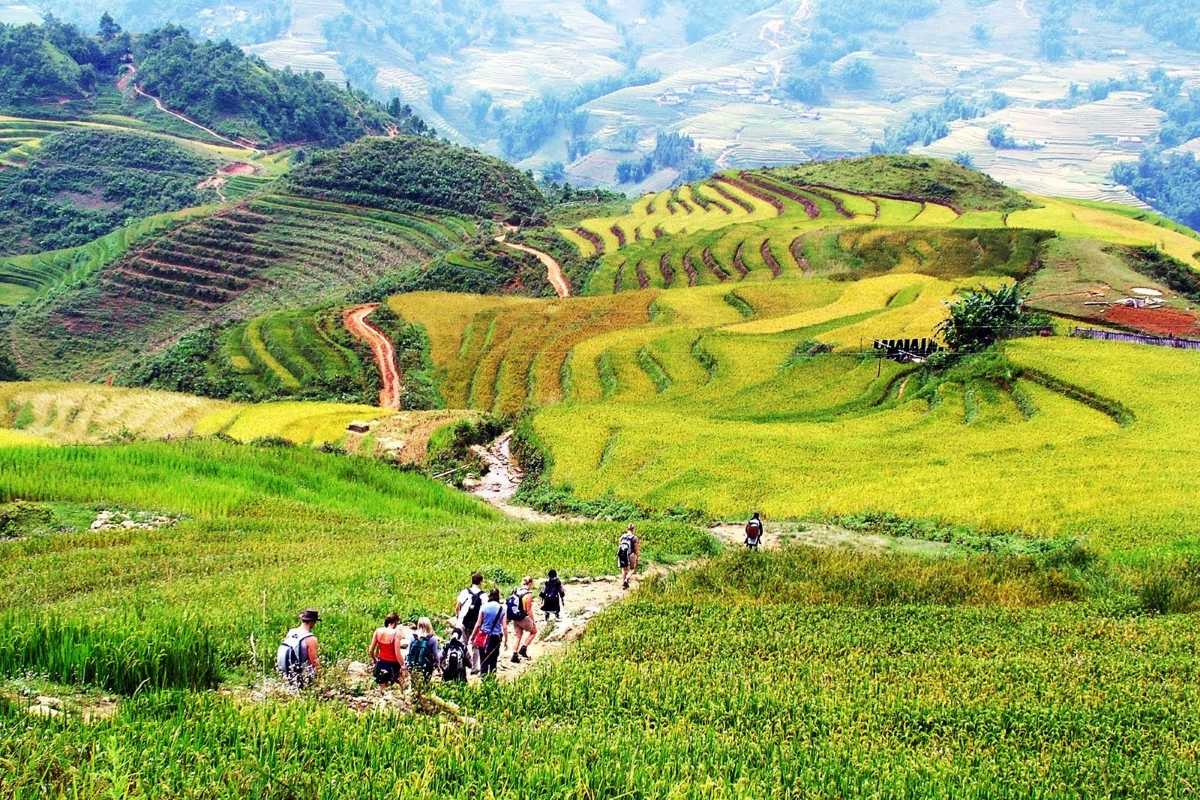
Relax and Savor the Scenery in Lao Chai Village Sapa
Sometimes, the most profound memories come not from movement, but from moments of stillness. Lao Chai Village Sapa rewards those who pause to breathe in the landscape, listen to the hush of the valley, and simply soak up the view. Here, you can let go of the rush and rediscover the art of slowing down, surrounded by natural beauty at every turn.
Photography Hotspots and Scenic Lookouts
For travelers with a camera—or even just a phone—Lao Chai Village Sapa is a living gallery of light, shadow, and vibrant color.
- best photo spots Lao Chai: Visit the viewpoint just above the main cluster of homes for classic panoramic shots of the rice terraces stretching toward the horizon.
- Sapa scenic views: Wander down any path at golden hour and you’ll find the sunlight painting the valley in soft hues, perfect for wide landscape photos.
- Landscape and village life photography: Capture daily life scenes—farmers in the fields, children playing by the river, the slow drift of mist across morning rooftops.
- Sunset compositions: Look for high ground near the western edge of the village for unforgettable sunset shots, where the sky blazes and the terraces gleam.
- Ethical photography: Always ask before photographing people, especially elders or children. A smile and a gesture go a long way.
From sunrise to dusk, every corner of Lao Chai Village Sapa offers a new frame. Don’t rush—let the light guide you, and you’ll take home memories as vivid as your photos.
Quiet Moments in Village Cafes or Tea Houses
If you crave true relaxation, seek out the simple joys of Lao Chai cafes and Sapa tea houses.
- Village cafes: Sip robust local coffee or herbal tea while gazing at the terraced slopes just outside the window.
- Sapa tea houses: Enjoy delicate teas made from mountain herbs, each cup reflecting the flavors of the region and the warmth of the hosts.
- Local drinks: Try homemade rice wine (best sipped slowly) or freshly squeezed sugarcane juice for a refreshing treat.
- Peaceful setting: Most spots are rustic, quiet, and surrounded by views—perfect for reading, journaling, or quiet conversation.
- Village life: As you relax, notice the ebb and flow of daily routines, the laughter from a nearby courtyard, or the distant echo of a flute at dusk.
Unwinding in a simple cafe or tea house in Lao Chai Village Sapa is about more than a drink—it’s a pause that grounds you in the moment. Linger, savor, and let the peace of the village become your own.
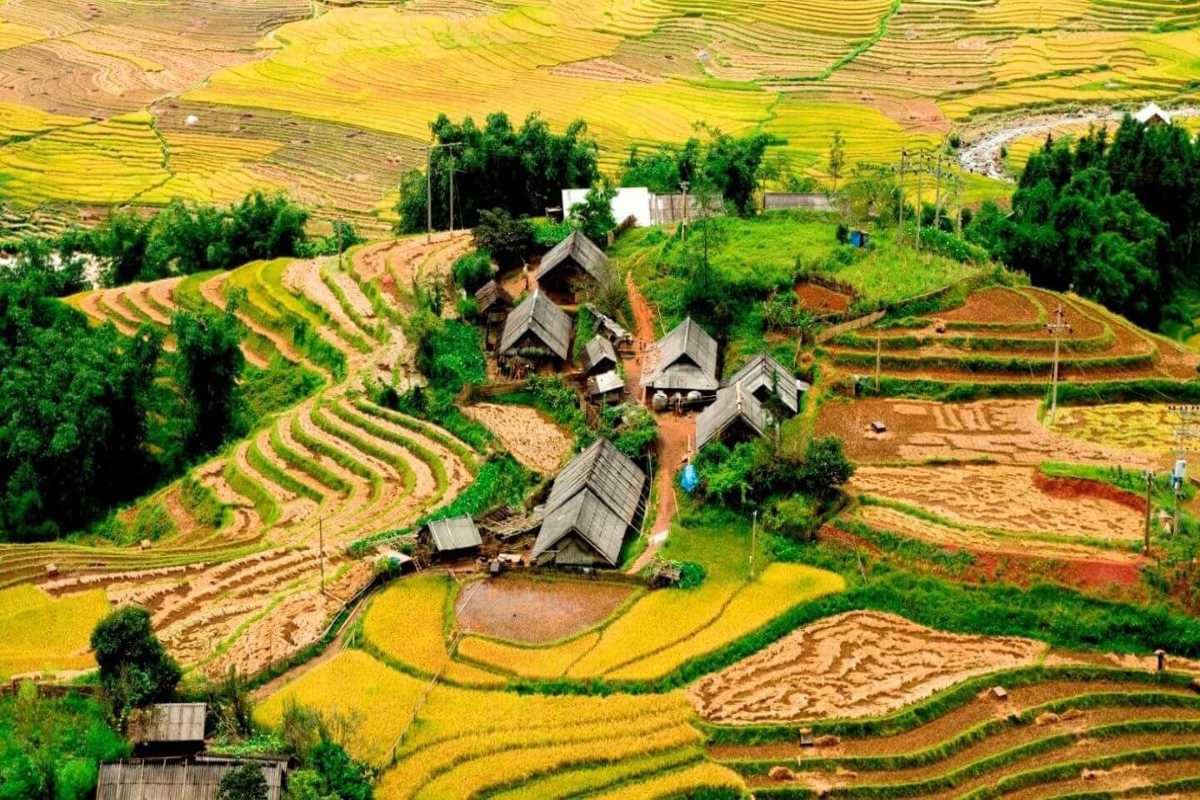
Discover the Wonders Nearby: Day Trips and Surroundings
Lao Chai Village Sapa is your gateway to a landscape dotted with ancient mysteries, wild waterfalls, and colorful neighboring villages. Make your stay richer by venturing beyond the rice terraces to discover the full spectrum of Sapa’s natural and cultural wonders. Every day trip reveals a new side of this remarkable region, giving you more reasons to linger and explore.
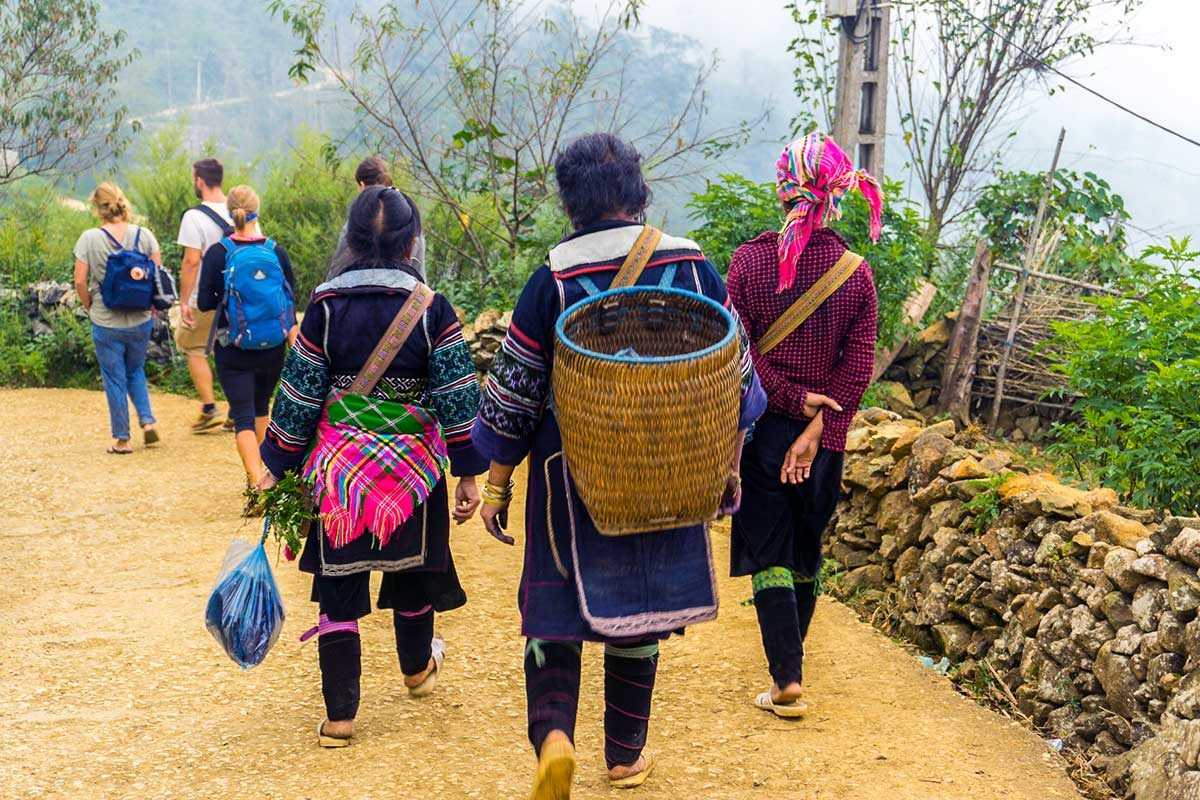
Exploring the Muong Hoa Valley
The Muong Hoa Valley, running through the heart of Lao Chai Village Sapa, is more than a scenic backdrop. It is a tapestry of history, culture, and unforgettable views. The valley not only connects several ethnic villages but also shelters stories etched into stone and witnessed by generations. A day spent exploring here brings both stunning panoramas and fascinating glimpses into the past.
Ancient Stone Carvings and Panoramic Views
Hidden along the valley floor, the Muong Hoa Valley stone carvings offer a unique connection to the region’s prehistoric past.
- Muong Hoa Valley stone carvings: Discover clusters of ancient engravings, some believed to be thousands of years old, scattered across the open fields between villages.
- Sapa ancient sites: Explore these little-known archaeological treasures with a local guide to uncover their stories, patterns, and possible meanings.
- Panoramic views: Hike up to the marked viewpoints on the valley rim for sweeping vistas—especially beautiful at sunrise or just before dusk.
- Prehistoric rock art: Marvel at the mystery and artistry of the carvings, which blend naturally into the wild, open landscape.
- Valley history: Learn from guides or homestay hosts about the legends and theories surrounding these sites, making your visit both visually and intellectually rewarding.
A visit to the ancient sites of Muong Hoa Valley weaves together natural beauty and cultural intrigue. These are not just stones—they are silent witnesses to centuries of Sapa history, waiting for curious travelers to pause and wonder.
If you’re looking for more ideas or wish to arrange a guided day trip to these fascinating places, you can always reach out to us at Asia Travel Links for local insight and expert planning.
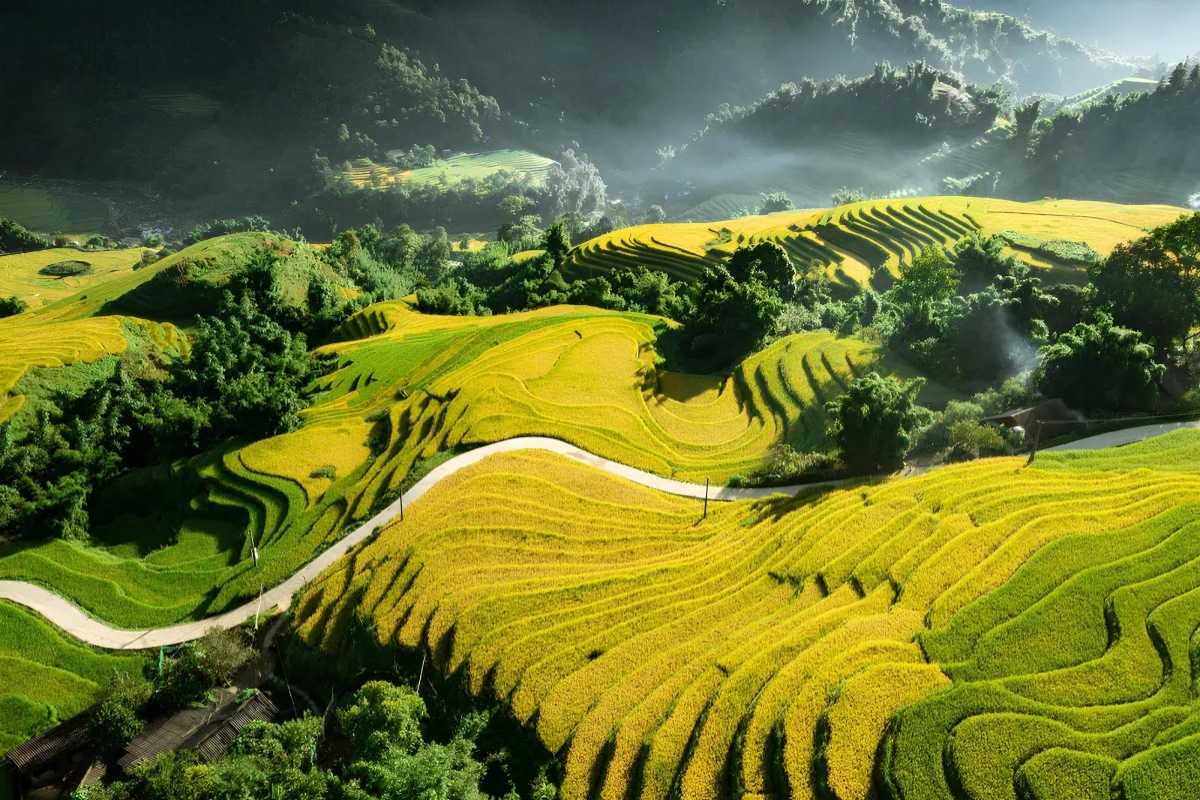
Visiting Neighboring Villages
Curious to experience more than just Lao Chai Village Sapa? This region is a mosaic of cultures and landscapes, with neighboring villages just a short walk or ride away. Each stop adds a new chapter to your Sapa journey—offering distinct traditions, crafts, and breathtaking scenery. Embracing this diversity transforms a simple visit into a memorable, multi-village adventure.
Ta Van, Y Linh Ho, and Giang Ta Chai: What to See and Do
A day of “village hopping” from Lao Chai Village Sapa uncovers surprising variety just beyond your doorstep.
- Ta Van village Sapa: Famous for its peaceful atmosphere and home to the Zay ethnic group. Here you can admire traditional stilt houses, try local food specialties, and witness how different customs shape daily life. The riverside setting is ideal for gentle walks and scenic photography.
- Y Linh Ho: Smaller and less visited, Y Linh Ho is an authentic Black Hmong community where the terraced fields seem to flow endlessly down the hillsides. It’s perfect for travelers seeking solitude, mountain vistas, and a more intimate look at rural craftwork.
- Giang Ta Chai: Nestled beside a beautiful waterfall, this Red Dao village bursts with vibrant culture. Expect to see women in bright, hand-embroidered costumes, and experience local herbal baths or join in traditional music and dance during festivals.
- Ethnic diversity and crafts: Each village specializes in its own textile arts, from indigo dyeing to intricate embroidery. Markets and roadside stalls are excellent spots for meeting artisans and collecting truly local souvenirs.
- Regional highlights: The journey between villages is a highlight itself—quiet forest trails, bamboo bridges, and endless photo opportunities as you pass through fields and hamlets.
Exploring Ta Van, Y Linh Ho, and Giang Ta Chai offers a richer perspective on the ethnic mosaic of Sapa. Plan a flexible route or join a guided tour for deeper cultural encounters and practical travel support.
Ready for a seamless multi-village adventure? Contact Asia Travel Links for custom itineraries, local guides, and in-depth cultural experiences tailored to your interests.
Maria's Village Hopping Adventure: Beyond Lao Chai
Staying in Lao Chai Village Sapa is an immersive experience in itself, but the true tapestry of the Muong Hoa Valley reveals itself when you venture a little further. I wanted to see how the other Hmong and Red Dao communities lived, to understand the subtle differences in their traditions and daily lives. My multi-village experience Sapa offered wasn't just a scenic walk; it was a journey of discovery, revealing unique cultural nuances that you simply won't find on a single stop.
My adventure began early one misty morning from Lao Chai, with my local guide, Linh, leading the way. The air was cool and damp, carrying the scent of wet earth and distant cooking fires. Our first destination was Ta Van, a village known for its wooden houses and the Zay ethnic minority. The path wound along the contours of the rice terraces, offering breathtaking views that shifted with every turn. I noticed immediately that Ta Van felt a little more developed than Lao Chai, with more guesthouses and small cafes, yet it still retained its tranquil charm. I observed the distinctive Zay traditional dress, subtly different from the Hmong attire I'd grown accustomed to in Lao Chai, and lingered at a local bridge, watching children play.
From Ta Van, Linh suggested we push on to Y Linh Ho. This part of the trek was a bit more challenging – narrower paths, steeper ascents, and stretches that felt wonderfully remote, truly off the well-trodden tourist circuit. The sounds changed too: the rush of the stream became more pronounced, and the chatter of villagers faded, replaced by birdsong and the rustle of bamboo. The rewards were immense. Y Linh Ho felt incredibly authentic, its houses clinging to the hillsides, smoke curling lazily from their roofs. I spotted women weaving intricate patterns on looms outside their homes, their hands moving with practiced precision. These were the quiet, unfiltered moments that make village hopping Sapa so rewarding. My cultural observations deepened with every step.
The journey between these villages, often along less-traveled trails, was itself an adventure. There were muddy patches that required careful foot placement and steep descents where Linh offered a steadying hand. But these minor challenges only added to the sense of accomplishment. We stopped for a simple lunch at a local stall in Ta Van, enjoying fresh spring rolls and strong Vietnamese coffee, observing the ebb and flow of daily life around us. The day trip logistics were smoothly handled by Linh, who navigated the paths with an intuitive grace, occasionally bartering for fresh fruit from roadside vendors. Every encounter felt like a genuine exchange, from a quick wave to a shared smile, reinforcing the warmth of the local people.
My multi-village experience Sapa provided a powerful lesson: each village, while seemingly similar, possesses its own distinct character, shaped by its dominant ethnic group, its location, and its rhythm of life. It’s a testament to the diverse and rich cultural tapestry of the region. Being able to compare the feel of Lao Chai Village Sapa with Ta Van and Y Linh Ho offered a much richer, more nuanced understanding of the local communities. This wasn't just about ticking off villages; it was about soaking in the unique atmospheres and seeing the subtle beauty in their differences.
If you're planning your own village-hopping adventure, here are some insights from my trip:
- Hire a Local Guide: Absolutely essential for navigating the trails, understanding local customs, and facilitating local encounters. They're also vital for efficient transportation back if you don't want to trek the whole way.
- Wear Appropriate Footwear: Sturdy, waterproof hiking boots are a must. Trails can be slippery, especially after rain.
- Carry Cash: Smaller villages have limited facilities. Cash is king for snacks, drinks, or small artisan purchases.
- Pack Light, But Be Prepared: Water, snacks, sunscreen, insect repellent, and a light rain jacket are crucial.
- Be Flexible: The most memorable moments are often spontaneous. Be open to impromptu stops or changes in plans.
- Respect Local Customs: Always ask permission before taking photos of people. Dress modestly.
This journey beyond Lao Chai cemented my belief that the true magic of Sapa lies in its diverse communities and the beautiful, varied stories they tell. It's a genuine challenge but one rewarded by unparalleled insights and indelible memories.
Recommendation: While Lao Chai Village Sapa is wonderful, I highly recommend extending your stay to include a multi-village experience Sapa. Venturing out to nearby communities like Ta Van and Y Linh Ho will deepen your understanding of the region's rich cultural mosaic. It's an unforgettable adventure that offers diverse cultural observations and countless opportunities for authentic local encounters. Just be prepared for varied day trip logistics and bring an open mind!
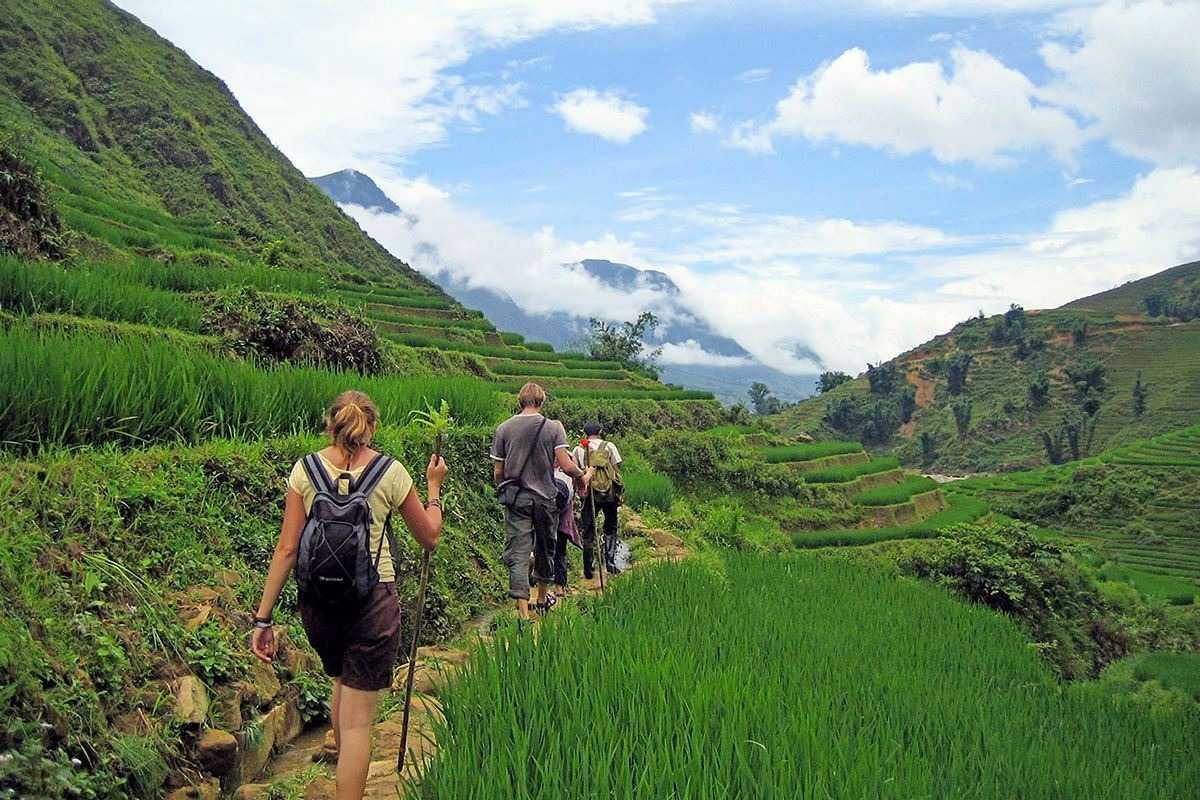
Waterfalls, Forest Trails, and Nature Escapes
Beyond the cultural wonders of Lao Chai Village Sapa, the surrounding nature calls for peaceful retreats and gentle adventure. Here, you can lose yourself in the soothing sounds of Sapa’s waterfalls, follow forest trails shaded by ancient trees, and find secret spots to rest, picnic, or simply breathe deeply. Nature here is both playground and sanctuary, making every moment outside the village as memorable as those within.
Best Spots for a Refreshing Break
When you crave a break from village life, the natural gems around Lao Chai Village Sapa offer instant escape.
- Sapa waterfalls: Giang Ta Chai waterfall is a short trek from the village, tumbling over rocks into a cool, shaded pool perfect for quick dips or picnics.
- Forest trails Lao Chai: Several well-worn paths wind through bamboo forests and rice terraces, ranging from easy strolls to more challenging hikes, each revealing hidden rest spots and wildflowers.
- Picnic spots: Look for flat stones or grassy banks along Muong Hoa Stream, where you can lay out a simple meal and listen to the water rush by.
- Natural pools: After rain, small, crystal-clear pools appear along the forest edges—refreshing places to cool your feet.
- Relaxing views: The best rest stops often offer sweeping valley views, especially at sunrise or sunset. Bring a book, a camera, or simply yourself.
Whether you want a brisk walk or a lazy afternoon surrounded by the beauty of Sapa, these local nature escapes help you reconnect, recharge, and soak in the landscape at your own pace. For custom hiking routes or picnic planning, reach out to Asia Travel Links for up-to-date advice and expert recommendations.
Birdwatching and Local Wildlife
Nature lovers and curious travelers will discover that Lao Chai Village Sapa is a quiet haven for birdwatching and spotting local wildlife.
- Birdwatching Sapa: Early mornings and late afternoons are best for observing colorful species like the Red-whiskered Bulbul or the Silver-eared Mesia near bamboo groves and streamside thickets.
- Sapa wildlife: Watch for squirrels, butterflies, or even the rare sight of a civet or muntjac deer at the forest edge, particularly on less-traveled paths.
- Native species: Listen for the songs of native cuckoos and warblers; patient watchers might spot them flitting between rice paddies and woodland.
- Observation tips: Move quietly, wear neutral clothing, and bring binoculars for the best chance at seeing shy animals.
- Eco-friendly travel: Always stick to marked trails and avoid disturbing nests or habitats to help preserve the region’s rich biodiversity.
The forests and fields around Lao Chai reward those who explore slowly and respectfully. Responsible wildlife watching is not just about sightings—it’s a way to connect deeply with Sapa’s living ecosystem and leave a gentle footprint. For guided nature walks or ethical birdwatching experiences, contact Asia Travel Links for insider support and practical tips.
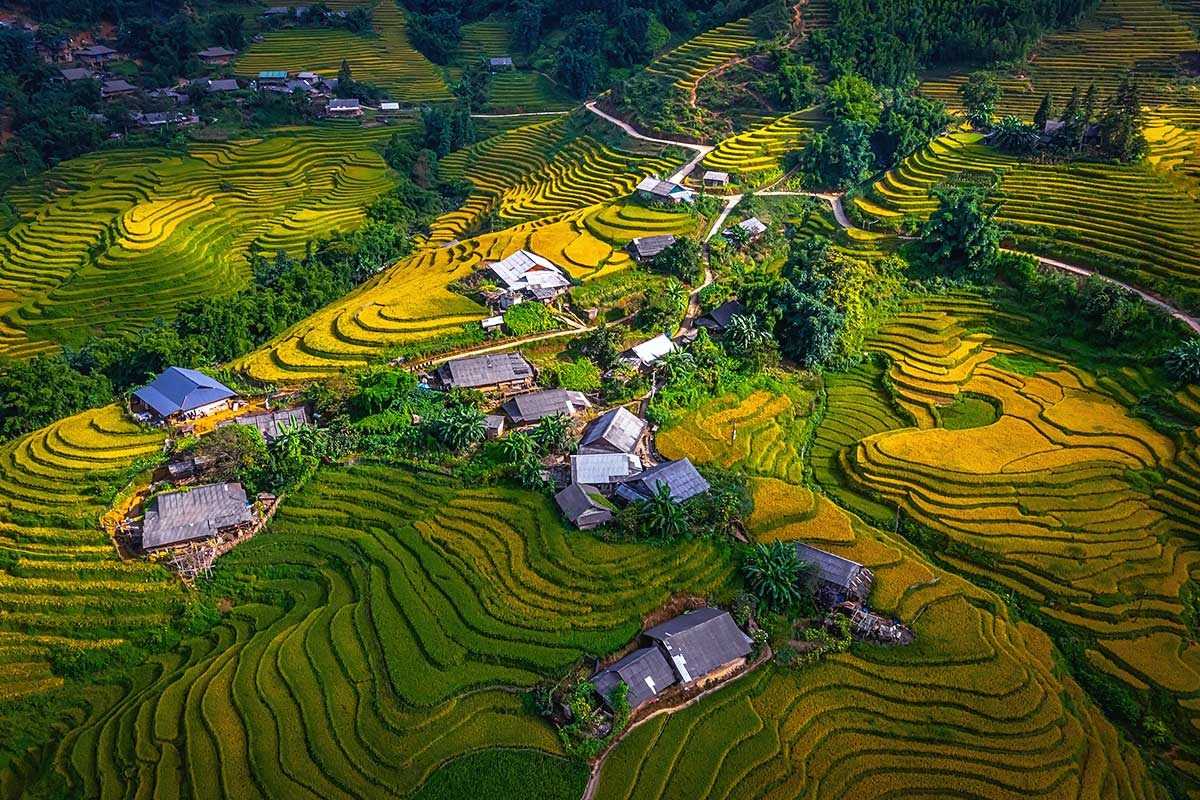
Practical Tips for a Memorable Visit
A rewarding journey to Lao Chai Village Sapa starts with a little practical know-how. Smart preparation, cultural respect, and the right gear mean fewer surprises and more moments to savor. Whether you’re planning your first trek, seeking food advice, or curious about local etiquette, these quick-reference tips are designed to keep you healthy, connected, and comfortable from day one. By learning a few essentials before you go, you’ll get the best out of every hour in Sapa.
Equip yourself with the tips below and set the stage for an unforgettable adventure in Lao Chai Village Sapa. For tailored, up-to-date planning support, reach out to Asia Travel Links—our team is here to help every step of the way.

What to Pack and How to Prepare
Thoughtful packing and prep make all the difference on a trip to Lao Chai Village Sapa. Weather shifts fast, and mountain terrain rewards those who come ready for anything. A well-packed bag, plus a little insight into Hmong etiquette, will smooth your experience and help you connect respectfully with locals.
Weather Gear, Footwear, and Local Etiquette
To get the most from your time in Sapa, make sure you have the essentials—and a few cultural pointers.
- Weather gear: Pack a waterproof jacket and several light layers. The weather in Sapa can swing from hot to chilly, dry to damp, even in a single day.
- Footwear: Choose sturdy, comfortable trekking shoes with good grip. Trails may be steep or muddy after rain.
- What to pack for Sapa: Bring a small backpack for day hikes, a reusable water bottle, sunscreen, insect repellent, and a sun hat.
- Sapa trekking gear: Don’t forget a headlamp, especially if you plan to walk back after sunset, and basic medical supplies.
- Hmong etiquette: Dress modestly (shoulders and knees covered), always ask permission before photographing people, and never give money directly to children. Gifts of school supplies to families are appreciated.
A few moments spent packing wisely and learning about etiquette ensures you stay comfortable and are welcomed wherever you go. For gear rental and up-to-date advice, contact Asia Travel Links for trusted local tips.
Cash, Connectivity, and Language Essentials
Some practical planning will help you avoid common travel hiccups and stay connected.
- Sapa currency: Bring enough Vietnamese Dong in small notes. ATMs are rare in the village and may not work with international cards.
- Mobile data Sapa: Buy a local SIM card in Hanoi or Sapa for the best coverage—Viettel and Mobifone usually offer the strongest signal in rural areas.
- Language essentials: Learn a few basic Vietnamese phrases and greetings. Locals will appreciate your effort, even if your pronunciation isn’t perfect.
- Connectivity: Wi-Fi is available in most homestays, but service can be spotty. Download maps and key travel info before arriving.
- Communication: If you’re joining guided treks or tours, clarify your pick-up points and schedules in advance.
A bit of foresight goes a long way in Sapa. With the right cash, a working phone, and a few words of Vietnamese, you’ll feel at home and ready for every adventure. If you need language help or booking support, email us at Asia Travel Links for advice in English and Vietnamese.

Health, Safety, and Responsible Travel
Traveling to Lao Chai Village Sapa can be a life-changing experience—if you take care of your health, travel with respect, and keep the community’s well-being in mind. A few practical precautions and mindful choices will help you stay safe and ensure your visit benefits both you and the people of Sapa.
Staying Healthy and Respecting Village Customs
Staying healthy in the mountains and being a thoughtful guest are the building blocks of a successful journey.
- Sapa health tips: Always drink bottled or boiled water; avoid ice in drinks and stick to freshly cooked, hot food from reputable sources.
- Responsible tourism Lao Chai: Carry and use mosquito repellent, especially during the rainy season, and bring a basic first aid kit for minor cuts or bites.
- Village customs: Greet locals with a smile and polite nod, keep your distance when photographing people, and never enter homes without an invitation.
- Respecting privacy: Observe but do not intrude on daily life—some rituals and areas may be private or sacred.
- Bottled water and food safety: If you’re unsure about food preparation, ask your host or guide. Eating with your host family is not just safe, but a special part of the Lao Chai Village Sapa experience.
By following these basics, you’ll enjoy your trip in good health and with the gratitude of your hosts. For updated advice or medical contacts in Sapa, reach out to Asia Travel Links before or during your visit.
Sustainable Tourism: How Your Visit Makes a Difference
Sustainable travel is about leaving a place better than you found it. Every small, positive choice counts in Lao Chai Village Sapa.
- Sustainable travel Sapa: Choose homestays and tours that are community-run or locally managed.
- Ethical tourism Vietnam: Buy handmade products directly from artisans instead of mass-produced souvenirs.
- Responsible tourism: Reduce waste—bring a reusable bottle and bag, and avoid single-use plastics.
- Support local: Eat at family-run cafes, use local guides, and pay fair prices.
- Stay on marked trails: Protect terraced fields and fragile mountain ecosystems by sticking to established paths.
The impact of each visitor adds up. When you travel consciously, you support families, help preserve traditions, and protect the natural beauty of Sapa and Vietnam for years to come. Want to learn more about how your journey can make a difference? Email us at Asia Travel Links for practical tips and responsible travel options tailored to your style.

Navigating Food and Dietary Preferences
Traveling to Lao Chai Village Sapa is a culinary adventure, but it also requires a bit of planning if you have special dietary needs or want to make the most of the local food scene. With a little preparation, you can savor every bite and enjoy authentic flavors while staying true to your preferences.
Vegetarian Options and Hmong Cuisine Highlights
Finding delicious, suitable meals in Lao Chai Village Sapa is easier than you might think, whether you’re a vegetarian or just eager to sample classic Hmong cuisine.
- Vegetarian food Sapa: Most homestays and local eateries can prepare simple vegetarian dishes if you let them know in advance. Dishes often feature local vegetables, tofu, eggs, and sticky rice.
- Local dishes Lao Chai: Don’t miss “thang co” (for adventurous eaters), grilled pork skewers, or fresh spring rolls. Ask your host for their favorite recipes or local specialties—they love to share!
- Hmong cuisine: Sapa’s food culture is shaped by the seasons, so expect hearty stews, mountain herbs, and homegrown ingredients in every meal.
- Plant-based eating: Communicate your dietary needs with a phrasebook, translation app, or even a hand-written note. Most hosts are accommodating if you ask kindly.
- Food preferences: Try joining a family cooking session for hands-on learning—this is often the best way to ensure your meal meets your preferences.
A little openness goes a long way here. Let your hosts know about your preferences, and you’ll discover new flavors while enjoying the warm hospitality of Sapa and the Hmong people. If you want more detailed guidance or sample menus, feel free to email us at Asia Travel Links before your trip.
Sarah's Foodie Discoveries: From Foraged Greens to Homemade Rice Wine
You can read all the travel blogs about the stunning landscapes of Lao Chai Village Sapa, but to truly taste the heart of this place, you have to delve into its food. My trip wasn't just about admiring the views; it became a delightful culinary journey, from discovering foraged greens to tasting authentic homemade rice wine Sapa style. These food experiences Sapa offers are deeply rooted in tradition and burst with incredibly fresh, unexpected flavors.
My first evening at my homestay, the air was already thick with the comforting aroma of dinner cooking over an open fire. I noticed a large basket overflowing with various unfamiliar leafy greens by the hearth. Curious, I asked my host, Ms. Pao, about them. With a warm smile, she gestured for me to follow. We stepped out, and she led me just a few meters from the house, pointing out different plants growing wild along the pathways and edges of the rice paddies. She explained how these were collected daily, adding unique flavors and nutrients to their meals. It was a revelation – seeing food sourced literally from their backyard, minutes before it hit the pan. This direct connection to the land immediately elevated every bite.
Later, as Ms. Pao expertly stir-fried these freshly gathered greens with garlic and a hint of chili, the aromas were intoxicating. The finished dish was crunchy, earthy, and unlike any greens I'd ever tasted – a perfect example of how local ingredients transform a simple meal. But the true highlight came later that evening. After dinner, Ms. Pao brought out a small, dark bottle and two tiny cups. "Rice wine," she announced, her eyes twinkling. The homemade rice wine Sapa is known for is a family tradition, and this batch was potent, yet surprisingly smooth and slightly sweet. As we sipped, the warmth spreading through me, Ms. Pao shared stories of her family, of harvests, and of the village, breaking through language barriers with shared laughter and gestures. It was a moment of true communal dining, a simple yet profound sharing of culture.
Another memorable discovery was the "thang co" stew at a small, local eatery during a village market day. Known for its strong flavors and unique ingredients (including various parts of buffalo), it's definitely for the adventurous eater. While it pushed my boundaries, tasting it felt like a vital part of understanding the robust culinary traditions of the Hmong. The depth of flavor, slow-cooked over hours, spoke volumes about their resourcefulness and heritage. Every meal in Lao Chai, whether it was a simple bowl of noodles or a full homestay dinner, was a testament to the freshness of the ingredients and the time-honored cooking methods.
My food experiences Sapa offered taught me that the most delicious discoveries aren't always found in restaurants; they're in the humble kitchens of a homestay, the wild greens of a mountainside, or a shared sip of homemade wine. It’s an incredibly intimate way to understand a culture.
If you want to embark on your own foodie adventure in Lao Chai, here are my tips:
- Be Adventurous with Greens: If your host offers foraged greens or unfamiliar vegetables, absolutely try them! They're usually incredibly fresh and flavorful.
- Ask About Ingredients: Use gestures or a translation app to ask what specific ingredients are. You’ll learn so much about local produce.
- Try Homemade Rice Wine: If offered, accept! It's a sign of hospitality and a unique cultural experience. Sip slowly – it can be stronger than you think.
- Don't Be Afraid of Market Food: Look for busy stalls at local markets. Food prepared fresh for locals is usually safe and delicious.
- Communicate Dietary Needs Early: If you have allergies or strong preferences (like vegetarianism), communicate them clearly to your homestay host in advance. They are usually very accommodating.
- Embrace Communal Dining: Most homestay meals are served family-style. Enjoy the interaction and the shared experience.
My taste buds were as enriched as my soul by my time in Lao Chai Village Sapa. From the vibrant, fresh flavors of garden-to-table meals to the warmth of homemade rice wine Sapa offers, every bite and sip felt like a deep dive into the heart of Hmong culture.
Recommendation: For a truly authentic and delicious dimension to your trip to Lao Chai Village Sapa, immerse yourself in the local culinary scene. Seek out food experiences Sapa offers through homestays, where you can discover the freshness of foraged greens and the warmth of homemade rice wine. It's an incredible way to connect with Hmong culture and create vivid, flavorful lasting memories!

Tips for Families, Solo Travelers, and Groups
Visiting Lao Chai Village Sapa is a rewarding experience for everyone, but a little targeted planning makes all the difference—whether you’re traveling as a family, on your own, or as part of a group. Here’s how to tailor your adventure for maximum enjoyment and safety.
Customizing Your Experience for Different Travel Styles
No matter your travel style, Lao Chai Village Sapa offers activities and logistics to suit your needs. Use these tips to plan a smooth, fun, and memorable stay.
- Sapa for families: Choose family-friendly Sapa homestays with spacious rooms and welcoming hosts. Ask about easy treks suitable for children and always pack snacks, warm layers, and a favorite comfort item.
- Solo travel Lao Chai: Opt for a central homestay in the heart of the village for extra safety and connection. Inform your hosts of your plans each day, join group walks, and enjoy the freedom to linger at scenic spots.
- Group tours Sapa: Coordinate transport and accommodation in advance, and consider booking a local guide for shared experiences. Group cooking sessions, craft workshops, and evening bonfires are ideal for bonding.
- Family-friendly Sapa: Bring a basic first aid kit, sunscreen, and insect repellent. Ask your host for recommendations on playgrounds or open spaces for kids to burn energy.
- Solo safety: Stay on marked trails, especially if trekking alone, and keep a list of emergency contacts. Use local guides for more remote or challenging routes.
- Group logistics: Set clear meeting points and schedules. Designate a group leader or communicator, especially for larger groups or those with children.
Thoughtful planning helps you get the most from your Sapa journey, no matter who you’re traveling with. If you have unique needs or want extra support, reach out to Asia Travel Links—we’re happy to help you customize the perfect experience for your group or family.

Supporting the Village and Sustainable Tourism
Every visit to Lao Chai Village Sapa is an opportunity to support positive change and help create a more sustainable future for this unique community. Responsible travel isn’t just about minimizing impact—it’s about leaving a place better than you found it, and fostering real benefits for local families, traditions, and landscapes.

Community Projects and Conservation Efforts
Travelers to Lao Chai Village Sapa contribute directly to local progress. Responsible tourism channels funds to grassroots development and conservation efforts that uplift the entire community and preserve the landscape for generations to come.
How Tourism Supports Education and Local Initiatives
When you choose authentic experiences in Lao Chai Village Sapa, you help support vital community projects.
- Lao Chai community projects: Homestays and guided treks directly fund school supplies, scholarships, and educational resources for children in the village.
- Sapa education initiatives: Visitor fees often contribute to maintaining local schools and providing after-school programs or cultural lessons for youth.
- Healthcare and infrastructure support: Responsible tourism has enabled upgrades to local clinics, water supply, and road maintenance, making daily life safer and healthier for villagers.
- Cultural preservation: Support from travelers encourages the continuation of traditional arts, storytelling, and intergenerational knowledge sharing.
- Visitor impact: Your choices—staying local, hiring village guides, shopping at community-run markets—ensure more income stays within Lao Chai Village Sapa.
Small actions, like choosing a homestay or buying crafts, can create big ripples. If you want to learn more or donate directly, ask your hosts about specific projects, or email us at Asia Travel Links for guidance on reputable ways to get involved.
Partnerships with NGOs and Responsible Travel Networks
Travelers can make an even greater difference by supporting initiatives backed by experienced, trustworthy partners.
- Responsible travel Sapa: Collaborate with local tourism boards and responsible travel groups that invest in sustainable practices and community development.
- NGO partnerships Vietnam: Organizations such as the Sapa O’Chau Foundation and ETHOS-Spirit of Community work with villagers to provide education, healthcare, and fair tourism opportunities.
- Ethical tourism networks: Booking through ethical networks—like Fair Travel Vietnam or community-based tourism associations—ensures your visit benefits real families and transparent projects.
- Collaboration and welfare: Many of these partners offer volunteering, teaching, or conservation opportunities if you wish to contribute time as well as money.
- Supporting welfare: Look for certification, reviews, or host recommendations to verify an organization’s impact before committing.
Your conscious choices help shape the future of Lao Chai Village Sapa and set a standard for sustainable tourism in Vietnam. Together, we can protect the beauty and heritage of Sapa while enriching lives—both yours and those of the people you meet.
Ready to support local communities while you travel? Connect with Asia Travel Links for advice on ethical bookings and trusted community partners. Your journey can be a catalyst for good.

Shopping Ethically and Giving Back
Thoughtful purchases in Lao Chai Village Sapa can have a real and lasting impact. Shopping with intention ensures your money benefits local families, preserves traditional skills, and leaves you with meaningful souvenirs instead of mass-produced trinkets. By knowing where and how to shop, you support true community empowerment and avoid common tourist mistakes.
Where to Buy Authentic Handicrafts
Finding real, handmade treasures in Lao Chai Village Sapa is both rewarding and straightforward when you know what to look for.
- Authentic Hmong handicrafts: Seek out family-run stalls, village cooperatives, or craft collectives where you can meet the artisan and learn about their work.
- Ethical shopping Sapa: Genuine shops and markets display clear pricing, fair trade signage, and showcase artisans at work—often spinning, weaving, or dyeing textiles by hand.
- Batik and indigo-dyed textiles: These intricate fabrics are a specialty of the local Hmong community, easily spotted by their rich blue hues and detailed patterns.
- Silver jewelry and hand-stitched bags: Look for heavier, solid pieces and natural materials, which are indicators of quality and authenticity.
- Direct benefit to villagers: When possible, buy directly from the maker or through cooperatives where profits return to the local families.
Ask questions, express interest, and don’t be afraid to spend time browsing. Your purchase becomes more than a keepsake—it’s a connection to the story and skill behind every item. If you need help finding reputable sellers, ask your homestay host or reach out to Asia Travel Links for updated local recommendations.
Avoiding Common Tourist Pitfalls
Making a positive impact in Lao Chai Village Sapa also means knowing what to avoid and how to support ethically.
- Avoid tourist traps Sapa: Be wary of identical items sold at rock-bottom prices, especially in crowded, high-traffic spots—these are often imported or mass-produced, not made locally.
- Responsible buying Vietnam: Say no to aggressive sellers or shops where children are used to entice buyers. Never purchase endangered animal products or antiquities.
- Child begging: It’s tempting to give money or sweets to local children, but this can encourage school drop-out and dependence. Support their education by buying from family-run businesses or donating to local schools instead.
- Fair trade and giving back: Always check if a business or market is certified fair trade or supports a village cooperative.
- Tourist mistakes: Rushing purchases or haggling excessively can offend; instead, ask about the craft’s meaning or story, and show genuine interest.
Your mindful choices shape the kind of tourism Lao Chai Village Sapa receives—one where the community thrives, traditions are respected, and every visitor leaves a positive mark. Ready to shop with purpose and make a real difference? Let Asia Travel Links point you to the most ethical, rewarding shopping experiences on your journey.
Jessica's Ethical Shopping Guide: More Than Just a Souvenir
Visiting Lao Chai Village Sapa is an immersion in culture, and it's natural to want to bring a piece of that experience home. But for me, buying a souvenir here became far more than a transaction; it was about making an ethical shopping Sapa choice that created a direct, meaningful connection. It's about the impact of authentic purchase that resonates long after you leave the mountains.
I’d seen countless stalls in Sapa town selling "Hmong" handicrafts, but something felt...off. Many seemed mass-produced, lacking the soul I'd observed in the village itself. My goal was to find something genuinely handmade, a piece that carried the story of the artisan. On my third day in Lao Chai, after a trek, I stumbled upon a small, unassuming wooden stall near the heart of the village. Inside, a woman named May, her face etched with a lifetime of sun and smiles, was meticulously stitching vibrant patterns onto a piece of indigo-dyed fabric. The air smelled faintly of natural dyes and old cotton.
I watched her for a while, captivated by her skilled hands. Eventually, she looked up and offered a gentle smile. Through gestures and a few broken words of English, I pointed to a small, exquisitely embroidered purse. It was made from coarse, hand-spun hemp, dyed with the deep, rich indigo that is characteristic of the Hmong people, and adorned with intricate patterns that seemed to tell a silent story. She picked it up, tracing a finger over a particular swirl, and then, with a twinkle in her eye, she pointed to a similar design on her own traditional skirt. It was clear this pattern wasn't just decorative; it was part of her heritage, woven into her daily life. This was the authenticity I was searching for.
The conversation that followed, aided by my homestay host who happened to pass by and translate, cemented my decision. May explained, softly, that she crafted these pieces herself, working on them between her farming duties. The price she quoted felt fair for the hours of meticulous work involved. Handing her the Vietnamese Dong, I felt a surge of satisfaction. This wasn't just a purchase; it was a direct exchange, a small but tangible contribution to her livelihood and the preservation of Hmong cultural preservation. This single direct interaction transformed the object into something imbued with artisan stories, making it truly a meaningful gift. It was a testament to how your choices as a consumer can make a real difference, far beyond just acquiring an object.
My experience profoundly changed how I view souvenirs. It taught me that an ethical purchase is about respecting the craft, valuing the artisan's time, and ensuring your money directly benefits the local community. It's a form of consumer education that happens naturally when you engage directly.
For your own ethical shopping in Lao Chai Village Sapa, here’s my checklist:
- Seek Out Direct Sellers: Look for individuals selling their crafts from their homes, small village stalls, or at local, non-touristy markets within the village itself. This ensures your money goes straight to the maker.
- Look for the "Handmade" Imperfections: True handmade items often have slight irregularities that add character. Be wary of perfectly uniform pieces that might be factory-made.
- Observe the Process (If Possible): If you see someone working on a craft, watch them. It’s a great way to verify authenticity and appreciate the skill involved.
- Ask About the Story: Even with a language barrier, pointing to a pattern or material and asking "What is this?" or "Who made this?" can open a window into the item's significance and its artisan stories.
- Bargain Respectfully (if at all): While bargaining is common in Vietnam, be mindful of the significant time and effort that goes into handmade goods. Bargain gently, if at all, for handmade items, as you're supporting a livelihood.
- Focus on Local Materials: Items made from local hemp, natural indigo dyes, or silver (for jewelry) are likely more authentic than synthetic materials.
- Avoid Child Vendors: While tempting, buying from children can encourage them to skip school. Instead, seek out adult artisans.
This experience redefined "souvenir" for me. It became a tangible piece of the Hmong culture, a physical reminder of a genuine direct interaction, and a powerful example of the impact of authentic purchase. My beautiful indigo purse is now more than just an accessory; it's a symbol of connection, a tiny thread in the vast, vibrant tapestry of Lao Chai Village Sapa.
Recommendation: When you visit Lao Chai Village Sapa, shift your mindset from merely buying a souvenir to making a meaningful contribution. Seek out authentic, handmade crafts sold directly by the artisans. Your choices matter, and an ethical shopping Sapa experience will not only leave you with a truly special item but also the profound satisfaction of directly supporting Hmong cultural preservation and the incredible people who keep these traditions alive. It's an unforgettable way to take a piece of Lao Chai's heart home with you.

Your Questions Answered: Lao Chai Village FAQs
If you’re planning a trip to Lao Chai Village Sapa, you probably have some pressing questions about the essentials—comfort, convenience, and how to make the most of your time in the village. This section brings together real answers to the most common traveler concerns, so you can prepare confidently, avoid surprises, and focus on enjoying the experience. Get direct, trustworthy insights for everything from accessibility and facilities to communication and local support. If your question isn’t answered here, reach out to your homestay host or contact Asia Travel Links for more details before you go.

Common Traveler Concerns and Real Answers
Travelers heading to Lao Chai Village Sapa often want straightforward answers about daily comfort, facilities, and what to expect in this remote, authentic setting. With honest information, you can plan with confidence and minimize surprises, making the most of your stay.
Accessibility, Restrooms, and Village Facilities
Many visitors wonder if Lao Chai Village Sapa is easy to reach and comfortable for all travelers. Here’s what to know:
- Lao Chai accessibility: Terrain is steep and uneven, so walking requires sturdy footwear and moderate fitness. The area is not suitable for wheelchairs or strollers.
- Restrooms Sapa: Most homestays have simple, shared or private bathrooms; public toilets are rare and basic. Bring tissues and sanitizer.
- Village facilities: Shops are small and sell only essentials like water, snacks, or basic toiletries. There are no pharmacies or medical centers in the village.
- Electricity and Wi-Fi: Power is available but may be unstable during storms. Some homestays offer Wi-Fi, but don’t expect city-level speed or reliability.
- Emergency support: For serious medical needs, return to Sapa town where hospitals and clinics are located.
Planning ahead for essentials and accepting basic amenities will ensure a more enjoyable, stress-free visit to the village. For specific concerns, contact your host or Asia Travel Links before arrival.
Language Barriers and Local Assistance
Worried about not speaking the language in Lao Chai Village Sapa? Here’s how to navigate:
- Language barrier Sapa: Most villagers know little English, but communication is possible with smiles, gestures, and patience.
- Local guides Lao Chai: Hiring a guide from Sapa or arranging one through your homestay eases language and cultural exchanges.
- Translation support: Use translation apps, offline phrasebooks, or learn a few Vietnamese or Hmong words for daily interactions.
- Host assistance: Homestay hosts are experienced at helping guests with everything from directions to local customs and urgent needs.
- Emergency communication: Always carry the address and phone number of your accommodation in Vietnamese and English.
With the right approach, language becomes part of the adventure, not a barrier. For the best experience, reach out to Asia Travel Links for trusted guide and translation services.

Special Situations and Custom Requests
Every traveler to Lao Chai Village Sapa has their own vision for the perfect visit. Whether you want a private celebration, a tailored tour, or have special requirements, arranging custom experiences is absolutely possible with the right approach. Here’s how to make your unique trip a reality with confidence.
Arranging Private Tours or Special Events
Travelers often seek personalized experiences in Lao Chai Village Sapa, from custom hikes to intimate group gatherings. Here’s a clear, actionable guide to getting exactly what you want:
- Private tours Lao Chai: Contact your chosen homestay or a reputable local tour operator in Sapa before your visit. They can arrange private treks, cultural immersions, or off-the-beaten-path adventures tailored to your preferences.
- Special events and group celebrations: If you’re celebrating a birthday, anniversary, or reunion, ask your homestay host about organizing a special meal, local music, or traditional Hmong performances.
- Custom Sapa trips: Trusted operators such as Asia Travel Links (email us or WhatsApp +84917506881) specialize in creating bespoke itineraries for solo travelers, families, and groups.
- Special needs or requests: Share any mobility, dietary, or accessibility requirements at the time of booking. Most hosts will do their best to accommodate and offer solutions.
- On-the-ground flexibility: Many customizations can be arranged upon arrival, but for more complex requests—especially during peak season—advance notice ensures the best outcome.
Don’t hesitate to be clear about your wishes. The people of Lao Chai Village Sapa are known for their warm hospitality and are often delighted to share their traditions in ways that feel personal and memorable.
For seamless planning and expert local support, contact Asia Travel Links for help with your private tours or special events in Sapa.

Why You'll Love Lao Chai Village!
Few places capture the soul of travel quite like Lao Chai Village Sapa. Here, every moment feels both deeply personal and part of something much bigger—a living tapestry of tradition, beauty, and human warmth. If you’re searching for a destination that touches the heart, leaves vivid memories, and invites you into a true community, you’ll find it here in northern Vietnam.

Top Reasons Travelers Return Again and Again
There are countless reasons why travelers can’t help but return to Lao Chai Village Sapa—and why so many call it their most memorable Sapa trip. Whether it’s the awe-inspiring landscapes, the genuine welcome from local families, or the chance to step back in time, the allure is irresistible.
- Breathtaking scenery: Every sunrise over the rice terraces and every misty mountain path is a picture you’ll carry with you long after leaving.
- Real cultural exchange Vietnam: You’re not just a visitor; you’re a guest, a learner, a friend. Joining daily life or special festivals opens the door to traditions and shared laughter.
- Timeless simplicity: Life here moves to the natural rhythm of the land—quiet mornings, meals cooked over wood fires, and starry nights far from the crowds.
- Friendships that last: The people of Lao Chai Village Sapa are known for their kindness and generosity. Many visitors return to reconnect with hosts who have become friends for life.
- A place for every traveler: Whether solo, with family, or in a group, you’ll find an experience that feels just right for you.
Every journey to Lao Chai Village Sapa is unique, but the memories and friendships linger. Ready for your own adventure? Start planning a visit to discover why so many travelers fall in love with this remarkable village.
Lasting Memories and New Friendships
Travelers consistently say their time in Lao Chai Village Sapa is a true highlight of their travels. Beyond the postcard-perfect views, it’s the human connections and shared moments that make a visit unforgettable.
- Shared meals: Sitting around a low table, swapping stories with your hosts, tasting traditional Hmong dishes—these are memories that stay vivid for years.
- Unexpected friendships: Guests often leave with WhatsApp numbers, Facebook friends, and open invitations to return.
- Hands-on experiences: Whether joining a harvest, learning to embroider, or helping prepare a feast, you’ll form bonds through simple, joyful work.
- Cultural exchange Vietnam: Everyday conversations—sometimes with just gestures and smiles—bridge worlds and create lifelong bonds.
- Hospitality that feels like home: The warm welcome from Sapa’s families turns strangers into friends and new travelers into part of the story.
Those lasting memories and new friendships are why travelers say a trip here is much more than a vacation—it’s a life chapter you’ll always want to revisit.
Take the first step toward your own memorable Sapa trip—and let your story begin in Lao Chai Village Sapa.
Highlights Shared by Past Visitors
To truly understand the magic, just listen to what past travelers have to say about Lao Chai Village Sapa:
- “The moment I woke to mountain fog drifting over the rice fields, I knew I’d never see mornings the same way again.”
- “Our host family treated us like relatives—inviting us into every tradition and sharing their world with open arms.”
- “I came as a stranger and left with new friends and new perspective on life.”
- “Learning to dye fabric with Hmong artisans was a highlight—not just for the craft, but for the laughter and stories shared.”
- “It’s the kind of place that gets under your skin in the best way—you’ll find yourself dreaming about Sapa long after you’ve gone.”
These stories are just the beginning. What memories will you create in Lao Chai Village Sapa? Share your experiences with the travel community and inspire others to embark on their own Sapa adventure.
Ready to experience the unforgettable? Plan your trip to Lao Chai Village Sapa today, join the travel community, and be part of a tradition that welcomes you as one of its own.

Ready to Start Your Journey?
Standing on the edge of a new adventure, all that’s left is to take the first step. Lao Chai Village Sapa invites you to turn inspiration into reality, explore at your own pace, and embrace a true Sapa adventure unlike any other. Whether you’re planning your itinerary or ready to book, the warm welcome of the village awaits.
How to Get the Most from Your Lao Chai Village Adventure
Getting the most out of your trip isn’t about seeing the most places—it’s about making every moment count. Here’s your essential checklist as you plan a trip to Lao Chai:
- Come with an open mind: Let the rhythms of Lao Chai Village Sapa surprise you and allow yourself to go with the flow.
- Engage with locals: A smile, a greeting in Hmong or Vietnamese, or joining in a meal will open doors and hearts.
- Embrace simplicity: Life here is beautifully unhurried. Savor the slow mornings, quiet walks, and simple pleasures.
- Support the community: Stay in family-run homestays, shop directly from artisans, and choose responsible travel options.
- Be present: Leave distractions behind. The best memories happen when you’re truly immersed in the moment.
- Prepare smartly: Check the weather, pack for changing conditions, and bring enough cash for village spending.
When you follow these tips, every day becomes its own unique Sapa adventure. Now is the perfect time to turn dreams into plans—Lao Chai Village Sapa is ready for you. Start your journey today and discover what makes this place unforgettable.
Share Your Own Stories and Connect with Fellow Travelers
Your story is part of the journey. After your visit to Lao Chai Village Sapa, keep the spirit of exploration alive by sharing your memories, photos, and tips with the growing travel community Sapa.
- Post your experiences on social media with the hashtag #LaoChaiAdventure.
- Leave a comment or testimonial on your favorite travel platforms or forums.
- Tag your friends and inspire others to join the next chapter of this living tradition.
Your insight could be the inspiration someone else needs to begin their own Sapa adventure. The world is waiting to hear your story—so share it, connect, and help keep the spirit of Lao Chai Village Sapa alive for travelers everywhere.
It’s your turn—plan your visit, start your adventure, and become part of the story in Lao Chai Village Sapa.
Nhật Hoàng
Faqs
Lao Chai Village Sapa is famous for its breathtaking rice terraces, authentic Black Hmong culture, and immersive homestay experiences. Visitors are drawn to its peaceful landscapes, traditional lifestyles, and warm village hospitality.
You will find stunning mountain views, hands-on cultural activities, and the chance to witness daily life in a genuine ethnic minority community.
- The village is set in Muong Hoa Valley, surrounded by iconic rice fields.
- Residents preserve unique handicrafts, clothing, and Hmong traditions.
- Homestays allow you to participate in meals, farming, and crafts with local families.
- Many travelers come for trekking, photography, and meaningful cultural exchange.
Explore Lao Chai Village Sapa to enjoy an authentic side of northern Vietnam and create memories you will never forget.
Reaching Lao Chai Village Sapa from Sapa town is straightforward and rewarding. The most popular way is to hike along scenic trails or take a short drive.
You can choose from several travel options, each offering different experiences.
- Trekking: Walk 6-7 kilometers downhill from Sapa through Muong Hoa Valley. The path is well-marked and passes terraced fields and villages.
- Taxi or Motorbike: Hire a local taxi or rent a motorbike for a quick 15-minute ride.
- Electric Car: Some operators offer electric shuttle cars directly to the village.
Whichever route you pick, enjoy the journey through lush landscapes and arrive ready to experience local life in Lao Chai Village Sapa.
Yes, there is a small entry fee for visiting Lao Chai Village Sapa, which helps support village maintenance and community development.
All visitors pay at the checkpoint before entering the valley.
- Fees are collected at the main access point to Muong Hoa Valley, covering multiple villages.
- The ticket usually costs between 75,000-90,000 VND per person (subject to change).
- Entry fees go towards infrastructure, environmental protection, and local projects.
Bring some cash for your visit and keep your ticket for re-entry while exploring Lao Chai Village Sapa and neighboring areas.
The best time to visit Lao Chai Village Sapa is from May to October, when rice terraces are lush and vibrant.
Plan your trip based on the experience you want.
- May to June: Rice planting season, fields are a fresh green.
- September to October: Harvest time, golden terraces and festivals.
- Spring (March-April): Mild weather and wildflowers.
- Winter (November-February): Misty views and a quieter atmosphere, but cooler temperatures.
Choose the season that matches your interests to enjoy the most memorable visit to Lao Chai Village Sapa.


